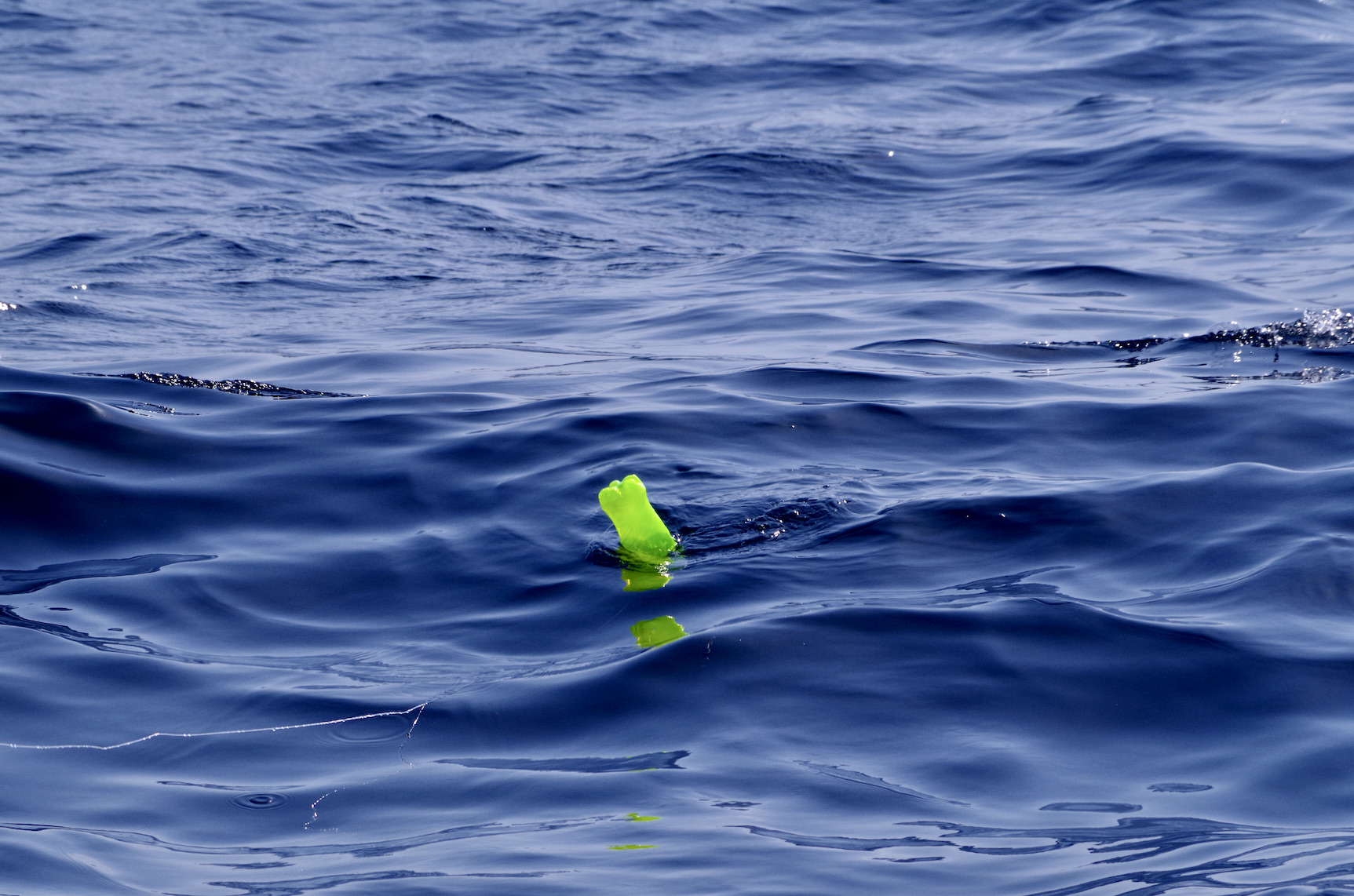Lord Clinton: it is with sadness that I have to report that Lord Clinton, the president of our Association, has passed away after a short illness. Lord Clinton was very much the brainchild in the setting up of our Association in 1979. He was chairman for five years and has been President ever since. He was passionate about our river, attended committee meetings whenever his busy diary permitted and always gave sound advice when asked.
Change of Name: those members present at the agm voted in favour of the proposal to change the name of the Association to Torridge Rivers Association. The previous name was rather long and often caused confusion for those paying their subscription by BACS. Your committee discussed at length a possible name change and considered that the new name would represent not only our fishery interest but also our support for the health of the river and all the catchments.
http://www.rivertorridge.org.uk
The AGM: was held at The Half Moon Inn on Friday 22nd March. 26 members attended. The Chairman welcomed everybody, especially Ewan Wallace (Devon Wildlife Trust) and Sam Fenner (North Devon Fishery Enforcement Officer). Ewan Wallace, the project manager for the North Devon Improvement Project, outlined the work of the Trust with particular reference to our catchment. Sam Fenner explained that there were now only three fishery enforcement officers for Devon and he alone was responsible for the Torridge Taw and Lyn catchments as well as the estuary. Sam stressed the need for our support: we must be the eyes and ears of the river and to let him know of any concerns.
The Salmon Hatchery: for the first time for four years we were able to operate the hatchery again. In order for the EA to give us permission to use the fish pass at Monkokehampton Weir to trap our broodstock we had to provide a very detailed risk assessment document, take part in a training day as well as purchase a hoist and harness. Trapping the broodstock was not easy but we eventually caught up five hens and three cock fish. Four of the five hens were stripped and 22,000 fertilised eggs were laid out in the incubating trays. Despite the problems of warm water (often as high as 10C) and silt covering the eggs, hatching was successful and over 20,000 swim-up fry have been stocked out in the headwaters of the Torridge, Lew and Okement. Izzy Moser from the Devon Wildlife Trust advised on the stocking sites and helped with the stocking.
100% salmon catch and release: once again the EA has deferred making a decision. However with stocks of salmon and sea trout at all time low your committee strongly recommends that all migratory fish are released without where possible removing them from the water.
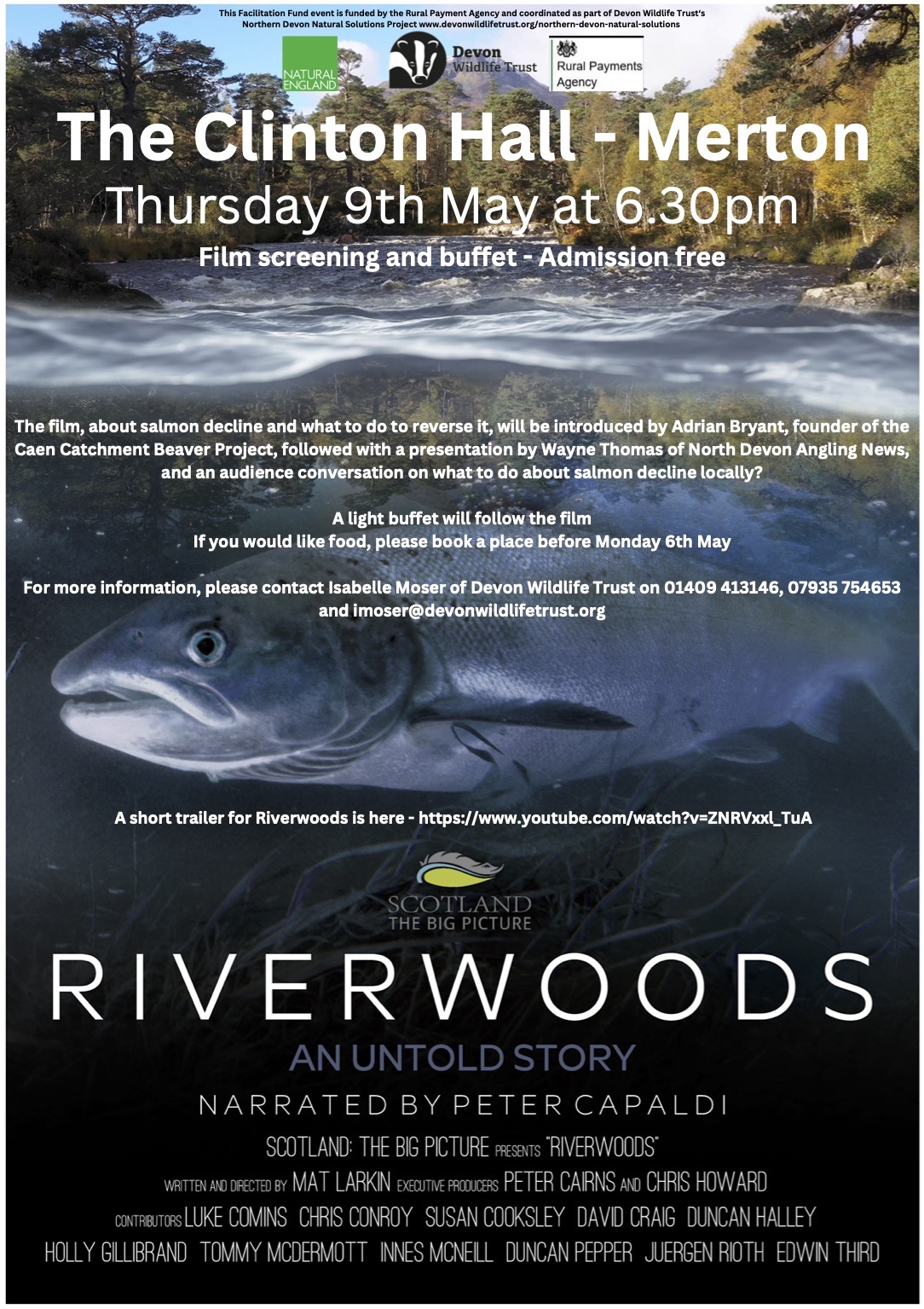
For those who missed the Riverwoods evening at the Half Moon there is a chance to see the film and another talk. See poster above.
The season so far: the river was bank high on 1st March and has been in spate for the whole of the first month. Salmon have been seen both at Beam and Madeira. When the river finally settles there will be a good chance of a fresh spring salmon.
The Egg Box Dinner: Saturday 28th September at The Half Moon Inn. Book early with The Half Moon to avoid disappointment. Tel: 01409231376 e-mail: [email protected]
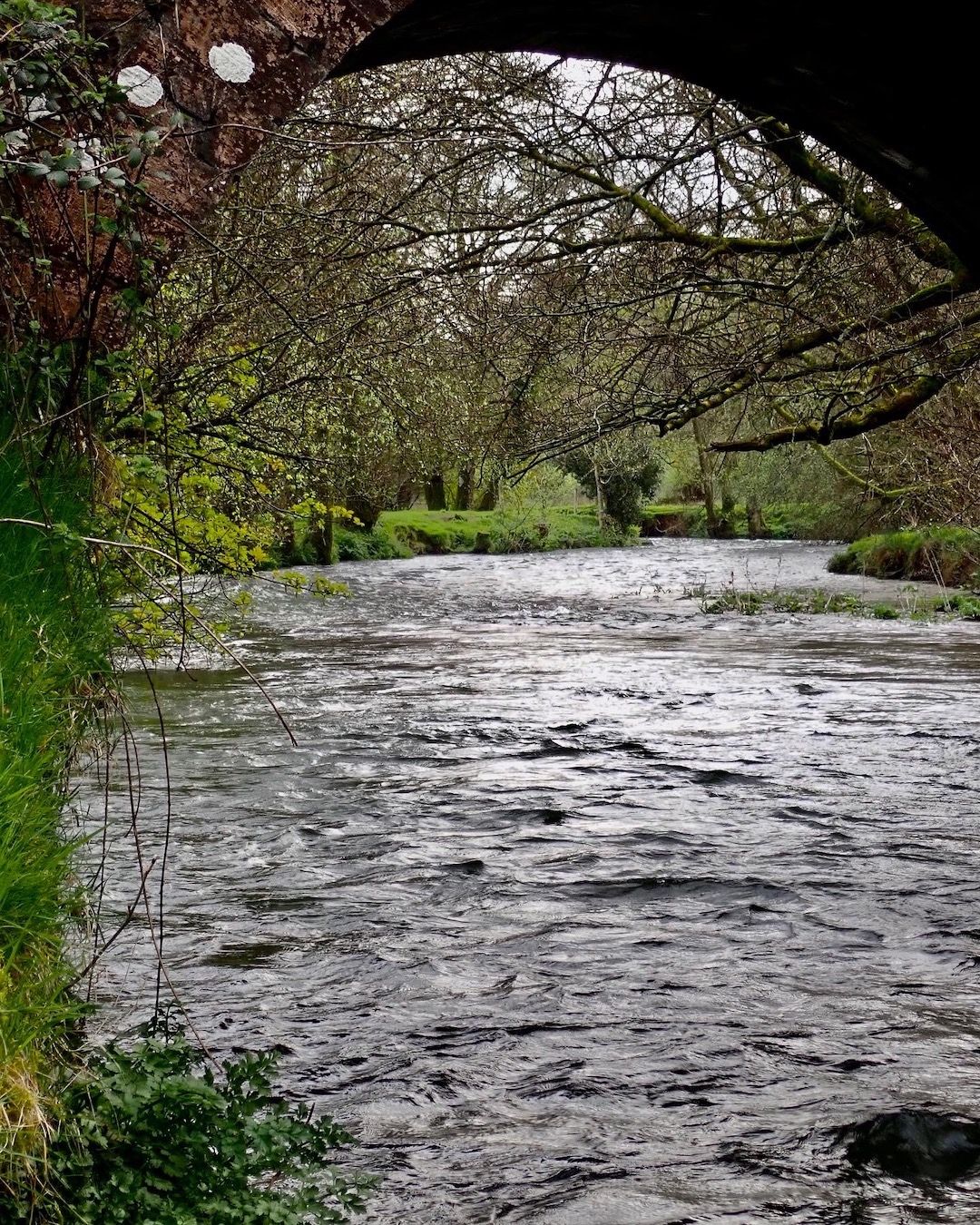
It seems to have been a slow start to Spring this year with relentless rain resulting in bank high rivers. Even the Upper reaches are pushing through hard making fishing challenging.
With the rivers eventually dropping back and running clear I headed out to enjoy a couple of hours chasing wild browns. It was delightful to revisit the familiar river valley as new born lambs frisked in the fields.
The river was racing past high and clear as I walked the bank looking for slacker water to drift my heavy nymphs.
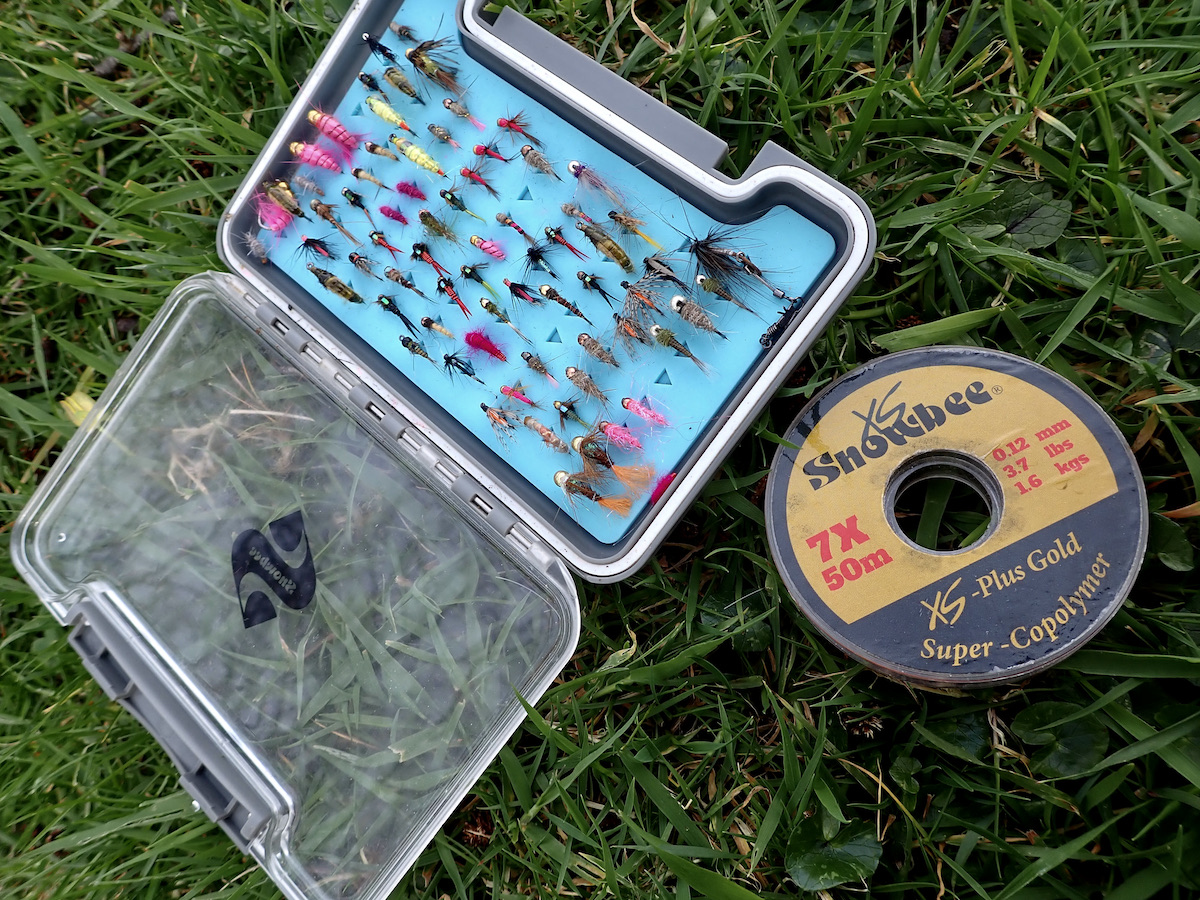
It was good to feel the cool water as I focussed on the sight tip of the leader. In the first pool I fished a small trout was on briefly before wriggling free.
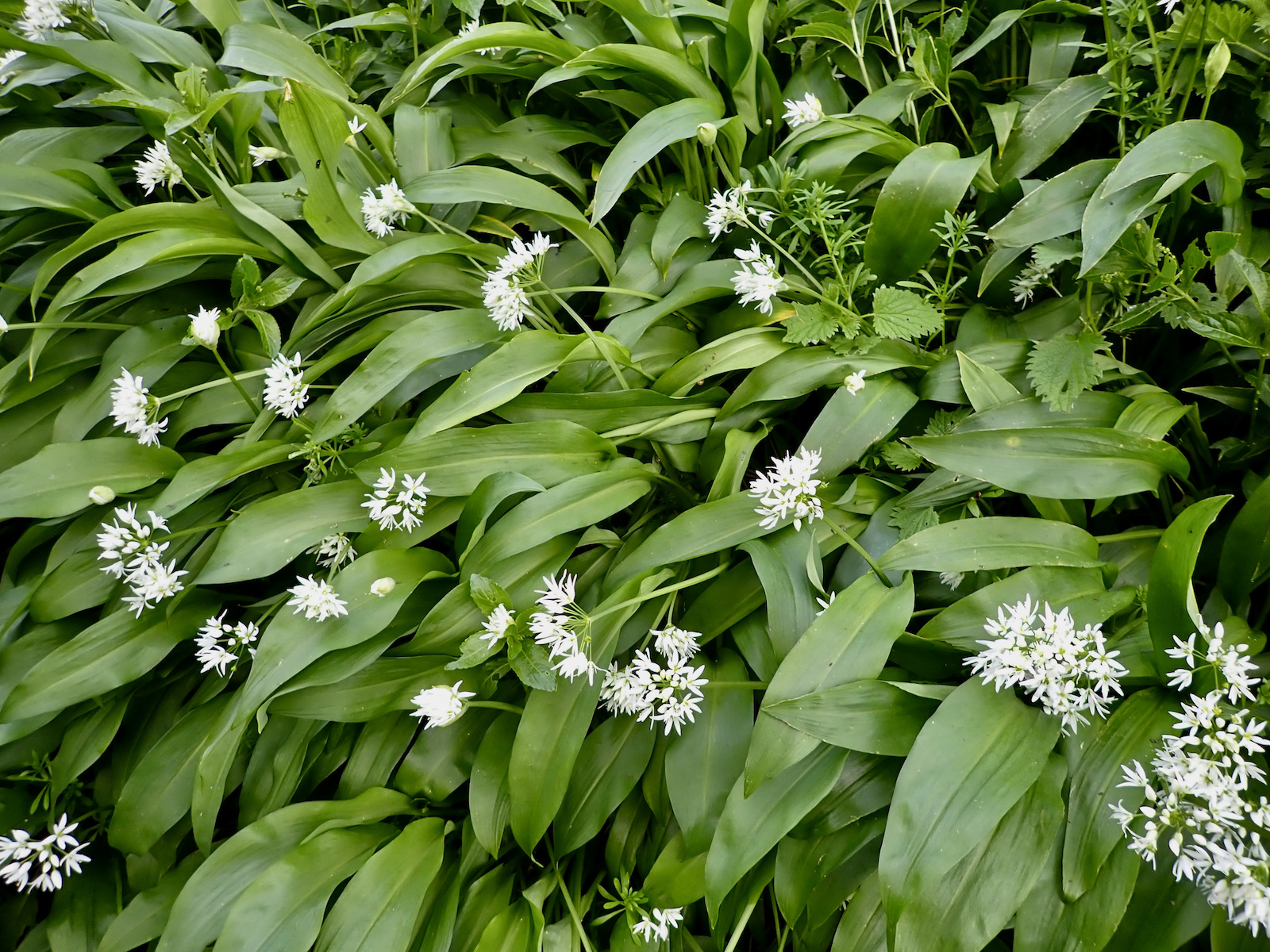
I moved on relishing the smell of wild garlic in the fresh spring air. Chiff Chaffs song drifted through the valley and early bluebells were in bloom.
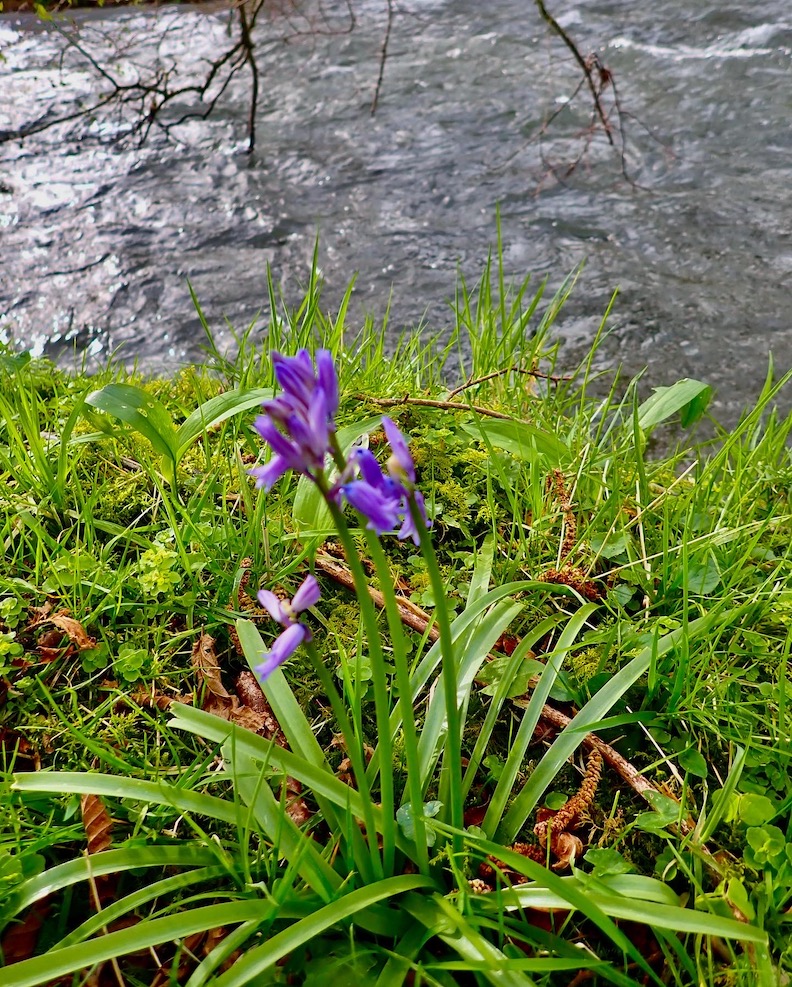
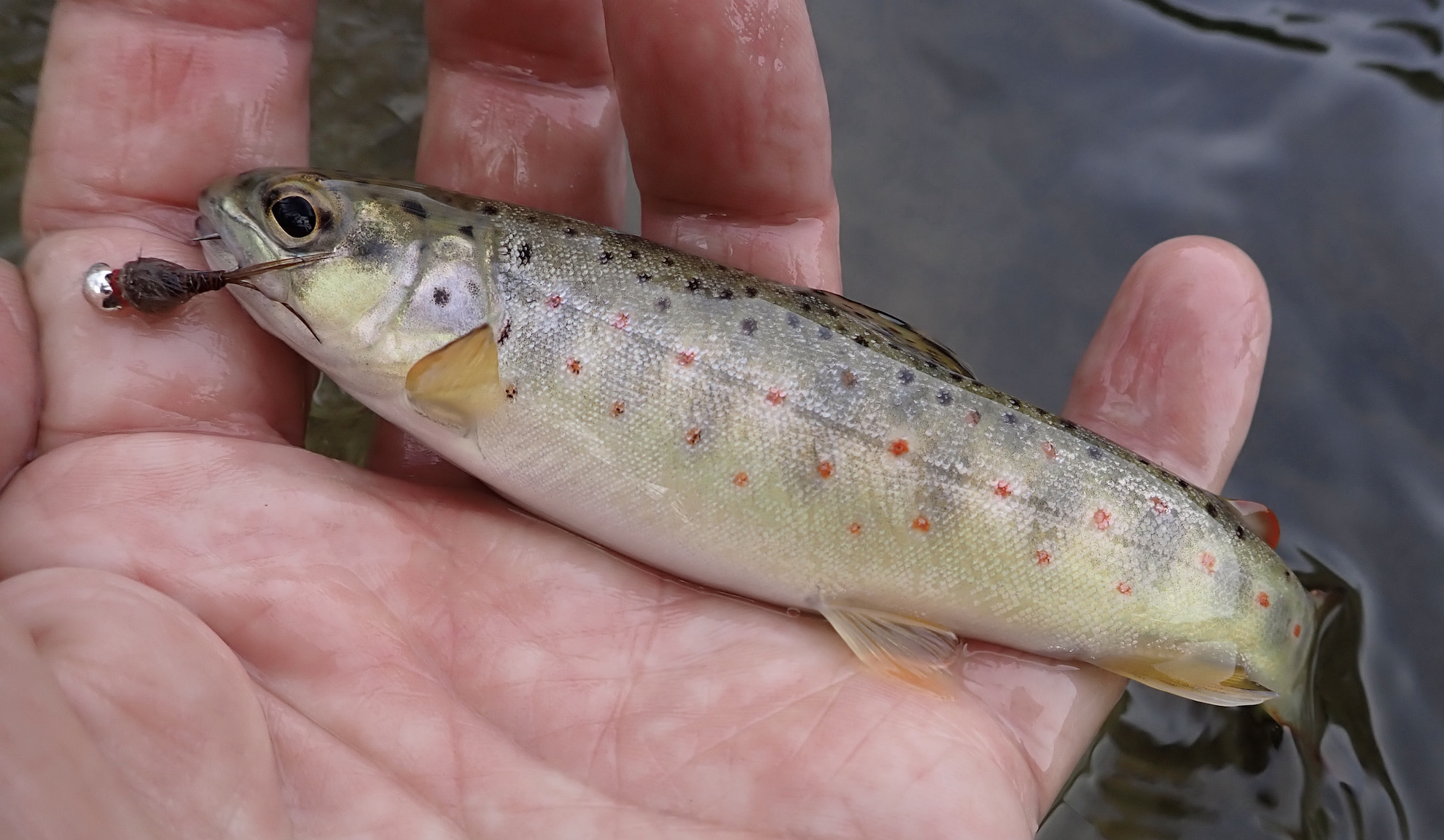
I worked my way upriver searching for trout enjoying the spirited tussle that even the smallest trout gave on the light tackle. A good fish of perhaps 10” came off its crimson flanks glimpsed as the rod flexed.
I drove away contented with a brief reacquaintance with the river.
A few days later I joined Wistlandpound Fly Fishing Club at Bulldog Fishery. As we threaded the line through the rod rings the lake lay mirror calm fresh green trees reflecting in the calm water.
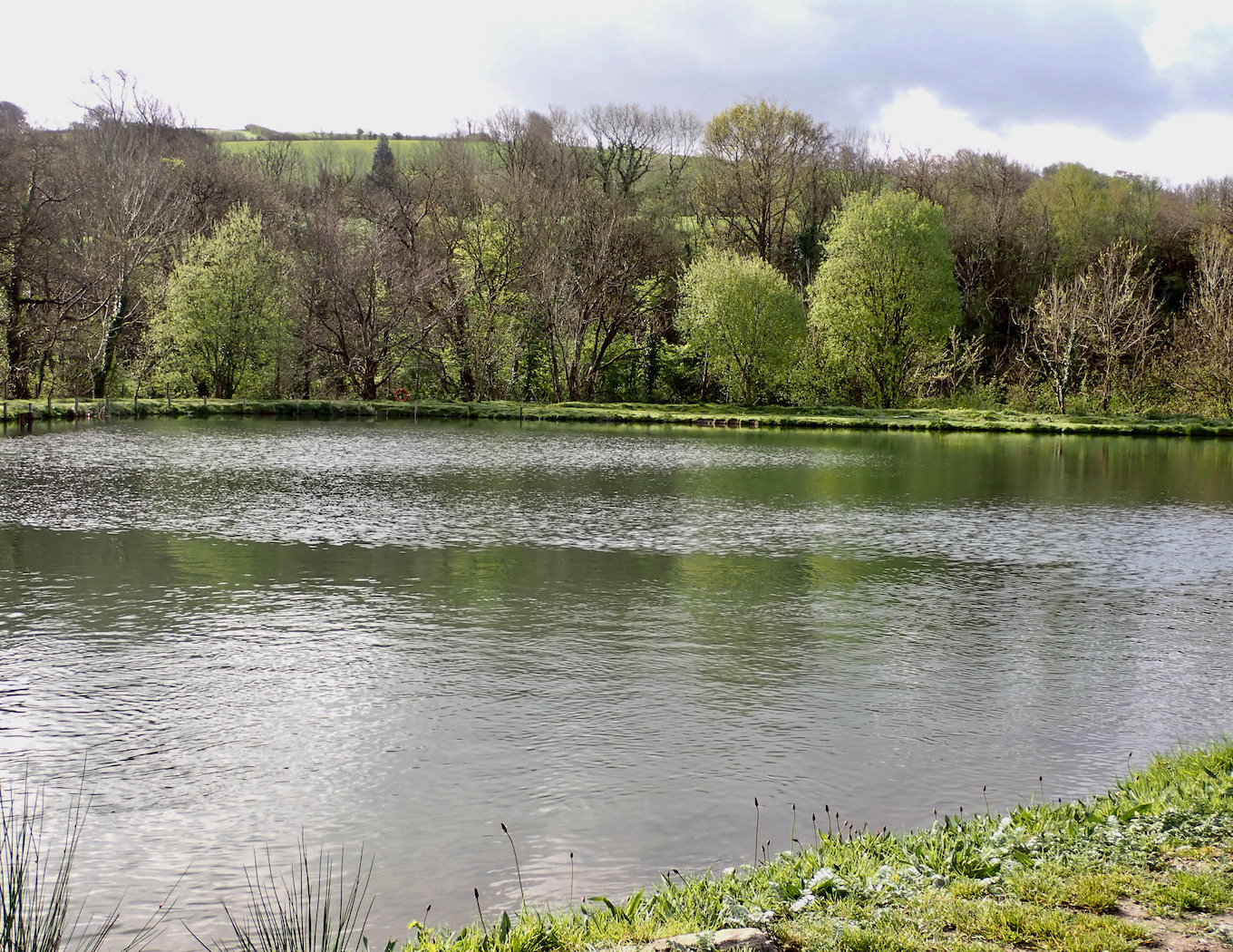
We chatted for a while before heading to the water’s edge. The water was gin clear and I decided to adopt an imitative approach presenting a PTN and buzzer beneath a foam buzzer that acted as an indicator.
As I worked the flies slowly through the water I caught sight of a large bird of prey. After a few moments I was able to ascertain that I was witnessing the rare and exciting view of an osprey. These majestic birds migrate North from Africa each Spring and are occasionally glimpsed over large lakes and reservoirs.
In addition to the rare osprey it was reassuring to glimpse swallows and martins arriving in the valley, a true sign that spring has arrived.
My quest for trout proved harder than expected with no indications or pulls. Fellow club member Andre Muxworthy had caught a brace of fish and I wondered what he had been using.
I changed to a gold headed damsel nymph on the point with a longer leader and moved to another area of the lake.
Andre walked over for a chat after completing his three fish bag and generously shared information as to his choice of fly.
Fishing close to where Andre had enjoyed success my line zipped tight and a decent fish was momentarily hooked before shedding the hook.
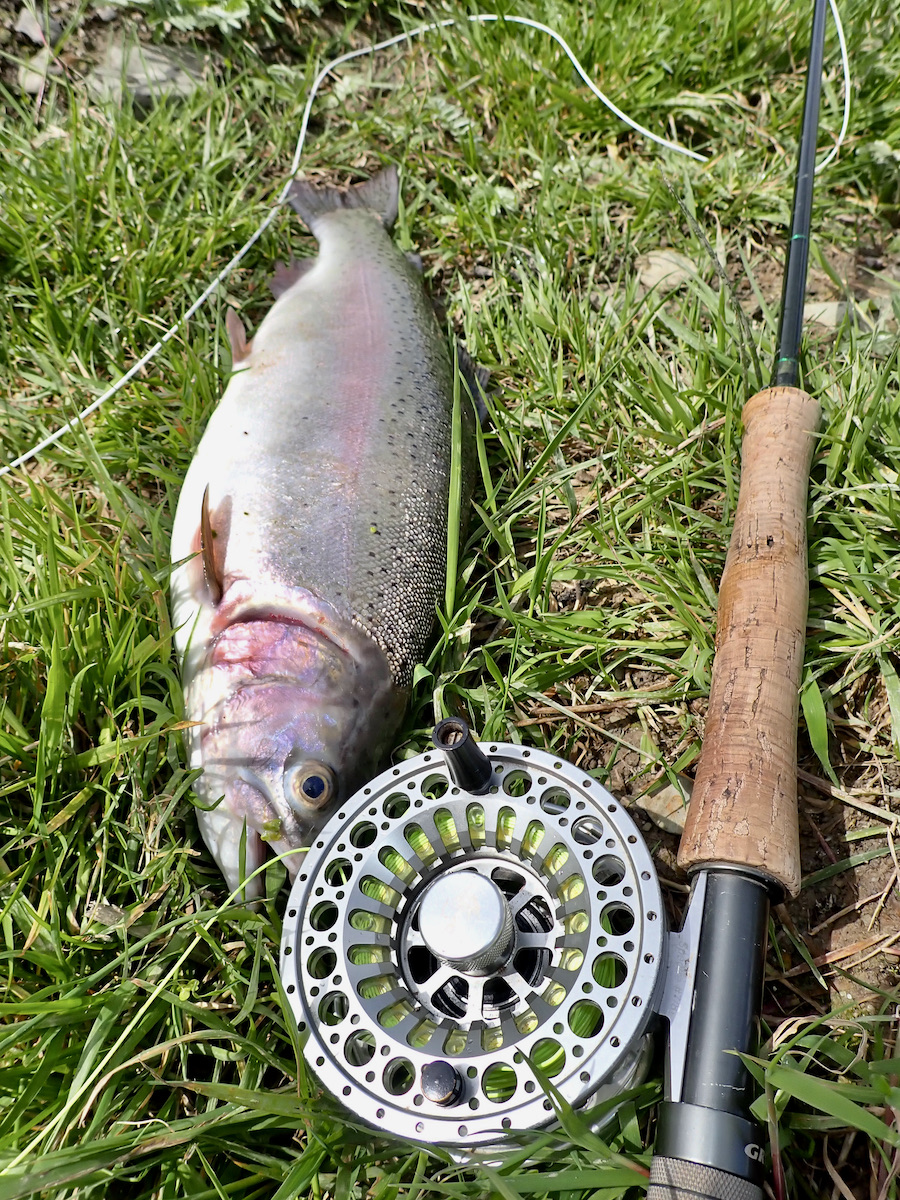

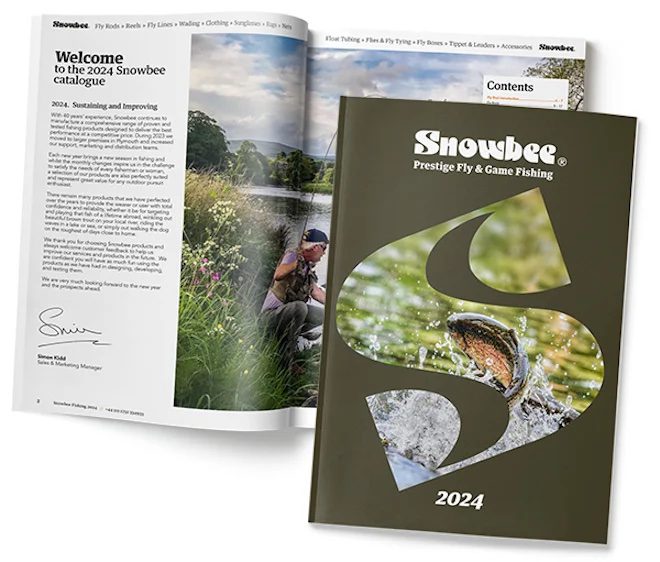
As is often the case a few casts later a hard fighting rainbow was brought to the waiting net. The next fifteen minutes I enjoyed several near misses as trout followed the fly their shadowy forms visible deep down in the clear and sheltered water. A spartic of a couple of pounds seized the fly and was netted after a pleasing tussle. A couple of casts after landing this fish I watched the dark shadow of a trout following my fly, I paused allowing the fly to sink slowly before twitching it teasing the fish as it moved towards it. The fish appeared to lose interest and I again let it sink. The trout promptly followed it down and I saw its mouth open, lifting the rod briskly I delighted in the life on the line. A tiger trout its vividly patterned flanks completing a pleasing three fish bag.
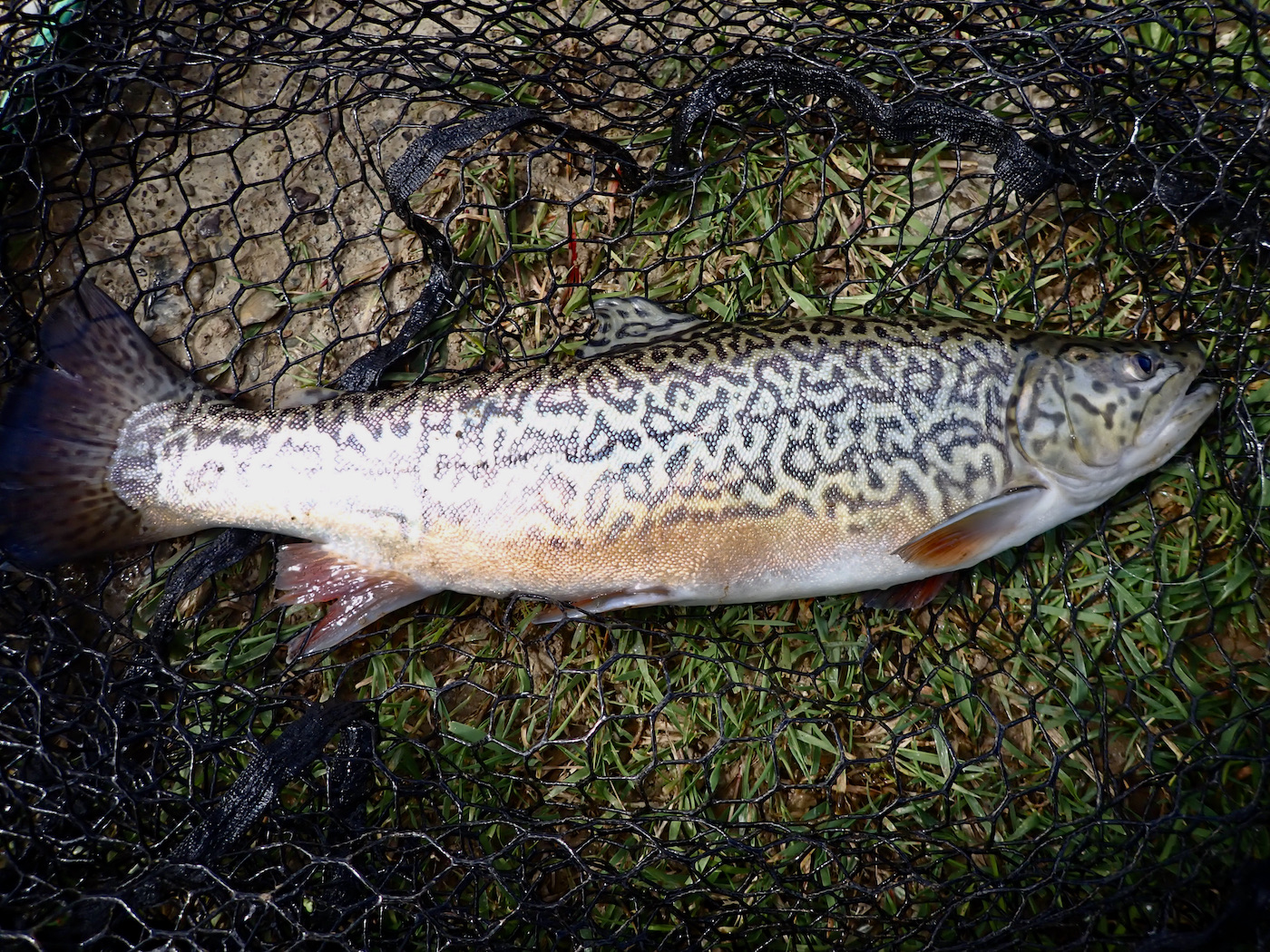
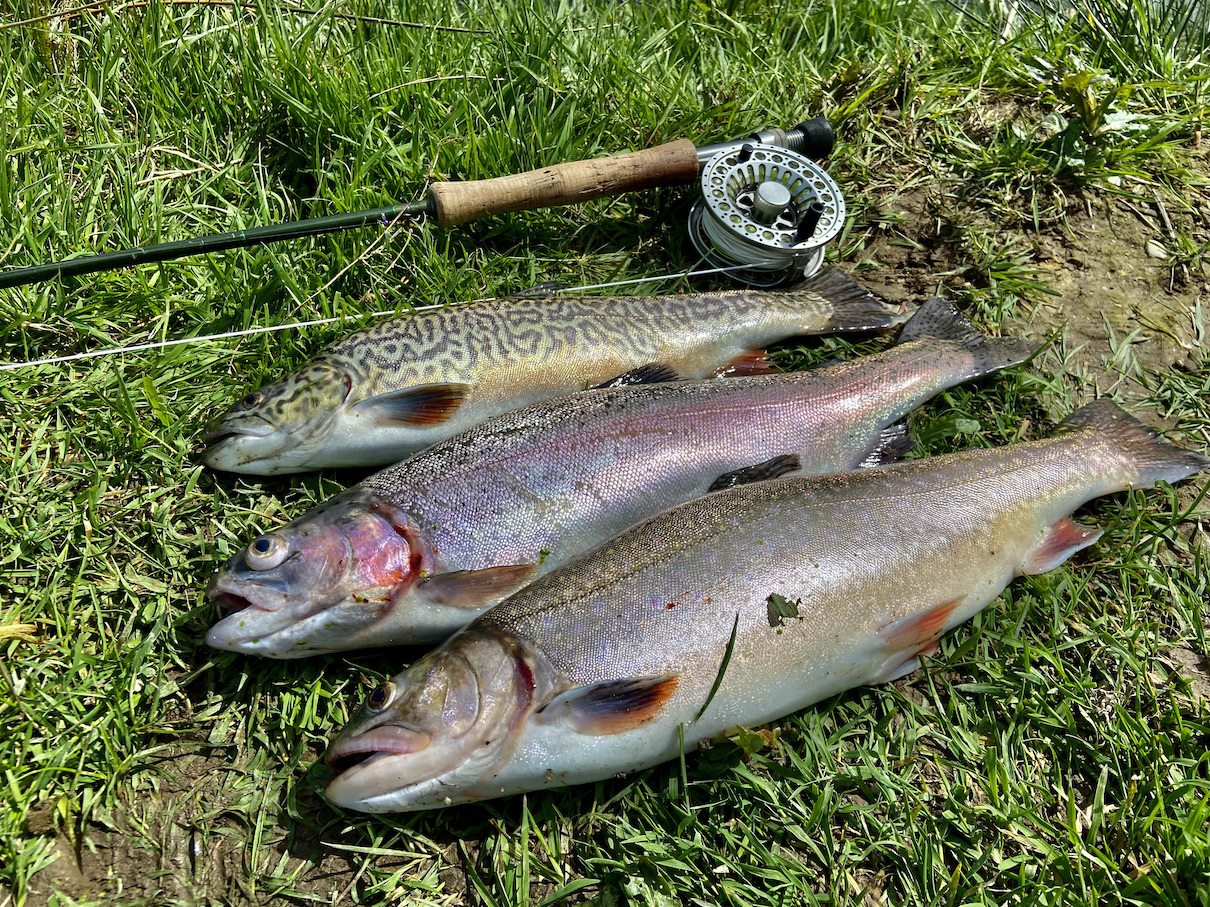
Andre and I watched on as fellow club member Colin Combe hooked into his final fish of the morning.
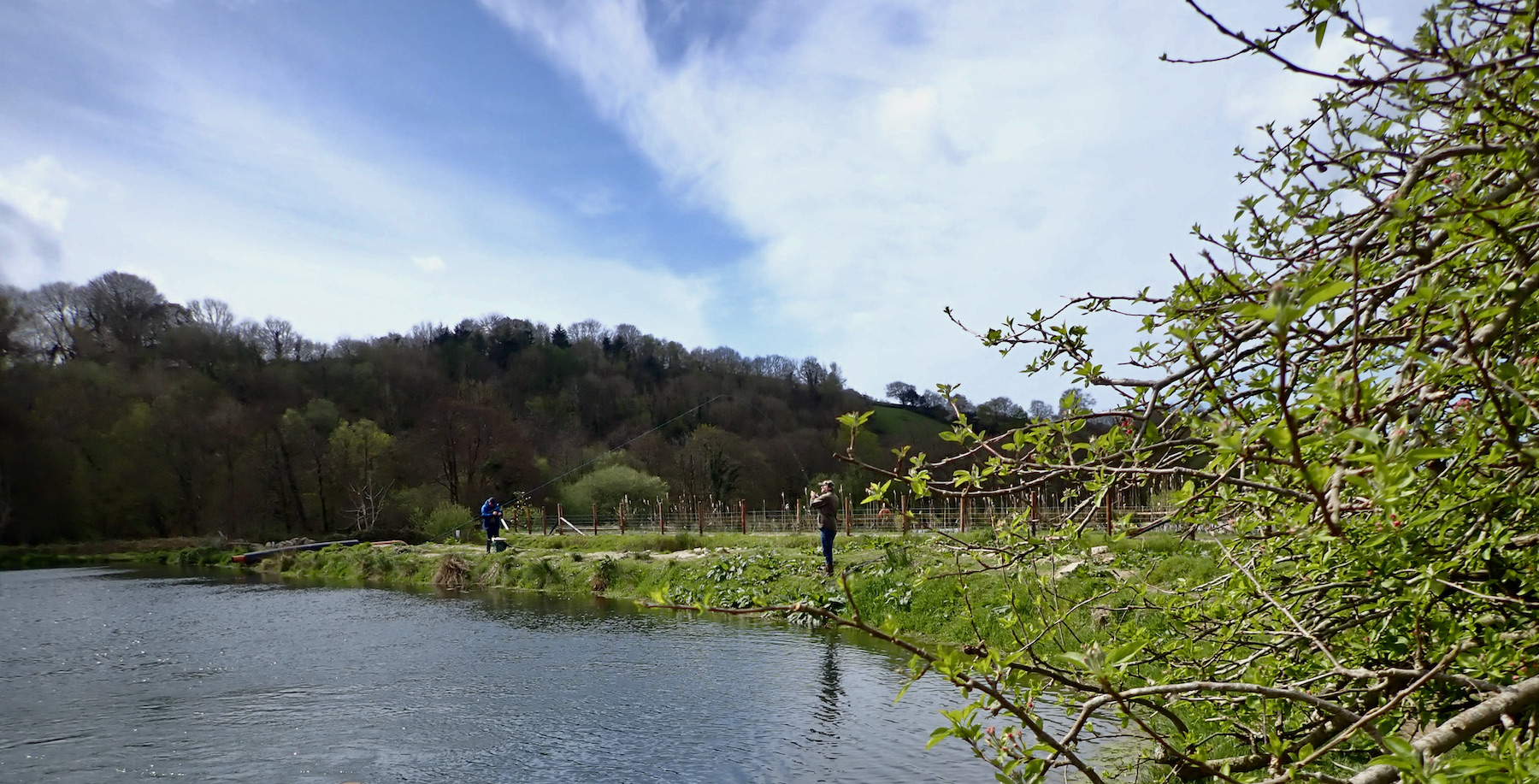
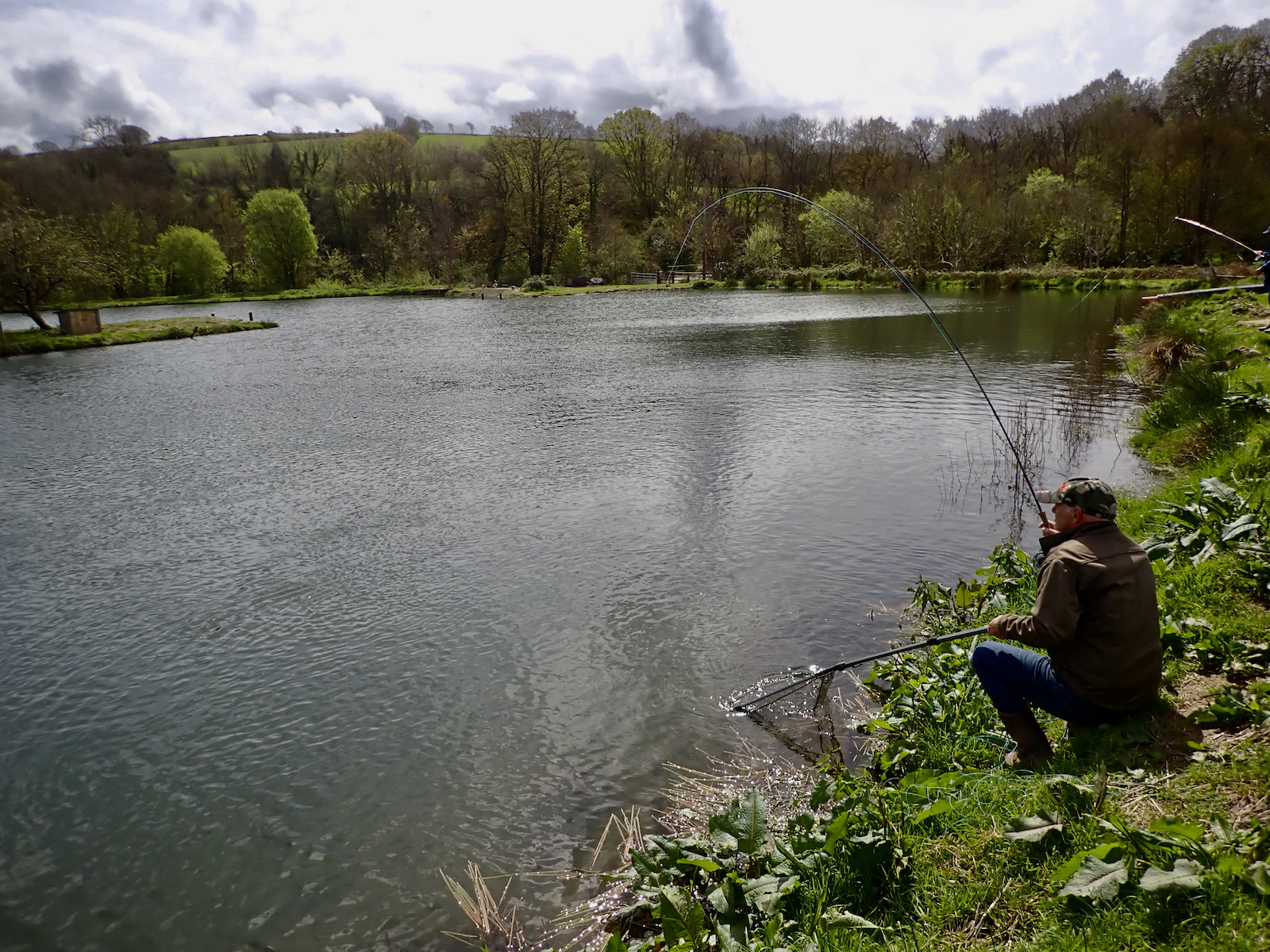
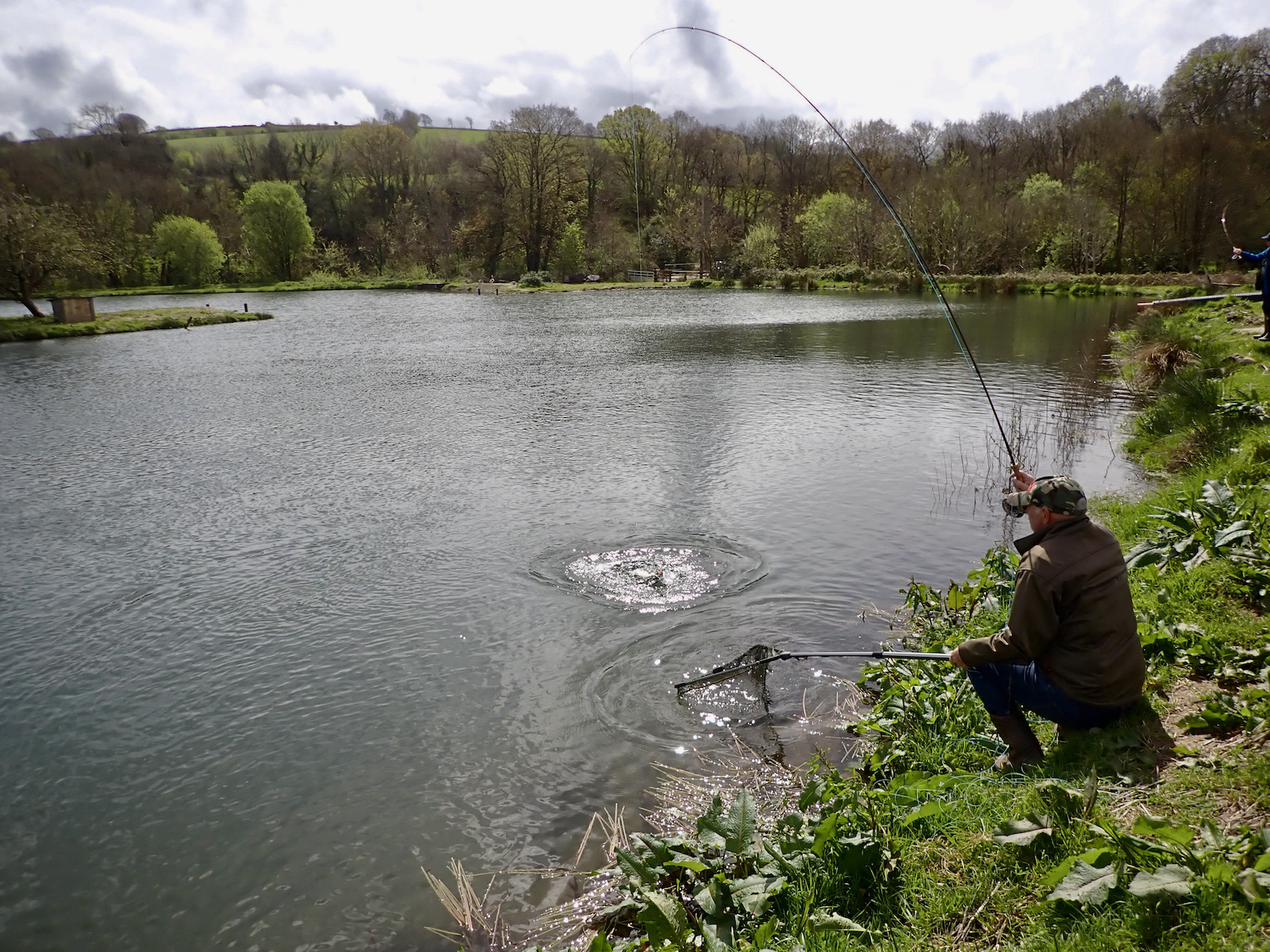
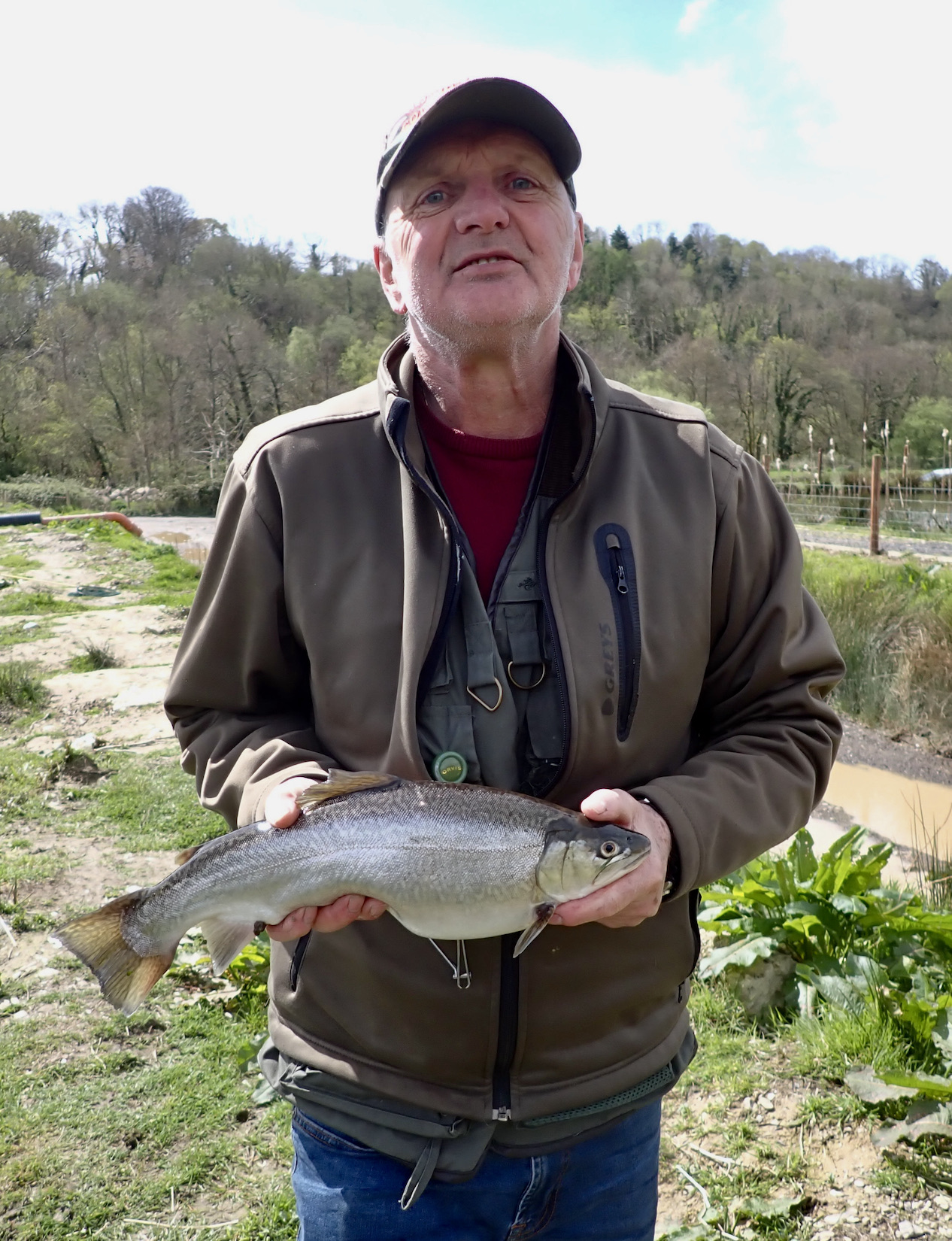
A pleasing spartic of a couple of pounds that would give him a total bag weight of 9lb 4oz and most likely first place in the competition. Andre’s three totalled 7lb 13oz and mine 6lb 7oz. One club member remained fishing when we left so hopefully he went on to catch his bag.
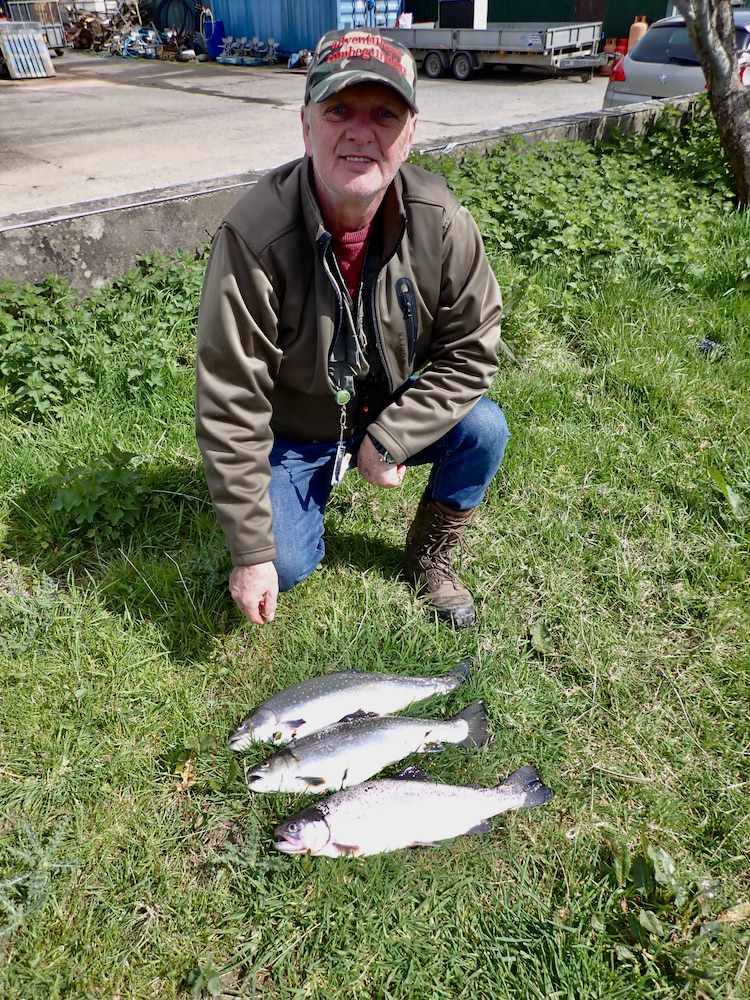
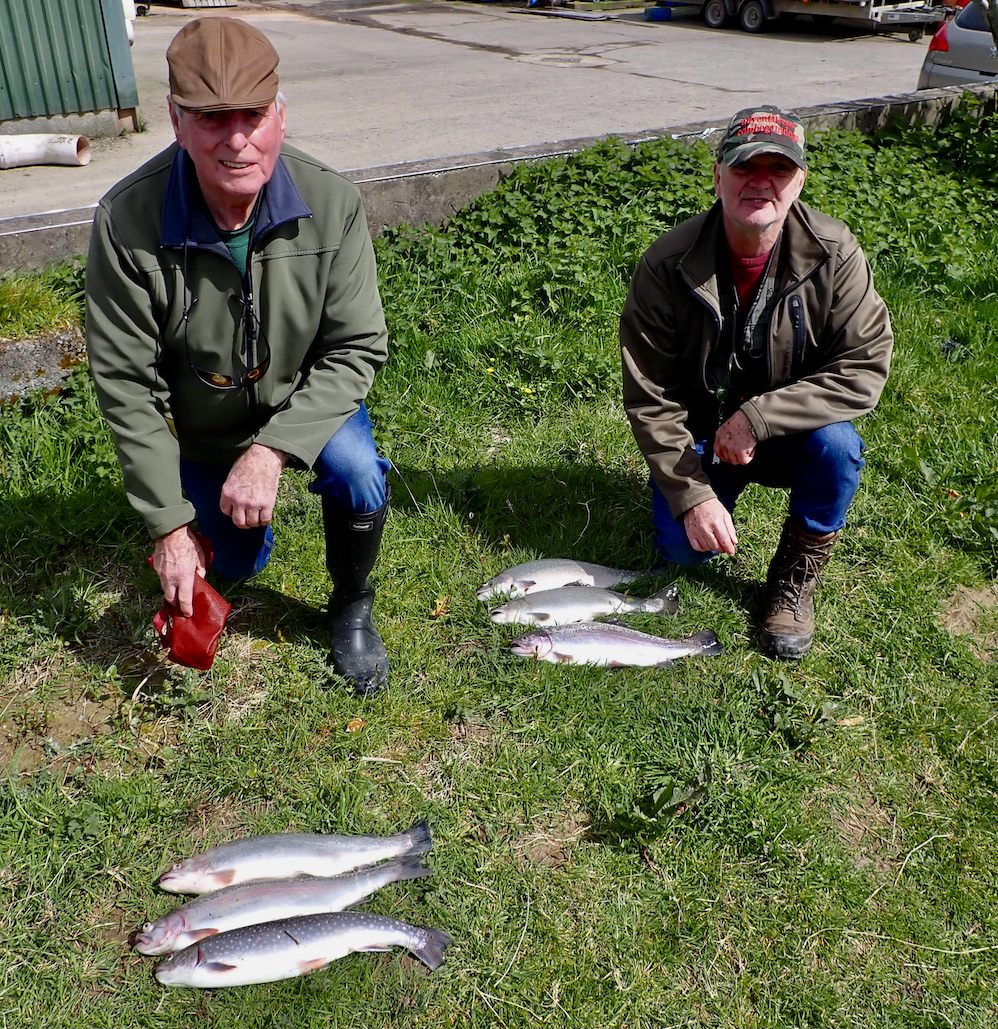
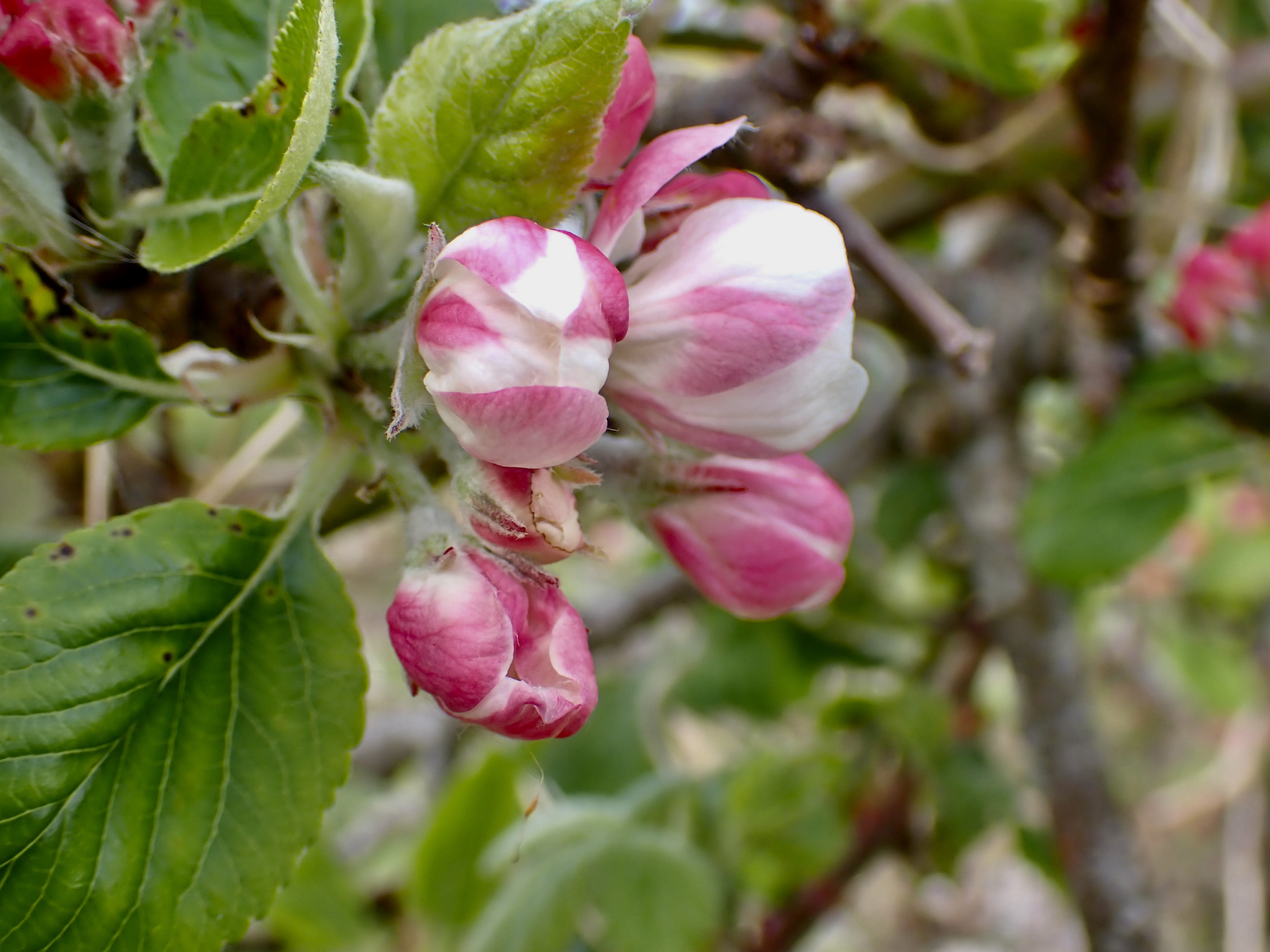
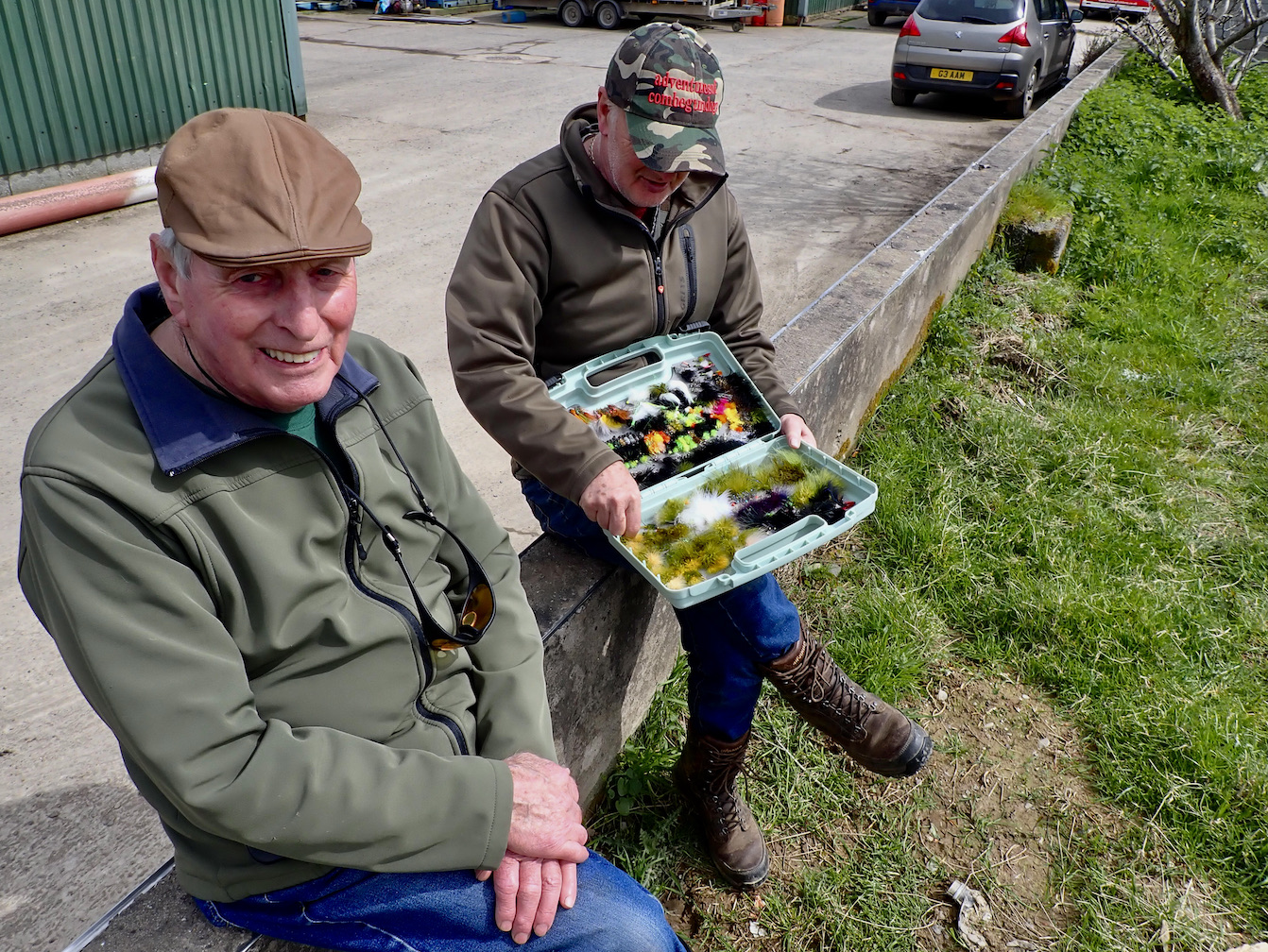

Lyme Disease: Bloody Patients And why they’re always wrong.
https://fishrise.substack.com/
Many thanks to Richard Wilson for sharing his wise word from his substack musings.

The first time I didn’t have Lyme disease was back in 2016. I took a tick bite with a classic circular Lyme rash into my local doctor’s surgery and was told it wasn’t Lyme because it was the wrong sort of round. It wasn’t a bullseye.
There then followed several years of not having Lyme disease, despite symptoms that suggested otherwise. So I was sent for scans, endoscopies top and bottom and saw specialists in everything except Lyme.
Controversially, I wondered out loud about Lyme (bloody patients with Google, eh?) and, over the years, asked for 2 tests which came back negative. Nobody told me how inaccurate the Elisa test can be (15-25% false positive/negative).
Then, early last year, my aching guts put me in front of 2 different gallbladder specialists. Why two? Because our chaotic health system sent me to 2 consultants, about a week apart. Both agreed that my gallbladder was full of stuff called sludge which explained all my ills. So it was true: I didn’t have Lyme Disease (again). I had sludge.
Unfortunately, the only way to get it removed, without waiting several years for a National Health Service operation, was to pay. So I saw a private surgeon, who confirmed that my bolshie gallbladder was indeed to blame for all my ills (see! no Lyme!) and, for the price of a small car, duly whipped it out.
I woke up post-op with no gallbladder, considerably poorer and with a full set of Lyme symptoms.
A few months later I paid, privately, for a 3rd Elisa Lyme test. This one came back positive. OK, almost 7 years had passed, but it seemed urgent to me. Although, as I soon learned, not to my healthcare providers. Which is where my problems now coalesced. My doctor’s surgery is guarded by reception staff whose mission is to keep the Bloody Patients at arm’s length. They told me that because I had arranged the test privately, I couldn’t see my own doctor and would have to wait 30 days for a phone call with somebody else’s. The official Lyme guidelines say that Lyme should be treated immediately. So emails were exchanged which included words like ‘unethical’ and ‘breach of guidelines’. My doctor intervened, a blood test was booked for the next day, and within 48 hours I had another positive Elisa backed by a positive, confirmatory Western Immunobolt. Suddenly I had Lyme. It was official, something would be done and I was going to get better. The sense of relief was enormous.
Ah. Not quite so fast, pal.
I was prescribed 4 weeks of Doxycycline and then 4 weeks of Amoxcyline. My symptoms subsided, somewhat.
Within weeks it was all back and worse than before. My blood pressure went through the roof, I was covered in a skin rash and my heart was intermittently, rhythmically deranged. I felt like shit most of the time, and it could get especially bad at night. Sleep became elusive. Since then my blood pressure has dropped and become erratic while my heart is more regular, but little else has improved.
My doctor is a decent, overworked man who I rather like. He referred me to the Infectious Diseases unit at the Big City Hospital. Sounds good doesn’t it? Experts. What could go wrong?
It turns out that this specialist unit seems to have a Lyme Guru romper room where they share spliffs and blend mind-wave communications with milk-shake flavours.
These experts reached out to me via the cosmic aura of the aether-net. They didn’t need to see or talk to me. They’re so good at this that I didn’t even notice they’d made contact. Anyway, they inhaled long and deep, and then they sent this to my Doctor:
“Mr Wilson has had adequate treatment for possible Lyme disease and further antibiotics would not be beneficial. There is no need for our service to see him. If the referral to the Care of the Elderly Team does not help then please consider referral to the ME/CFS service.”
This is real. Seriously. It’s not a joke. The appropriate anagram is: What a bunch of Fickwuts. Curiously, there are no amusing anagrams of the word ‘morons’. And how was I to know that if you ask a gaga old geezer (me) for an anagram of 2 random words like S**t*m**d and Hospital the answer would come back Medical and Negligence. Crazy! Bloody Patients, eh?
I think there are 4 reasonable comments they could have made, but didn’t:
First, that the bacteria are dead and I’m suffering from the damage they did. It’s going to be unpleasant, but my condition will improve. 2nd, I’m experiencing an overreaction by my immune system. 3rd, tick bites very often deliver bacterial co-infections. Let’s test. The 4th is a possibility acknowledged by leading medical academic institutions: The Lyme bacteria may have survived. With time, the little bastards can dig in deep and are very hard to get at (medically). If so, further antibiotics are suggested, even by our regulatory authorities.
Unfortunately, the Big City space cadets have now tied my doctor’s hands. So I’m back on the referral treadmill. I have 3 new appointments upcoming in the next month or so:
It should all be funny. But isn’t and I’m stuck.
A lot of people have emailed me to say I should fly to the US and see a specialist. I would, but it’s very expensive and the gall bladder surgeon’s partner is now driving around in my savings.
Bloody Patients, eh? I really should be more grateful that, for example, I haven’t got Lyme Disease. And, in the last 8 years, I only had it for 10 weeks. Phew!
Don’t you just love a happy ending?
Ilfracombe Aquarium is located on Ilfracombe Pier and offers a fascinating glimpse into the world beneath the waters surface. There are many fish to seen that live within Ilfracombe Harbour and along North Devons coast. There are also insights into local freshwater eco systems and the creatures that live within. An ideal place to visit in conjunction with a fishing trip to Ilfracombe Pier where members of Combe Martin SAC club recorded over thirty species during February and March of 2024.

Ilfracombe Aquarium consists of Local Aquatic Exhibits, Pier Café & Gift Shop. It is a much loved, award winning, and ever evolving, all-weather, family fun, educational attraction. It is located in the Old Lifeboat House on the pier. Conveniently located, it is surrounded by Ilfracombe’s picturesque & historic harbour which is home to Damien Hirst’s Verity sculpture and 14th century St. Nicholas’ Chapel. Ilfracombe town is located on the dramatic and spectacular North Devon coast. It is 20 mins. drive from Barnstaple, 10 mins. from Woolacombe. It is set within the North Devon Area of Outstanding Natural Beauty (AONB).
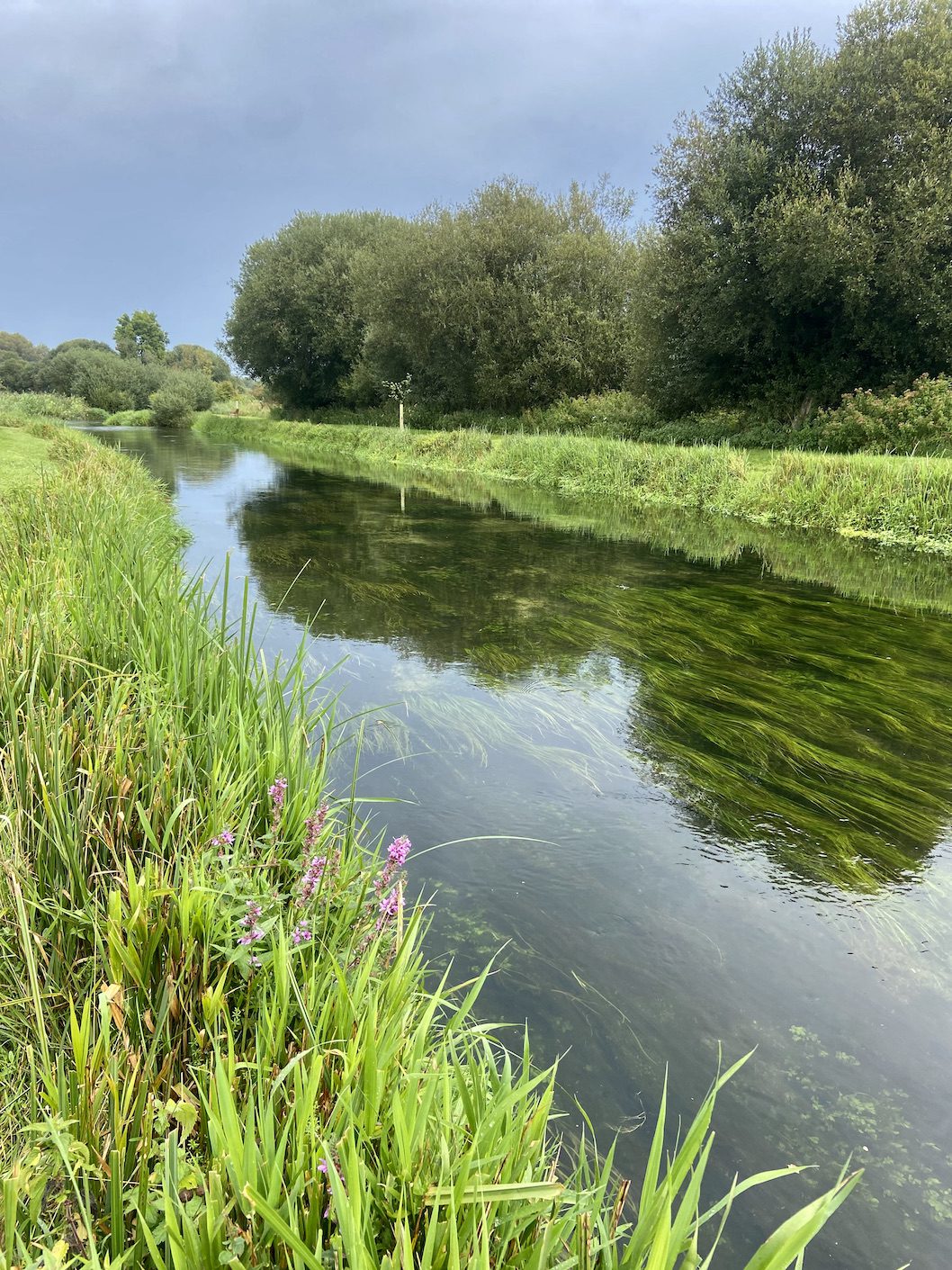
Communication and collaboration: The key to environmental solutions?
Set to take place at Morden Hall on the River Wandle, London, on the 21st May 2024, The UK River Summit & Festival is an event which promises to be a platform for collaboration and communication to improve our river health.
Bringing together leading international, national and local environmentalists, policy makers, businesses, individuals, brands, and members of the public who share a desire to work towards a more positive future for our rivers, this event offers environmental stakeholders the opportunity to build relationships and network while celebrating our rivers, engaging in community-led initiatives, and river experiences.
Following the success of the first two River Festivals in France (2022, 2023) and the inaugural UK River Summit on the River Test, a famous chalkstream in Hampshire, in June 2023, this new event now moves to the River Wandle, a unique urban chalkstream which celebrates a rich historical and ecological importance.
Claire Zambuni, Founder of The River Summits & Festivals said “Morden Hall, London, situated on the River Wandle, is a fine venue to host a Summit about the state of our rivers in the U.K, as it is a location which serves as a reminder of how nature, river wildlife, and urban life can peacefully co-exist. It is also perfectly positioned as an accessible oasis in a bustling city, meaning we are able to welcome a much wider audience to this event. We invite the public to learn first-hand the issues our rivers are facing and distell our anger to make a positive change.”
As we navigate the challenges of a rapidly changing planet, the key to environmental progress lies in facilitating continuous dialogue between various players – from government officials and NGOs to businesses and the public. This event aims to bridge these gaps. Attendees will gain informed knowledge from key environmental stakeholders, be able to ask direct questions, work collaboratively to find solutions, and celebrate our rivers.
Date, Location, and Schedule:
Tuesday 21st May 2024 at Morden Hall, South-West London
Event opens at 9.30am
• The UK River Summit Panel begins at 10:15am
• Lunch at 12:30pm
• Afternoon activities from 1.30pm – 6pm
Summit Panel Speakers include:
• Penny Gane – Head of Practice at Fish Legal
• Dr Bella Davies – CEO at South East Rivers Trust
• Shaun Leonard – Director at Wild Trout Trust
• Jim Murray – Actor and Founder of Activist Anglers
• Dr Jack Hogan – renowned local historian and member of The Wandle Piscators, The Fly
Connect Don & South East Rivers Trust.
Afternoon actvites include:
• River restoration and hands-on outdoor experiences with South East Rivers Trust, Fishing for Schools, the Wandle Piscators, The National Trust and Orvis UK
• Panel discussion “Effecting Policy” including Penny Gane, Head of Practice, Fish Legal, Stuart Singleton-White of Angling Trust, Bobby Dean, Liberal Democrat Candidate for Carshalton & Wallington, and Shosha Adie of ENDS Report
• “The Freshwater Emergency: from scarcity to abundance” River Don UK panel chaired by CEO James Wallace, and speakers including Lawrence Gosden of Southern Water, Lila Thompson of BriDsh Water, Feargal Sharkey, key policy makers and investigators
• “The History of the River Wandle” talk with Dr Jack Hogan
• Wandle Industrial Museum: textile printing demonstration and display of works by William
Morris, Kilburn, and Liberty’s
• “Wandle: A River at Risk” film screening with panel of cast and crew including Bobby Dean,
Liberal Democrat Candidate for Carshalton & Wallington
• “Hydrotherapy” film screening by Friction Collective
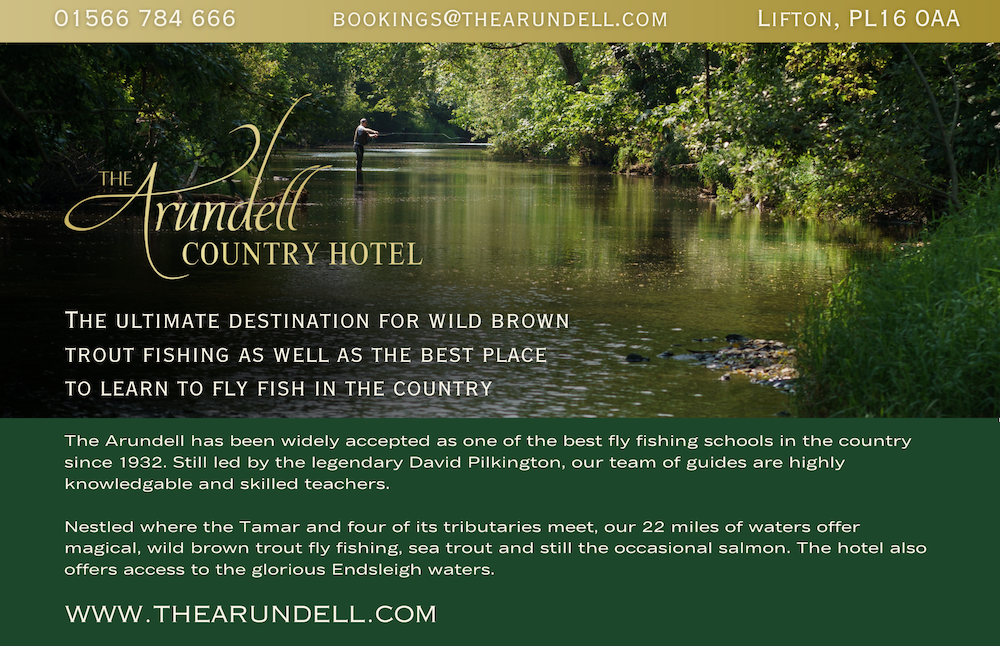
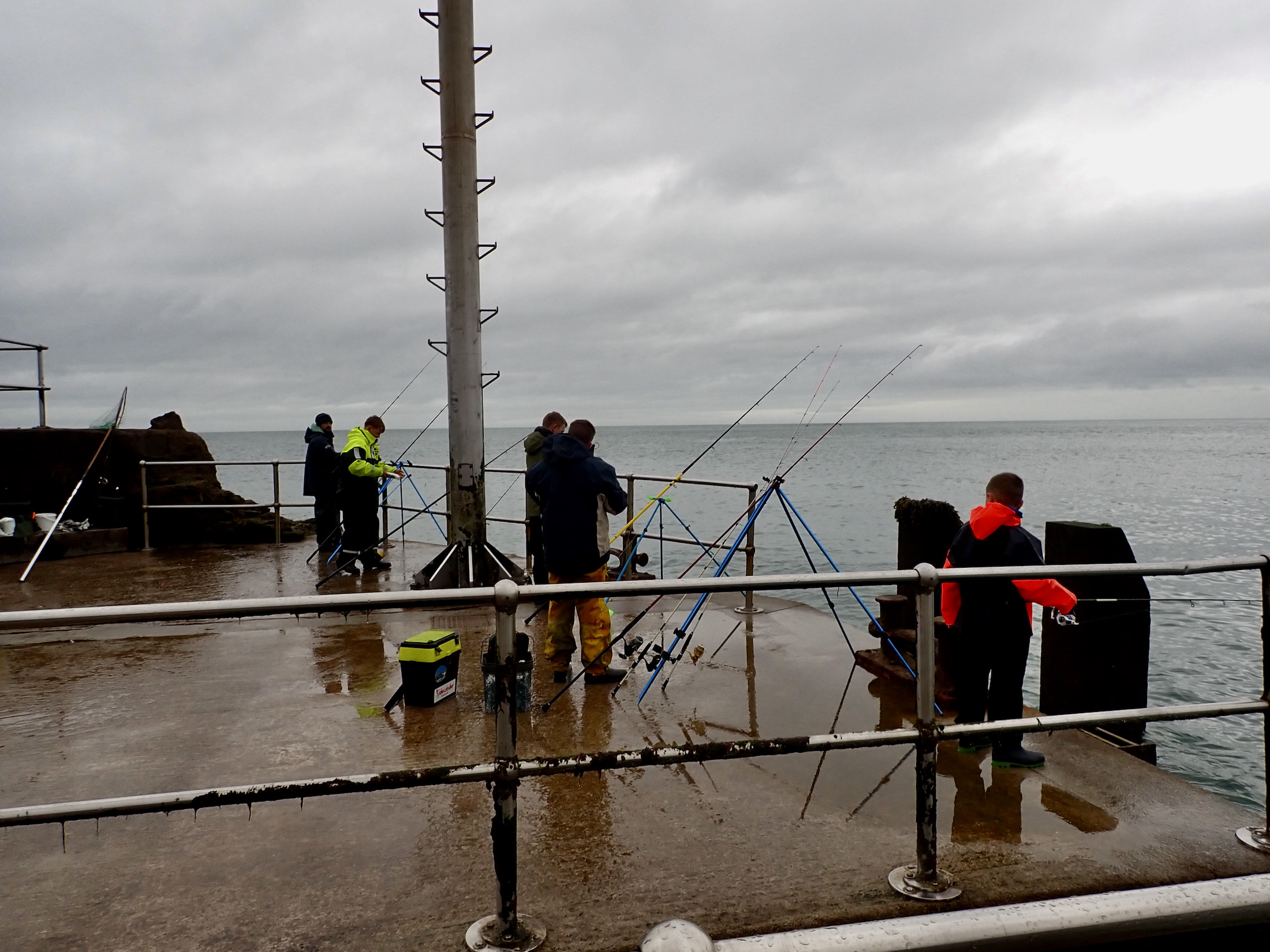
Close to half a dozen members of Combe Martin SAC met up at Ilfracombe Pier for the second pop up fishing session of the Ilfracombe Harbour and Fun Species League. The ongoing dismal Spring weather failed to dent members enthusiasm and I was delighted to find a good number of Junior anglers amongst members attending.
The new format has proved a great success with club members registering an amazing 32 species of fish since February 1st. As this period coincides with what many consider to be the worst time of year for sea fishing off the North Devon coast this is very encouraging.
The leading club members at present are Toby Bassett on 24 species with Daniel Welch and Ross Stanway 22 species each. Gary Prout and Solly Welch are currently joint third on 12. Though this is changing daily and I am struggling to keep up!

With heavy rain pending I was keen to present the prizes for the February and March competitions kindly donated by Danny Watson at High Street Tackle Ilfracombe. The February prize for most species went to Daniel Welch with 22 species and the prize for the best picture also went to Daniel Welch with his stunning picture of a scorpion fish.
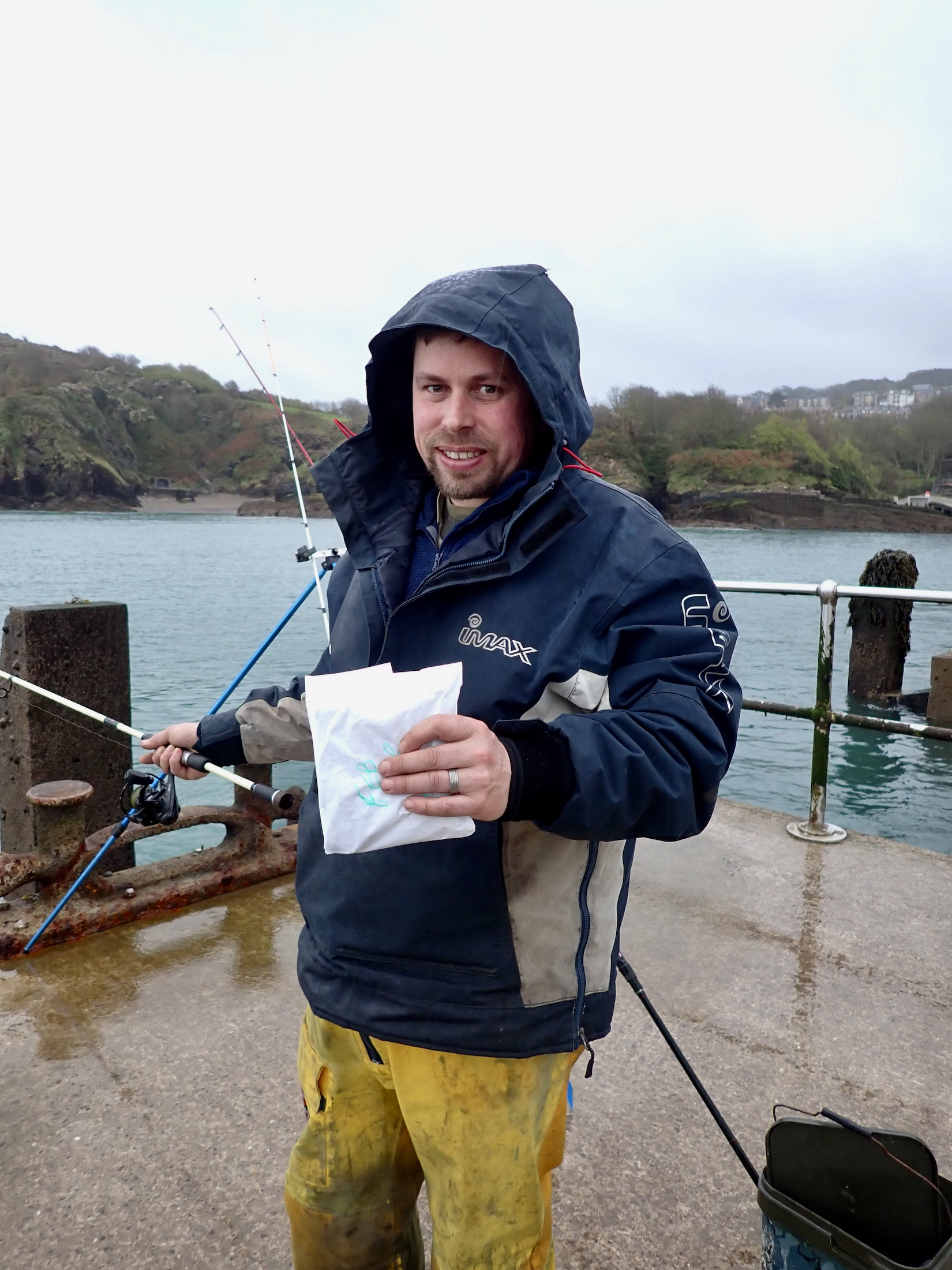
The monthly raffle prize kindly donated by Quay Sports was won by Toby Bassett.
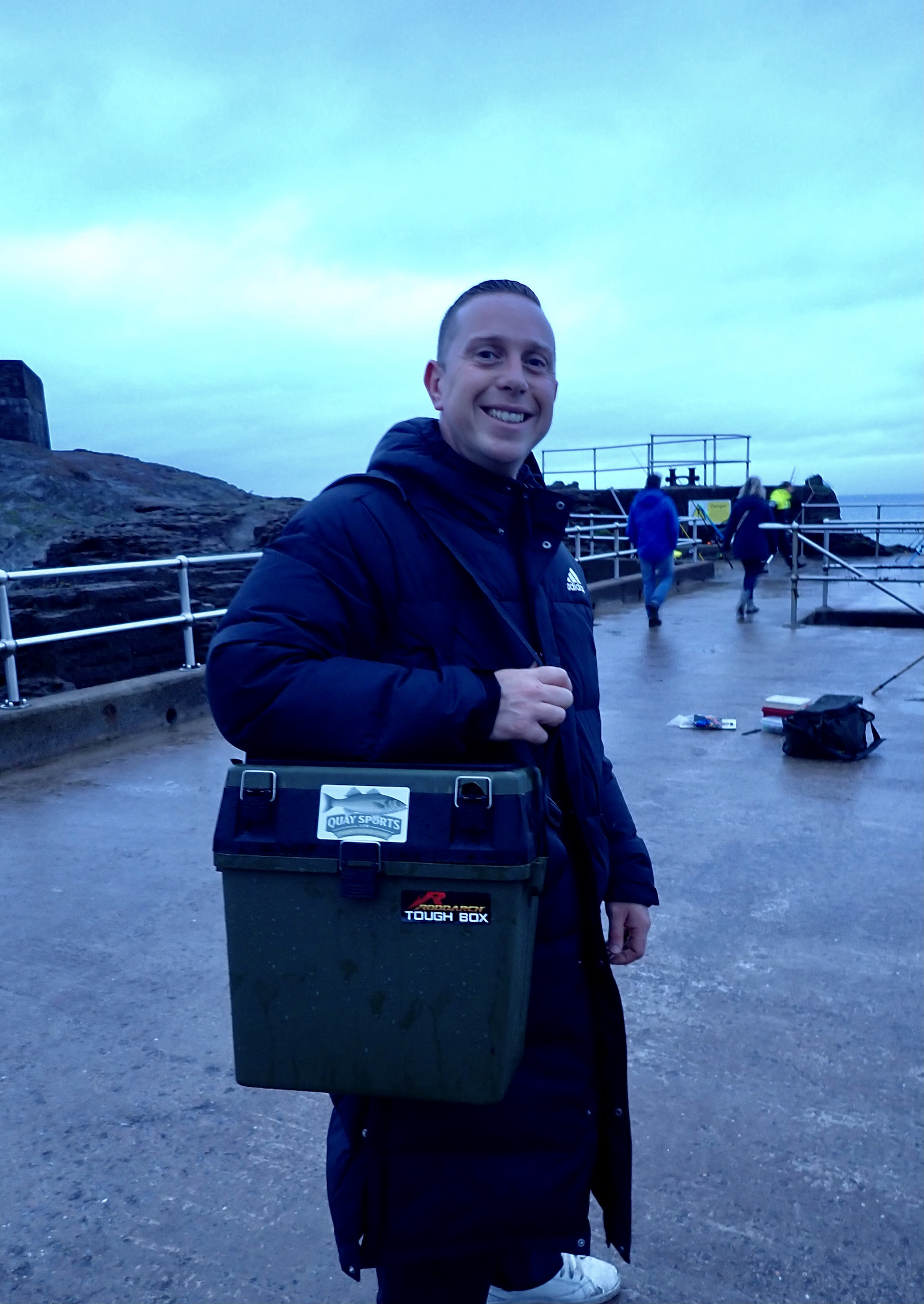

The water clarity was excellent and as the tide ebbed an abundance of fish were swung onto the pier. Several dogfish were caught by Lenny Lake who has taken an early lead in the April competition which is for the longest fish.
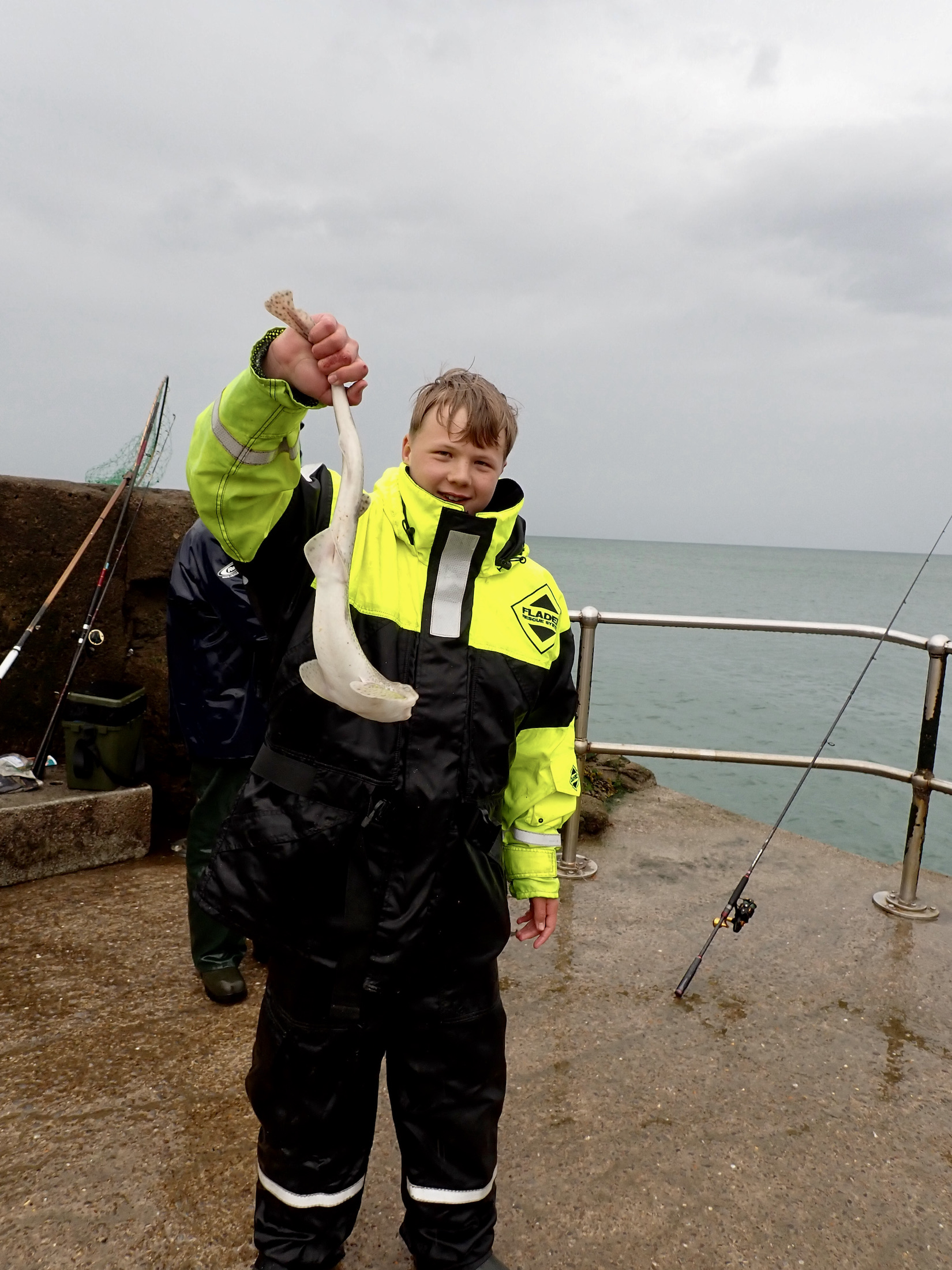
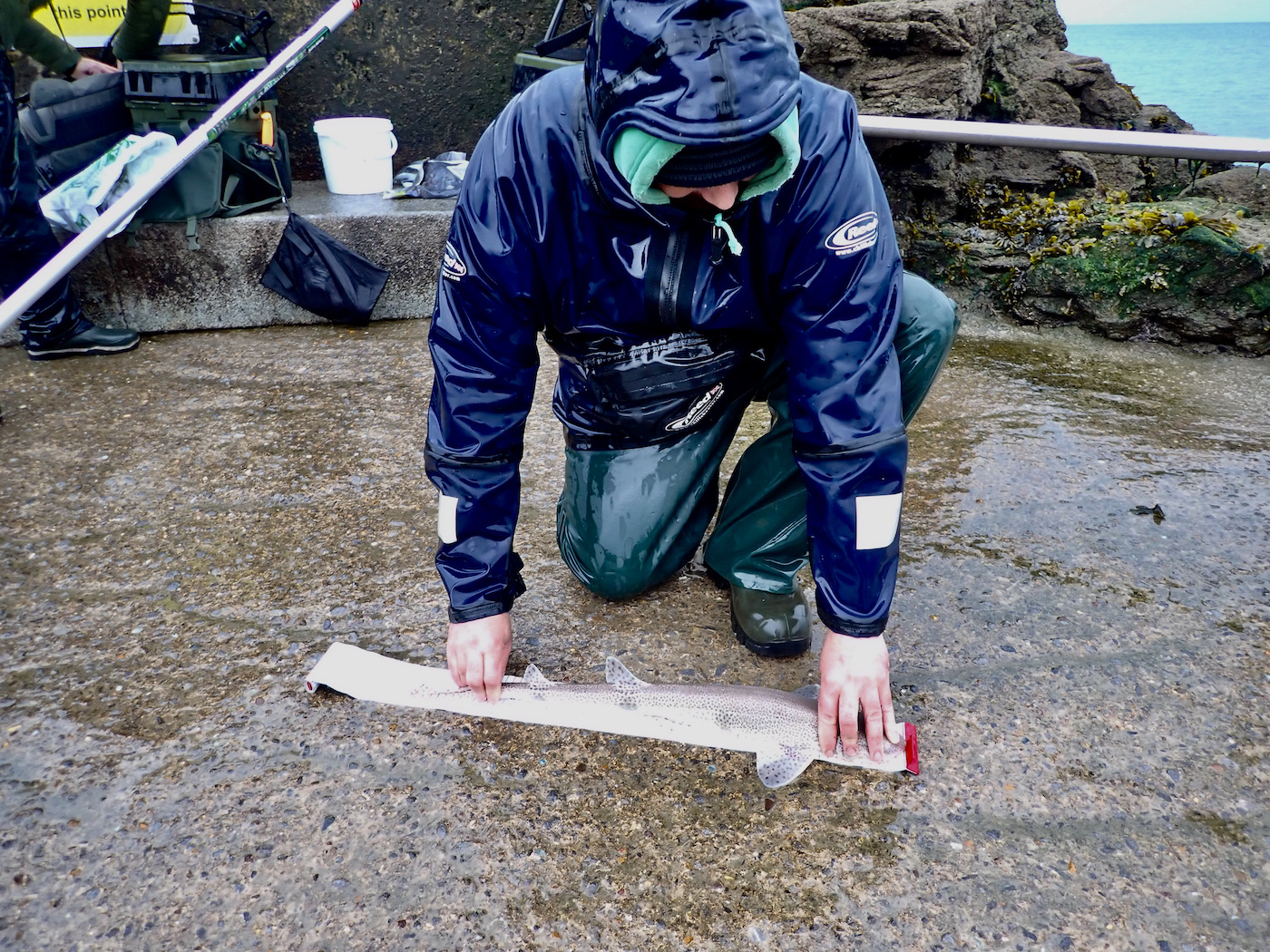
Young Solly Welch caught a number of fish adding a shore rockling to his growing species tally that includes a rare topknot and clingfish.
Andrew Laramy caught a plaice.
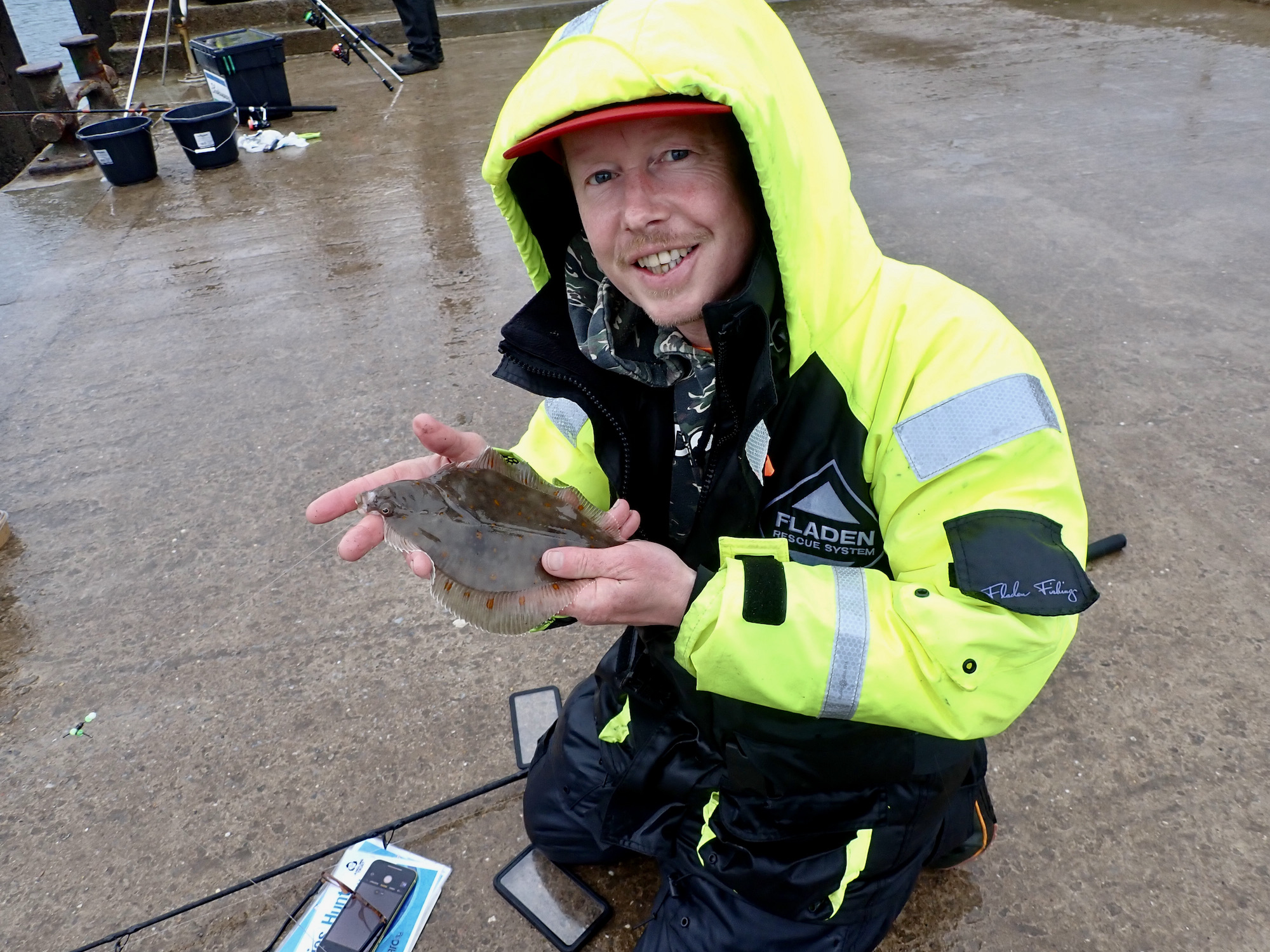
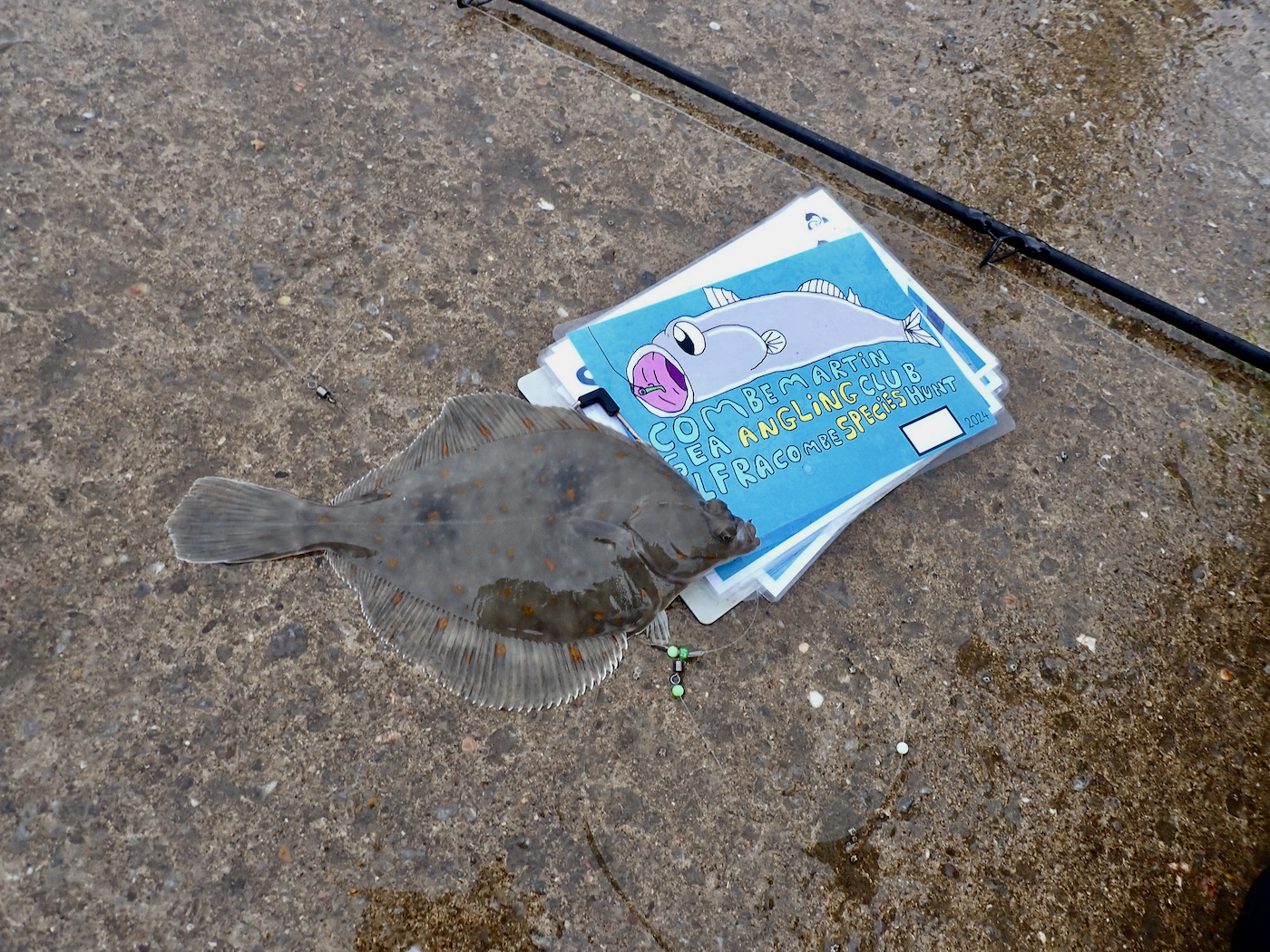
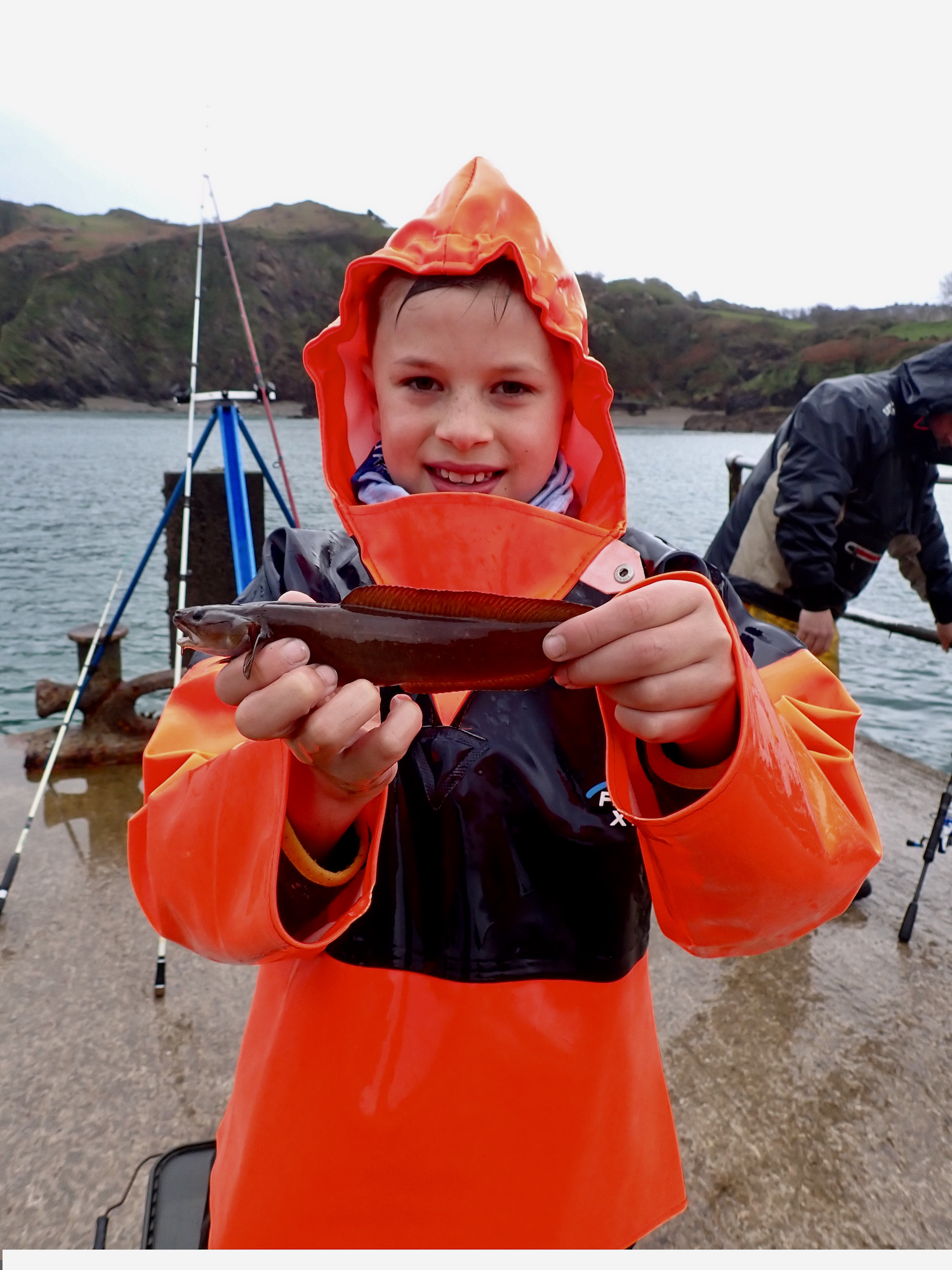
Ted Childs caught several blenny’s fishing from the Piers inner basin. Inspired by young Ted I added a common blenny to my modest tally of species.
I was pleased to add a common blenny to my tally. As the tide ebbed and the light faded the catch rate dropped and members slowly returned home to dry out.
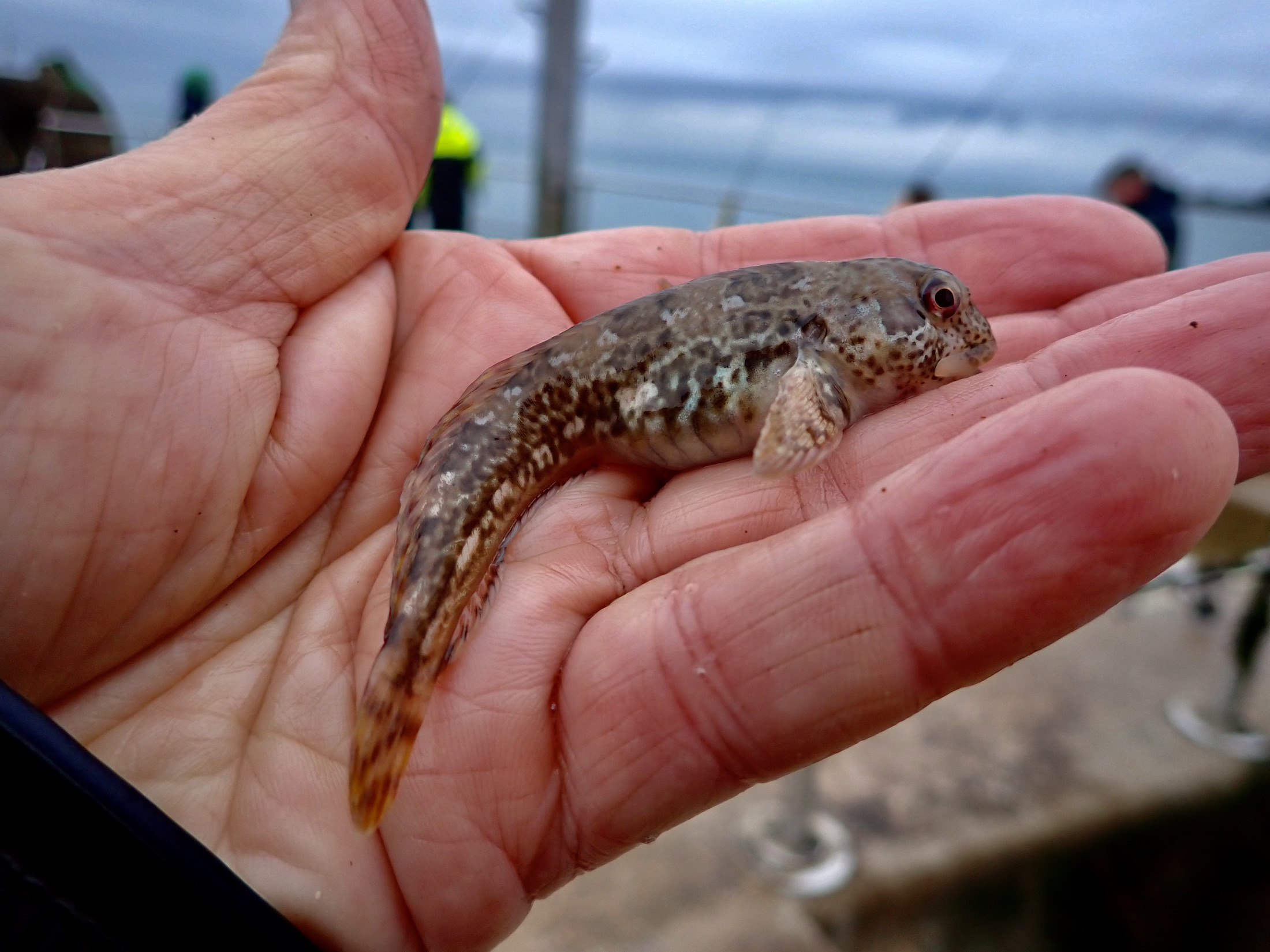
The gig rowers and Lifeboat exercise added life to the Maritime scene.
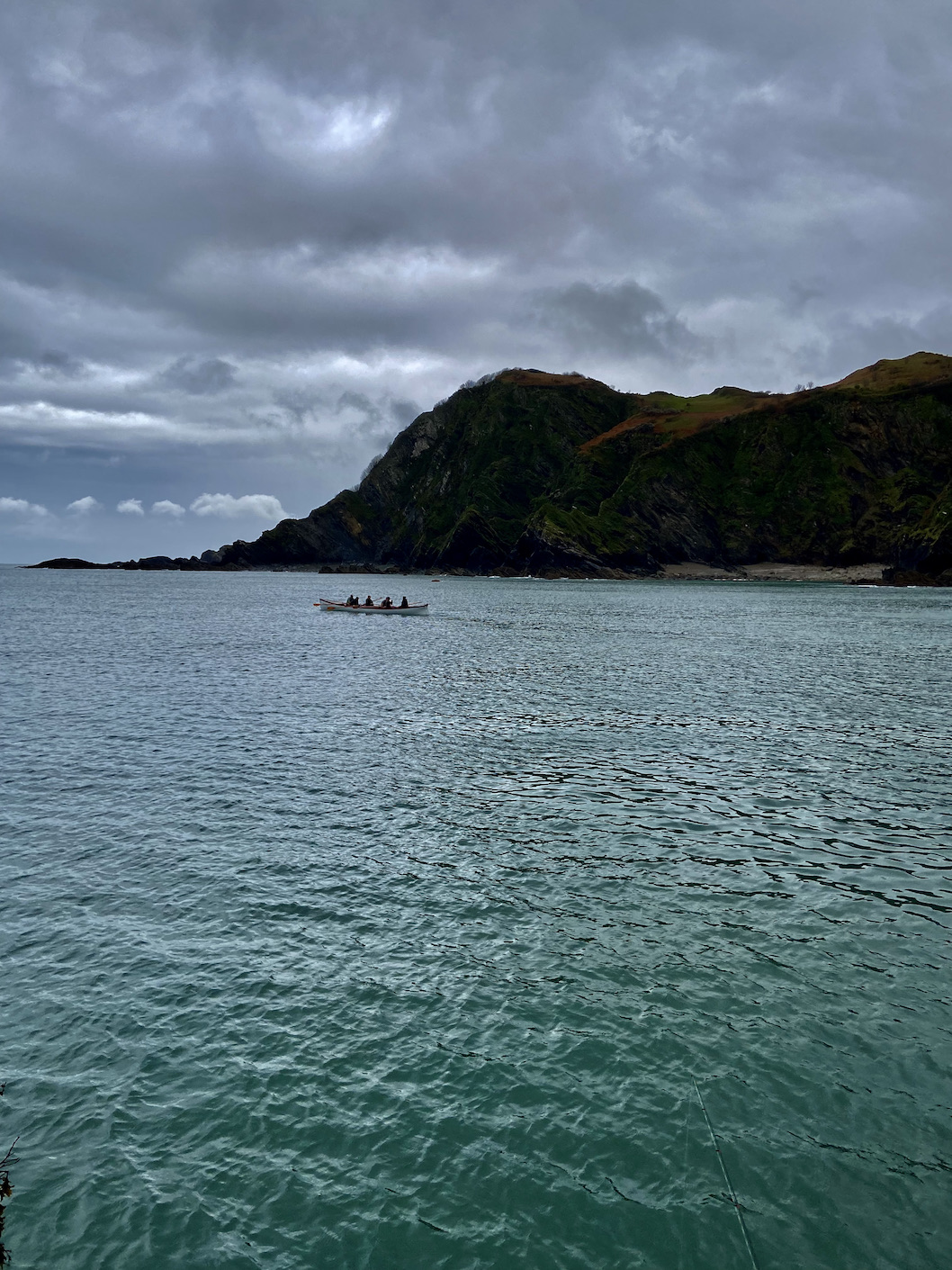
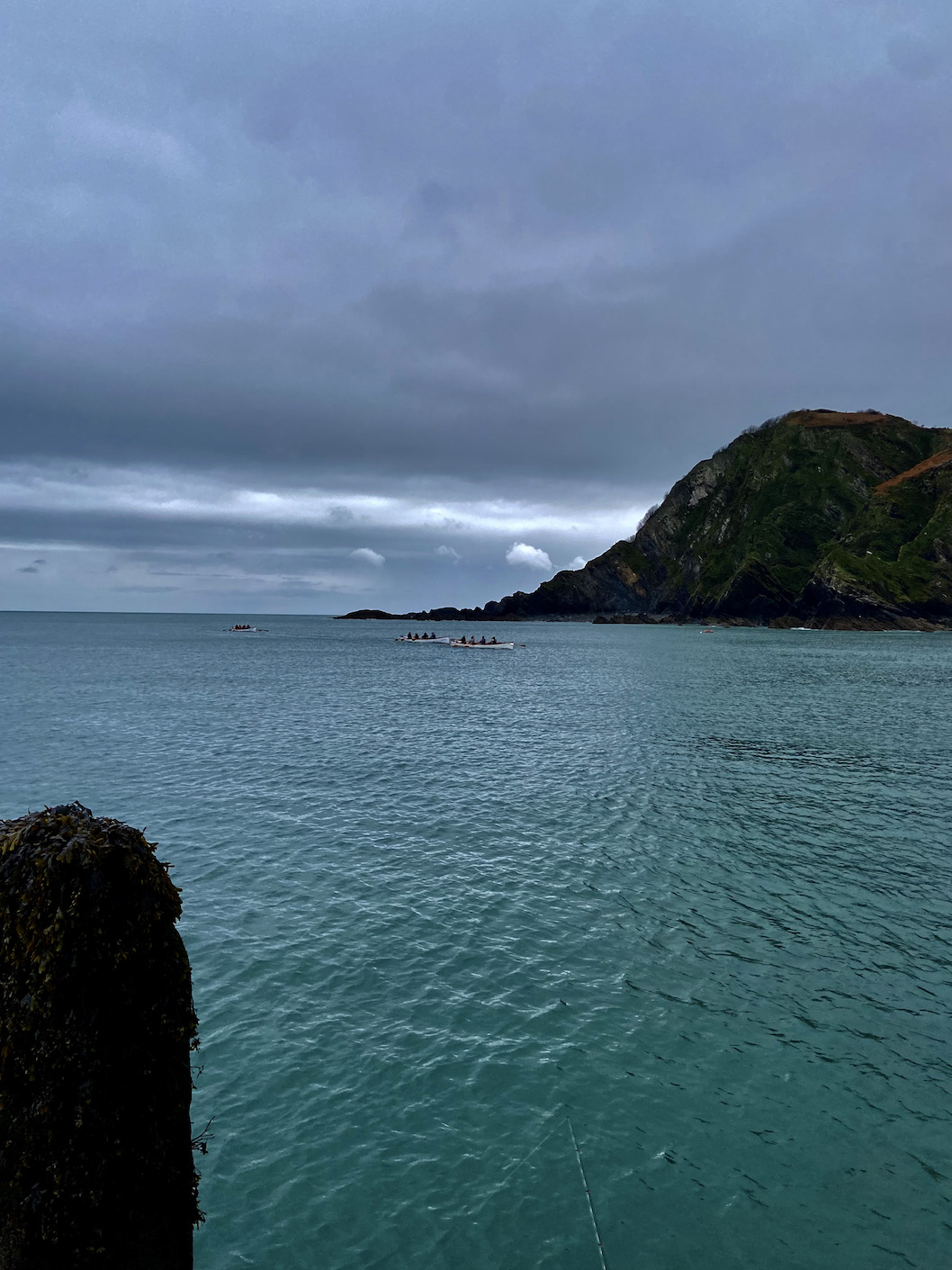
It had been an enjoyable evening and I look forward to the next event that will probably be held on a Sunday morning the plan being to alternate monthly between morning and evening.
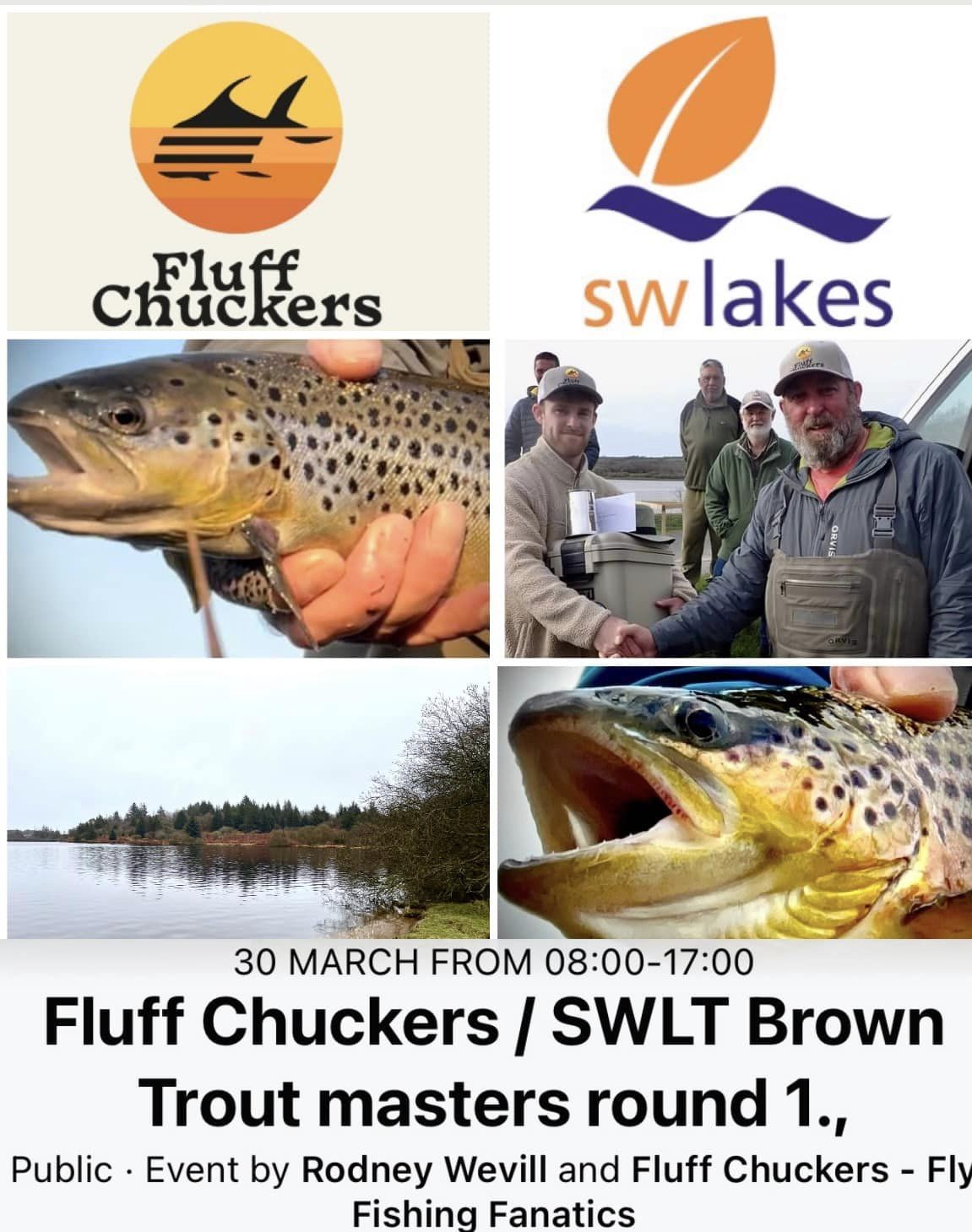
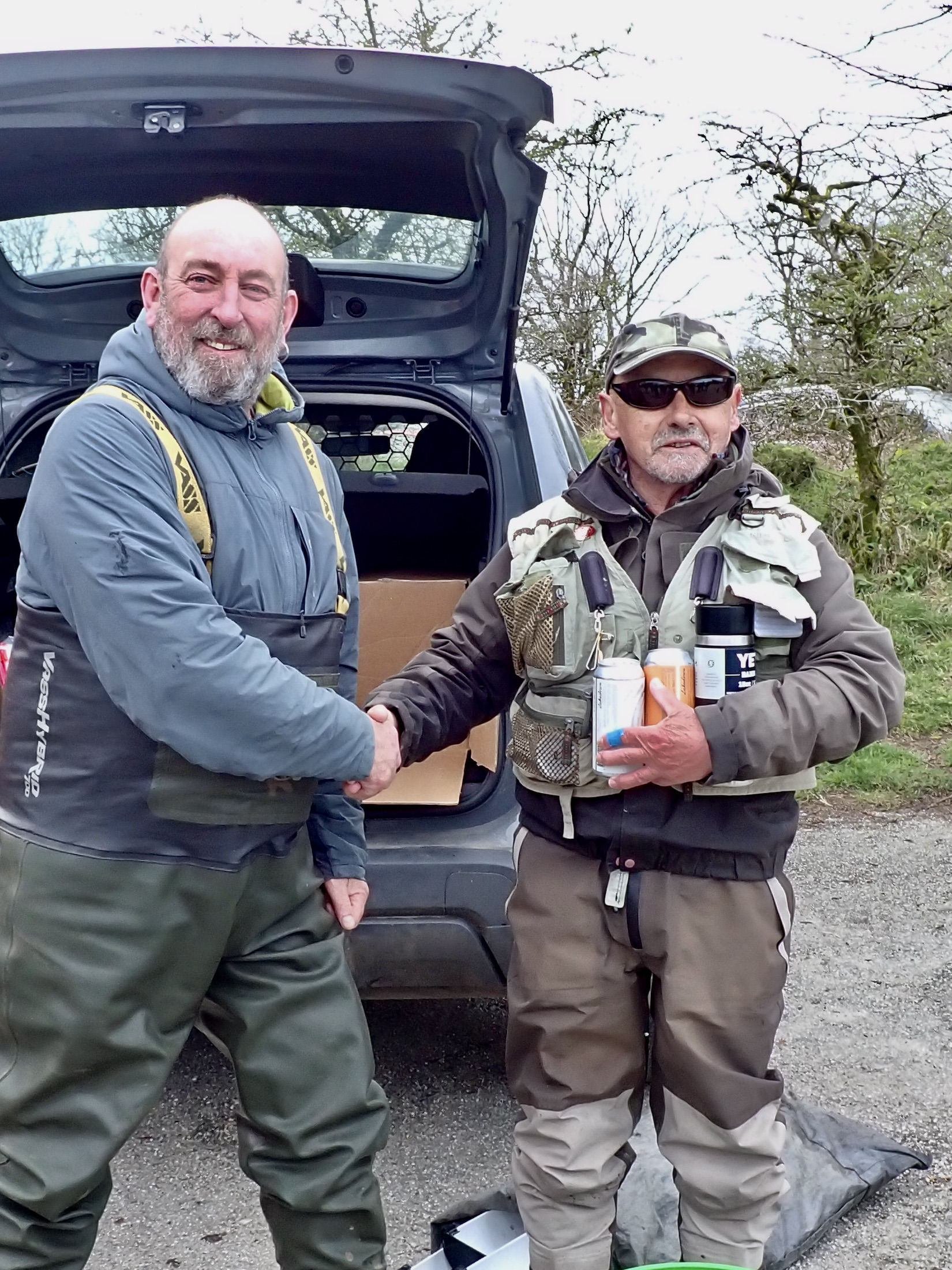
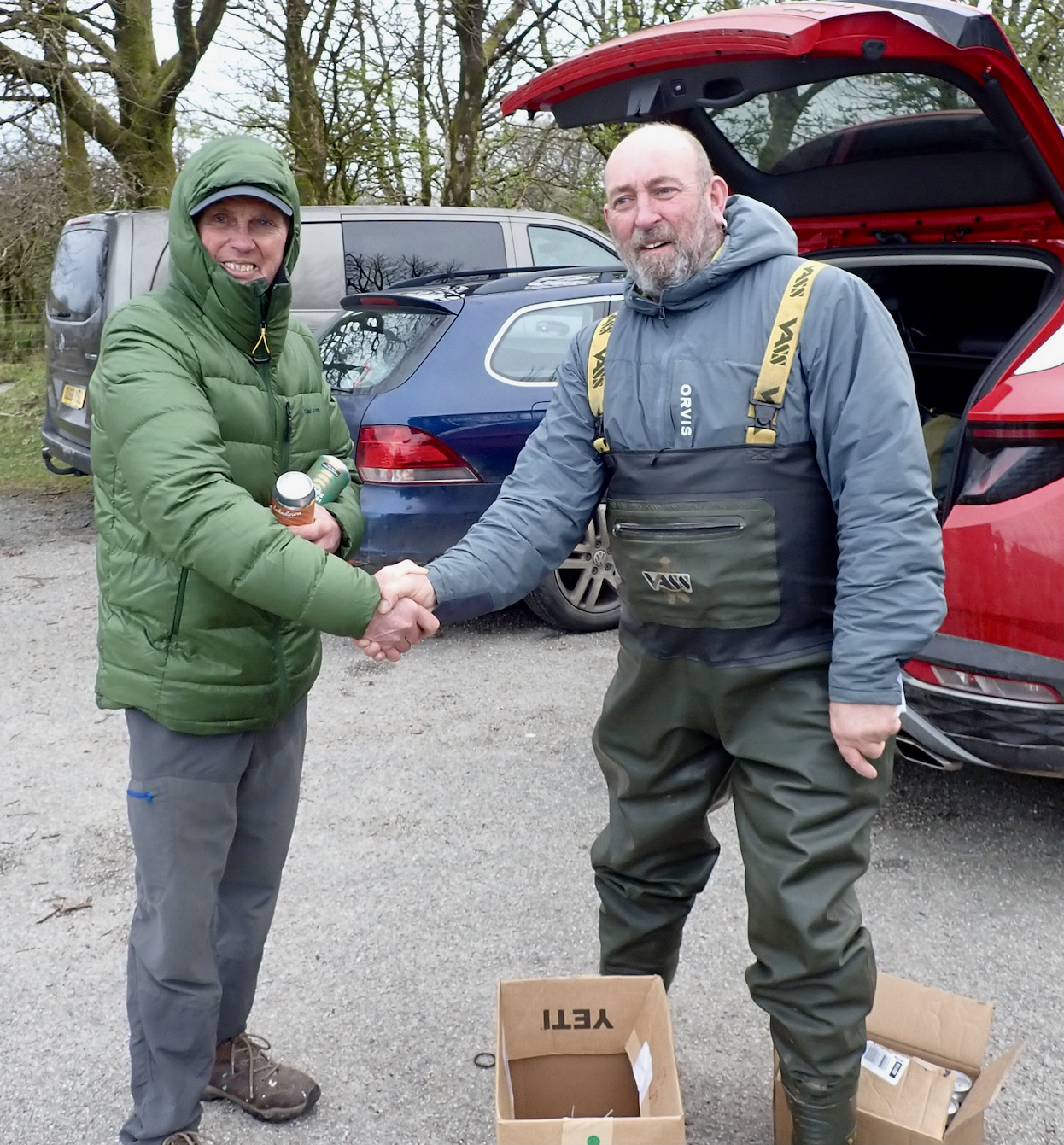
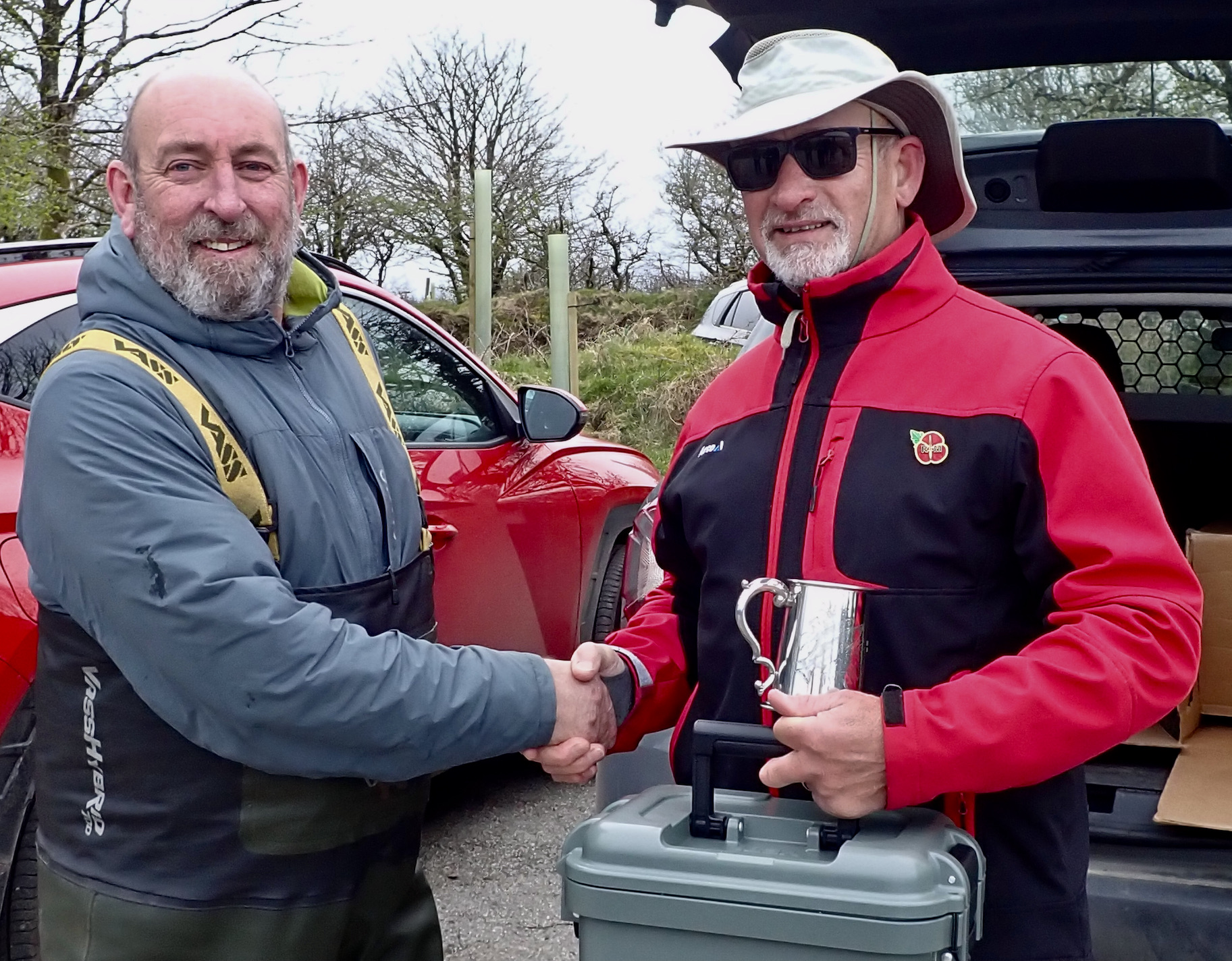
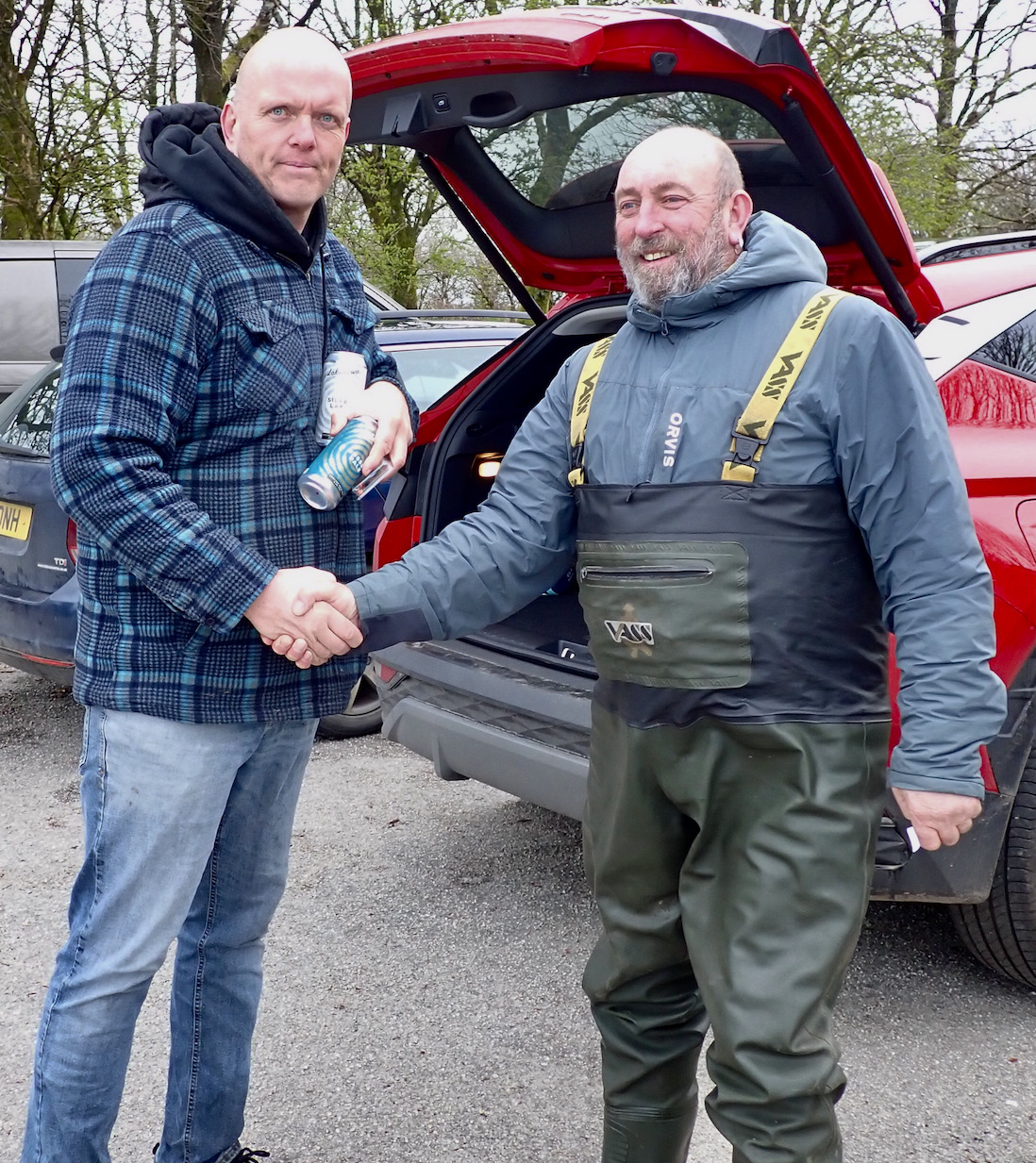
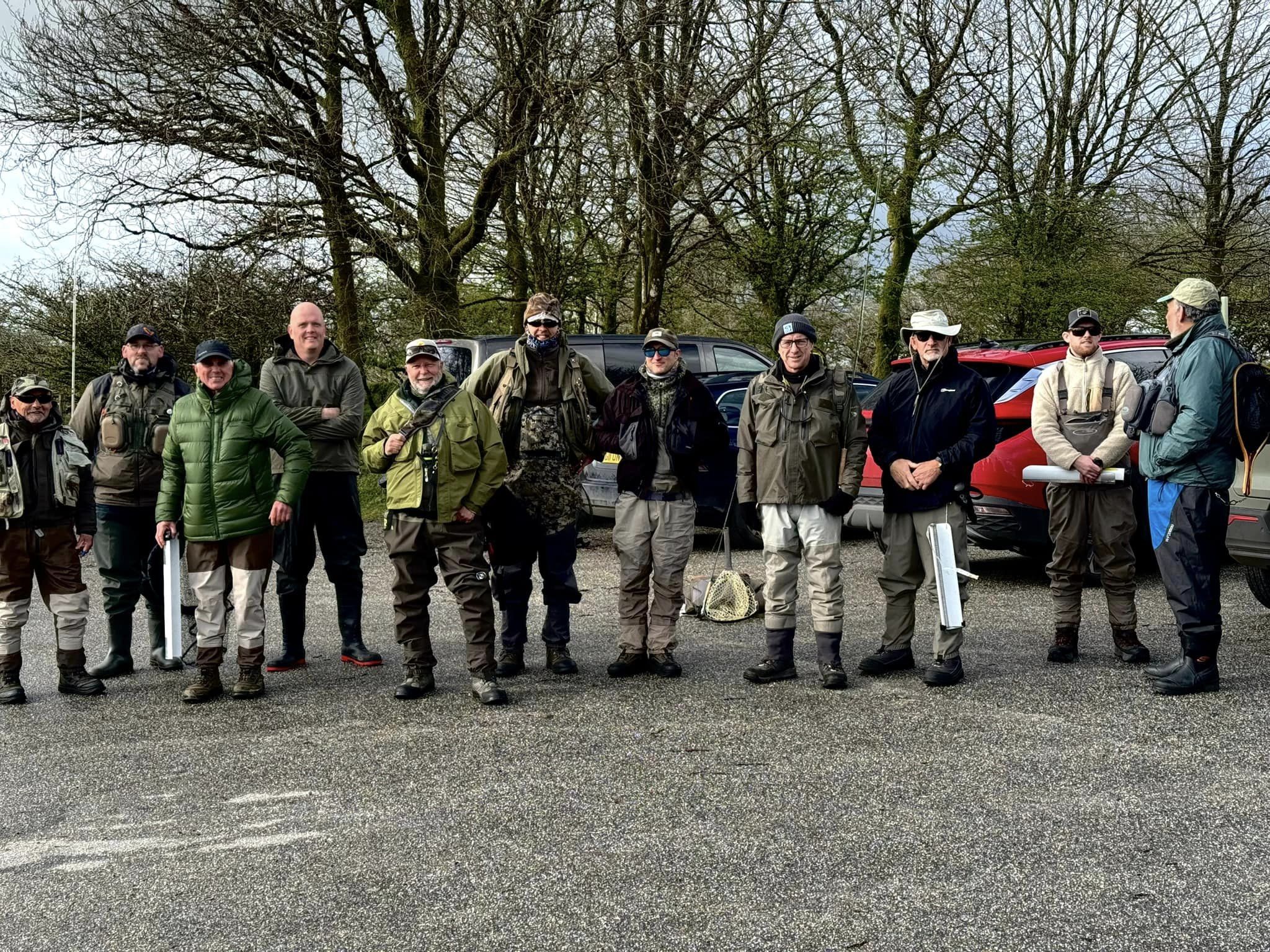
My day at Colliford – A cunning plan
Colliford Reservoir high on Bodmin Moor was the venue for the first leg of the Fluff Chucker’s and SWLT Brown Trout Masters. With a favourable weather forecast I was looking forward to a Spring day targeting the brown trout for which this venue is renowned.
I arrived at the assembly point to meet fellow Fluff Chucker’s and on stepping out of the car I was pleased that I had dressed up for temperatures were far lower than forecast. Whilst the wind was Southerly it felt particularly Baltic as the wind swept across the 900 acres of water.
The atmosphere was cheerful and friendly as angler’s swapped tales and talked of prospects for the day ahead. The rules were carefully explained by head Fluff Chucker Rodney Wevill. At 9.00am suited and booted up, the go fishing call was made and we all set off for our chosen areas.
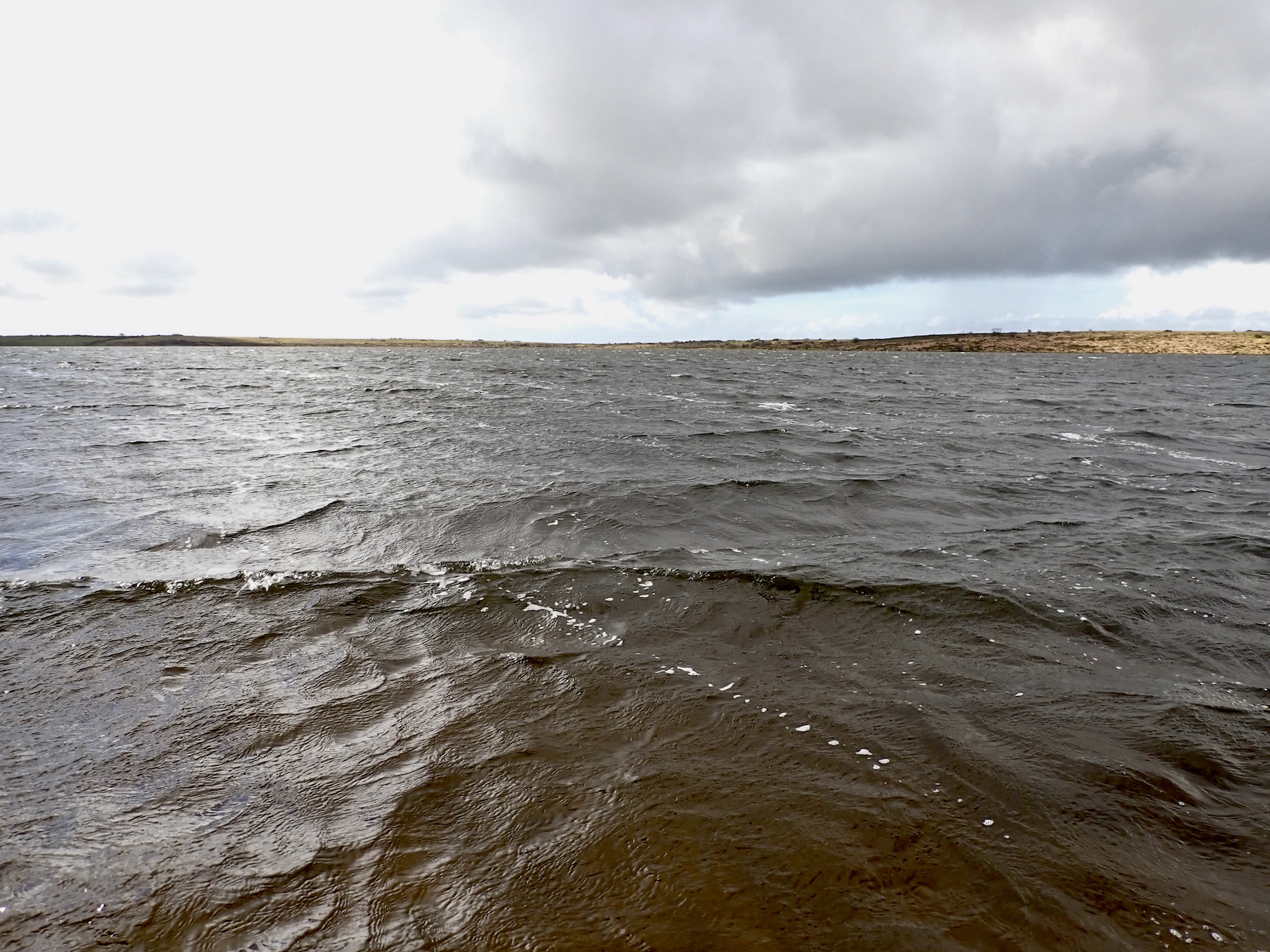
I had only fished the venue on one previous occasion so headed for the area I had fished before two years ago. Like Baldrick of Black Adder fame I had a cunning plan! Basically I would wander the shoreline casting a black woolly bugger on the point and a small black spider on the dropper. I would cast and take a step covering plenty of water.
I had every confidence in my cunning plan and persisted throughout the morning. After two hours I had not had a pull but surely persistence would pay off? Dark clouds crept ominously closer and the chill wind showed no sign of relenting. An angler fishing further along the bank caught a trout which gave me hope but also made me wonder if my lack of success was unique to me?
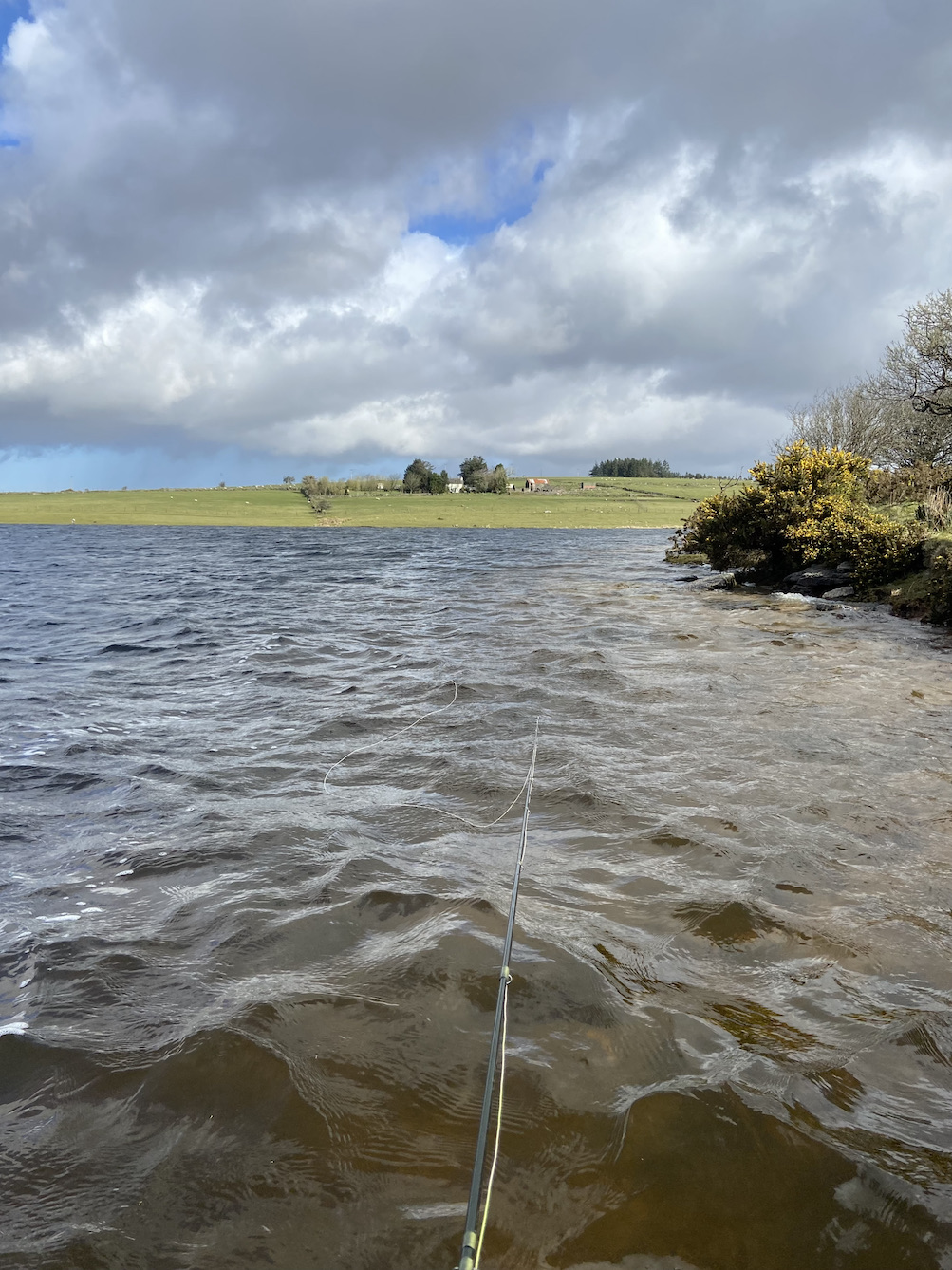
As heavy rain started to fall I thought of breaking for a drink and snack but all thoughts of this were put on hold as the line zipped tight and a lovely brown trout gave a pleasing account before slipping into the waiting net. After slipping the hook out and recording the fish I resumed fishing confidence fully restored. A few casts later and a savage tug a big swirl at the fly. Looked like a good fish and a chance gone. I fished on down through the bay and then retraced my steps fishing over the successful section again.
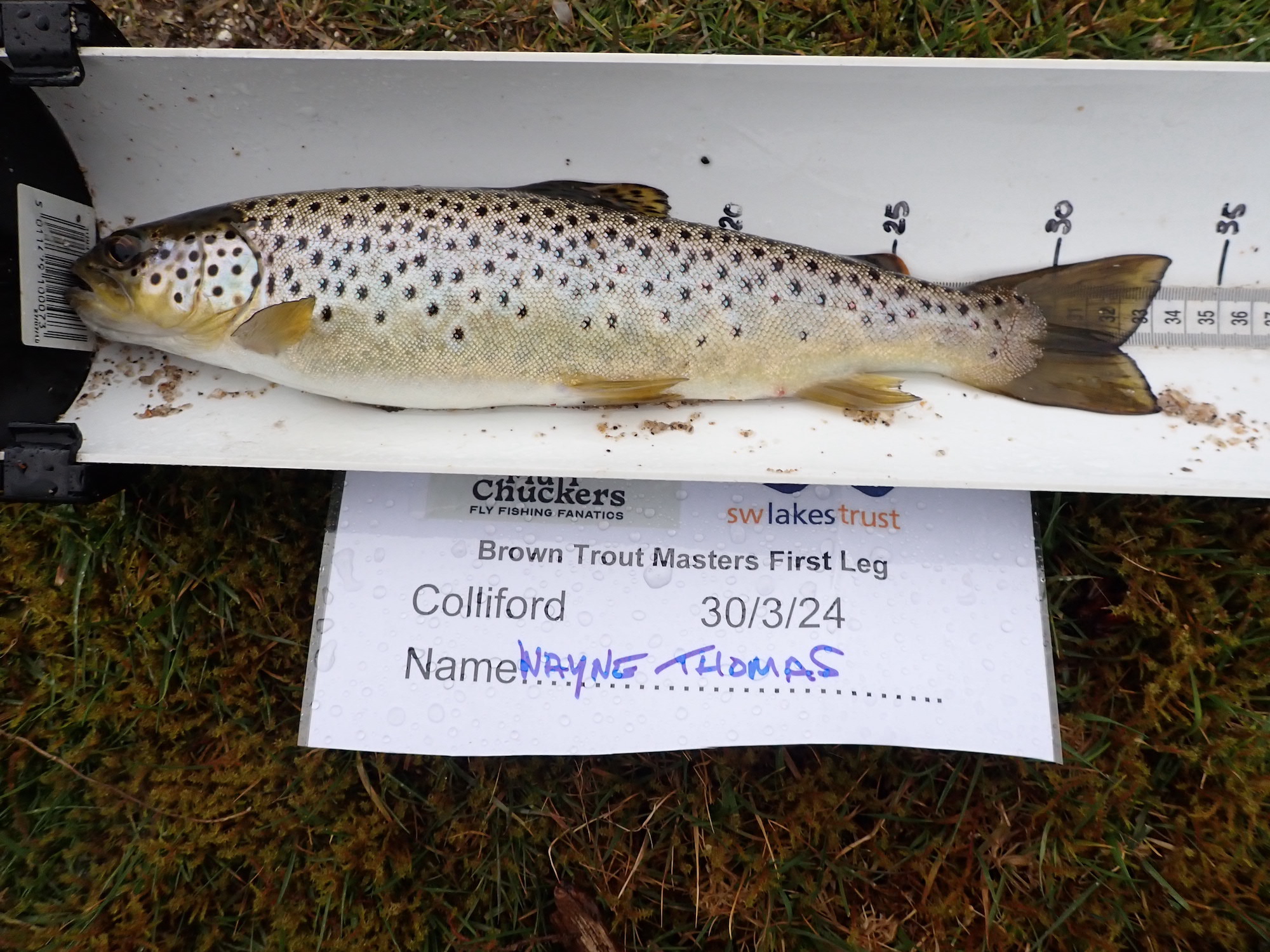
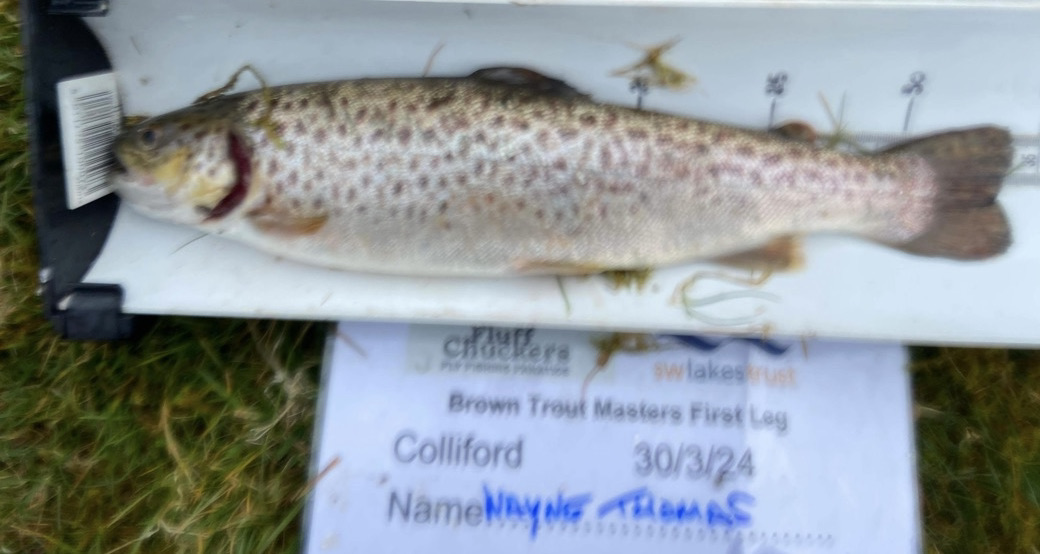
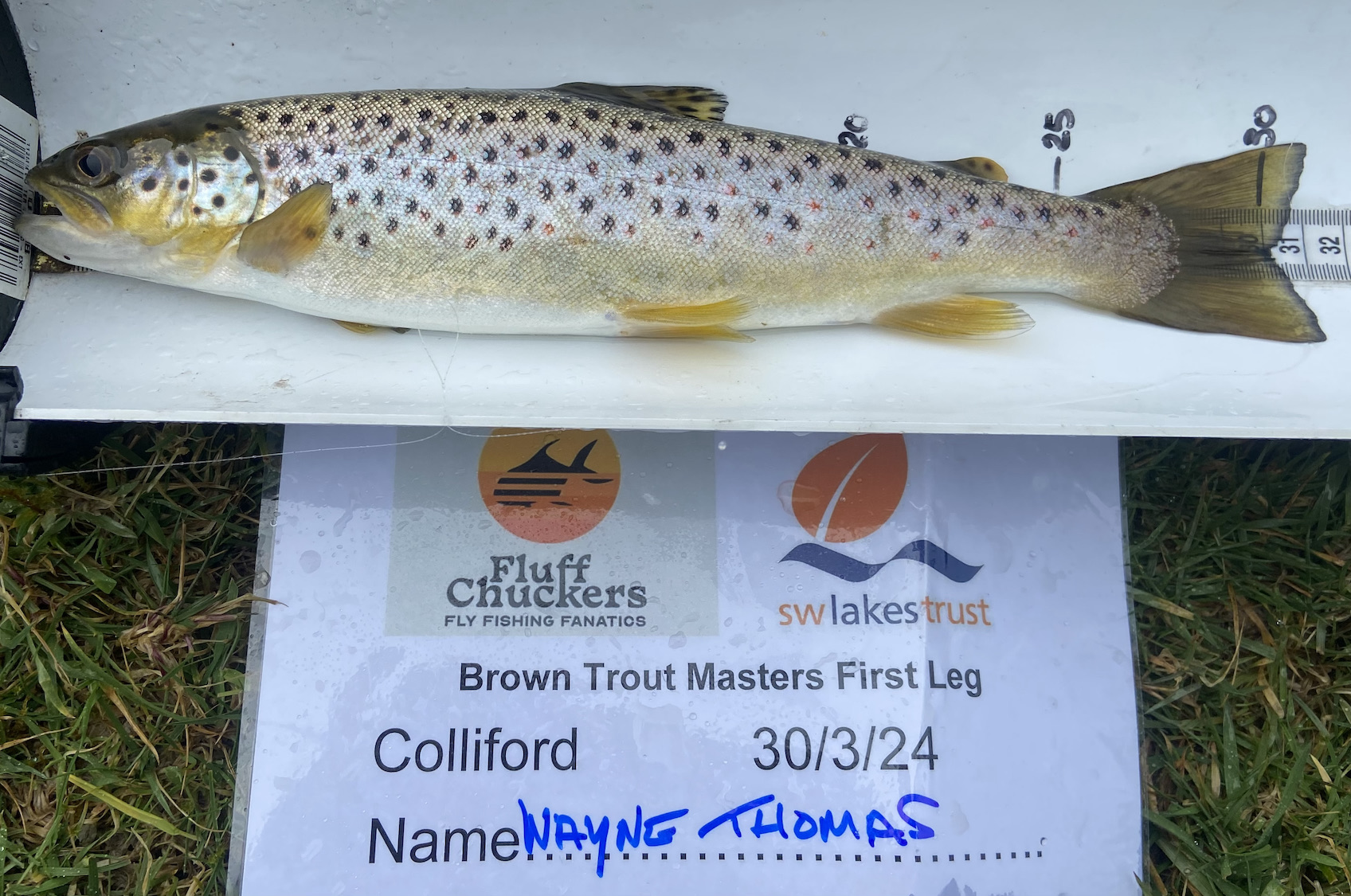
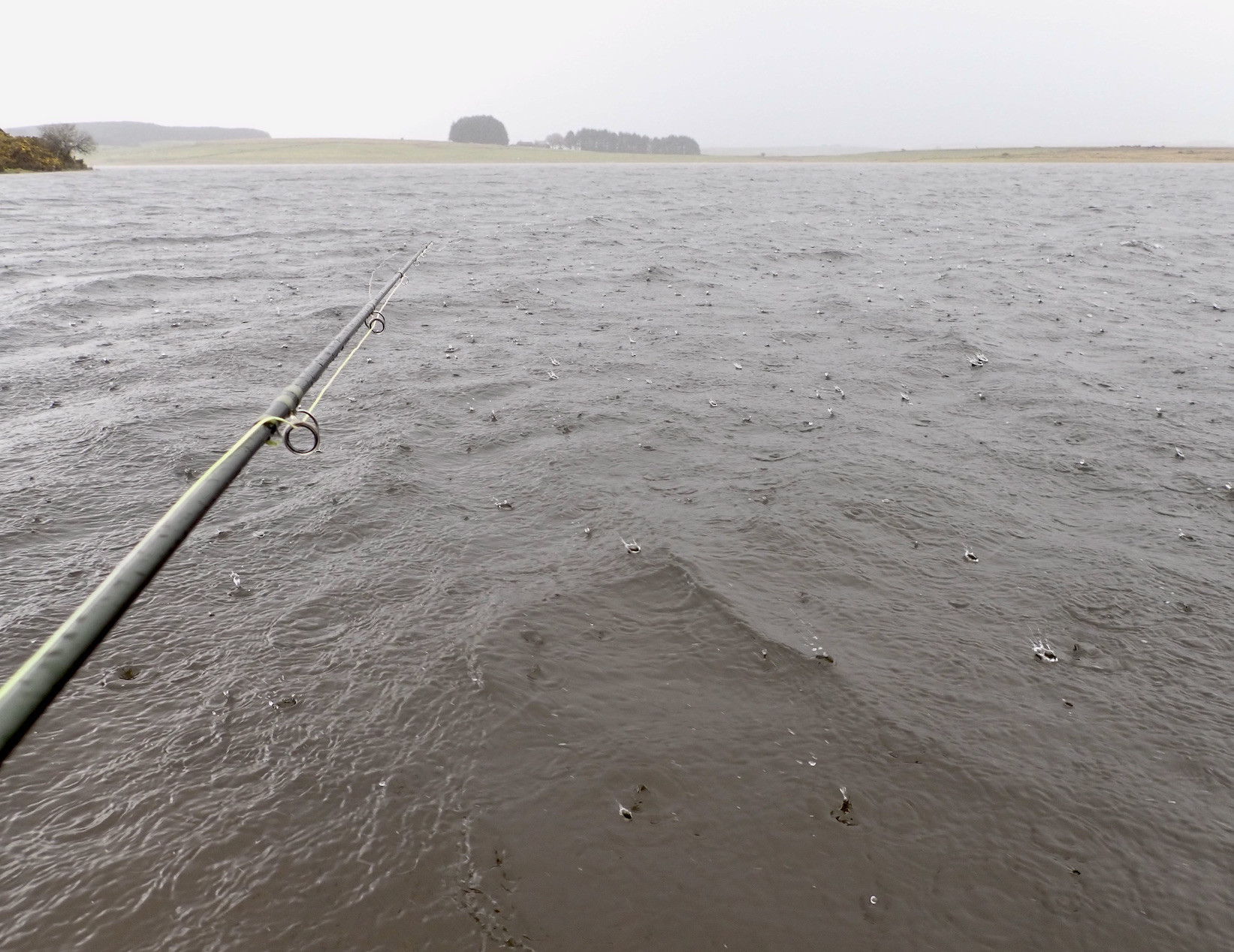
Two more trout followed in the next twenty minutes before all seemed to go quiet. I decided to try a new area and walked to a new section of bank. After half a dozen casts I hooked another trout that came off after 30 seconds.
With a few hours left in the day I decided to try the hotspot one more time before working my way slowly back to where I had started the day. I bumped into a couple of fellow fluff chucker’s on route and compared notes to find that whilst most had caught no one seemed to have bagged up big time.
The cold wind persisted but at least the cold rain had stopped falling. I heard sky-larks song drifting in the breeze. I looked out for early spring migrants hoping to see my first swallow or sand martin but the skies remained devoid of these harbingers of Spring and summer. At least the lake was brim full after an exceptionally wet winter.
I found some quieter water at the top of the lake and climbed out onto an old bank that allowed a nice long cast parallel to the reed fringed shore line. A trout rose within casting range and I instinctively changed my tip fly to a small tungsten headed black spider.
The cast landed perfectly and within seconds of touching down the line zipped tight and there was a boil on the surface. B***er another chance gone.
I fished on for the next half an hour without a pull and eventually called it a day with a couple of minutes before competition end.
I walked back to see what had been caught and found that I had done Ok. A couple of big trout had been tempted the best a beauty of 44cm. Venue regular Roger Truscott recorded twelve browns and had been favourite to win from the start.
Reflecting on my day I was pleased to finish third one more fish would have resulted in runner up spot. I should perhaps have persisted in the area I had caught in but the general consensus seems to be that roving works best. A classic case of should I stay or should I go?
I reality it really doesn’t matter for I had enjoyed the day immensely despite the cold wind and chilled fingers. I look forward to heat two in June when it will surely be warmer?
Many thanks to Rodney Wevill for all his efforts in putting the series together and of course to SWLT, Yeti, Lakedown Brewing co and for their generous support.
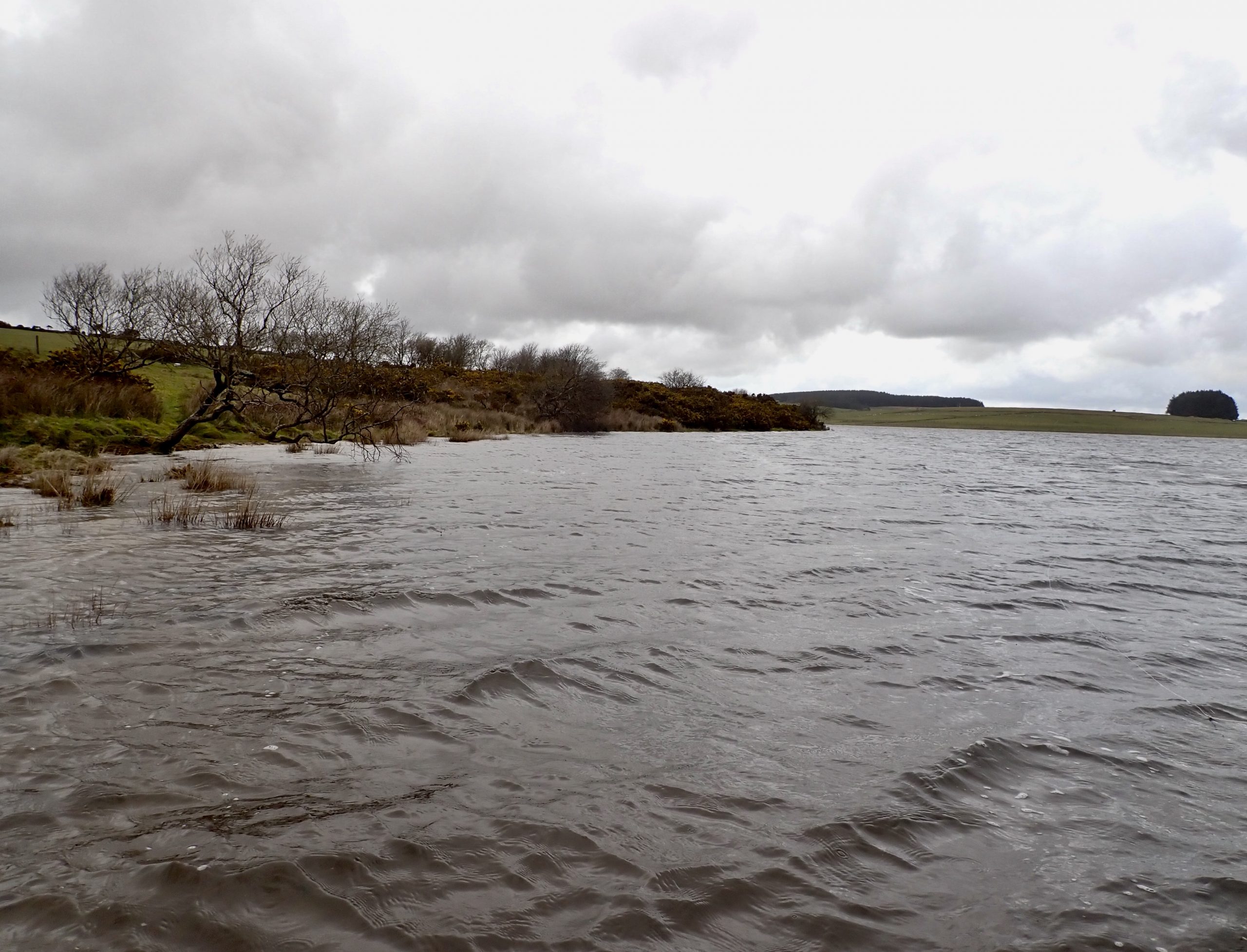

Announcement

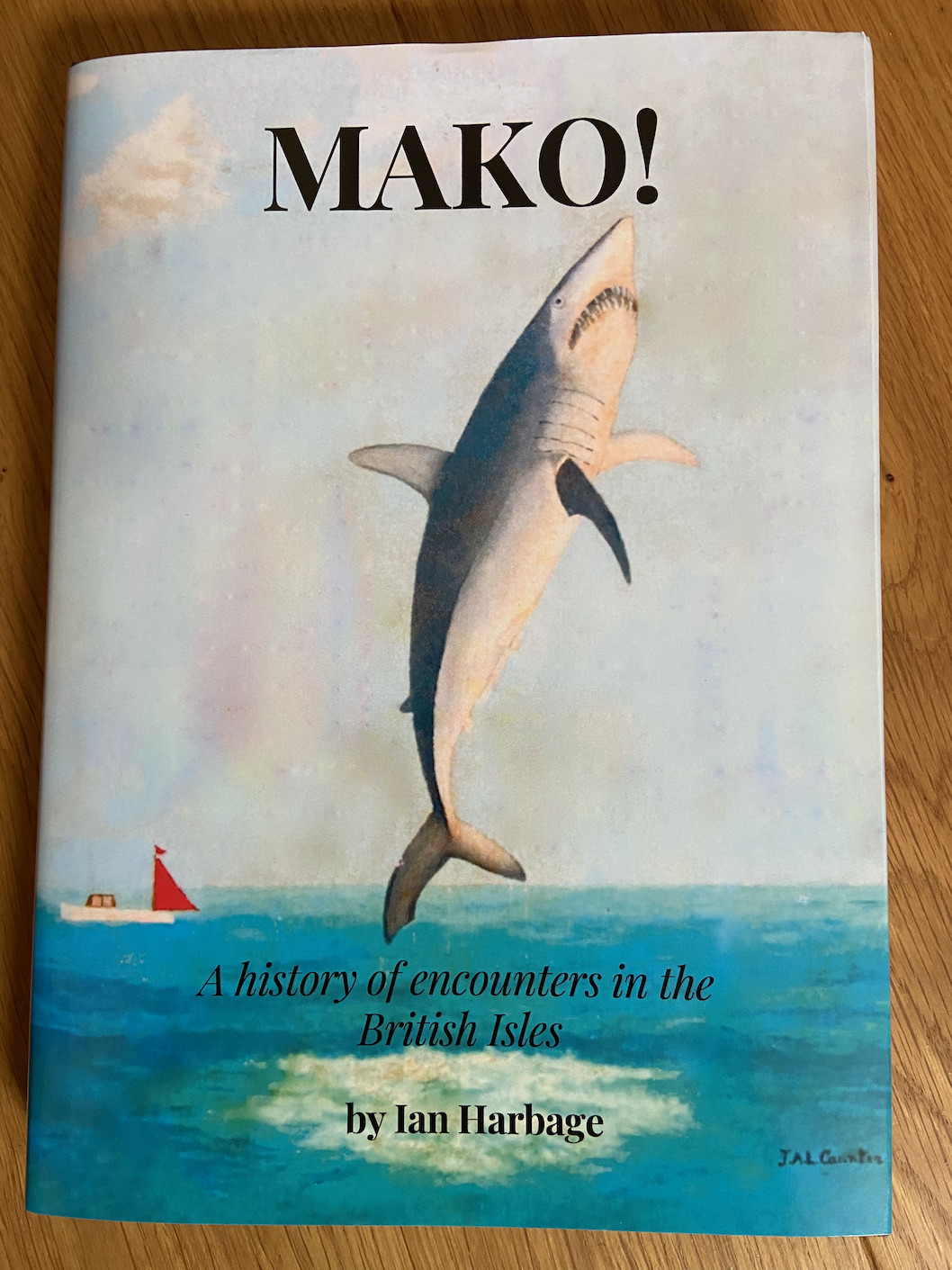
The book Mako! A History of encounters in the British Isles; has been a labour of love for Ian Harbage, Vice Chairman of the Shark Angling Club of Great Britain.
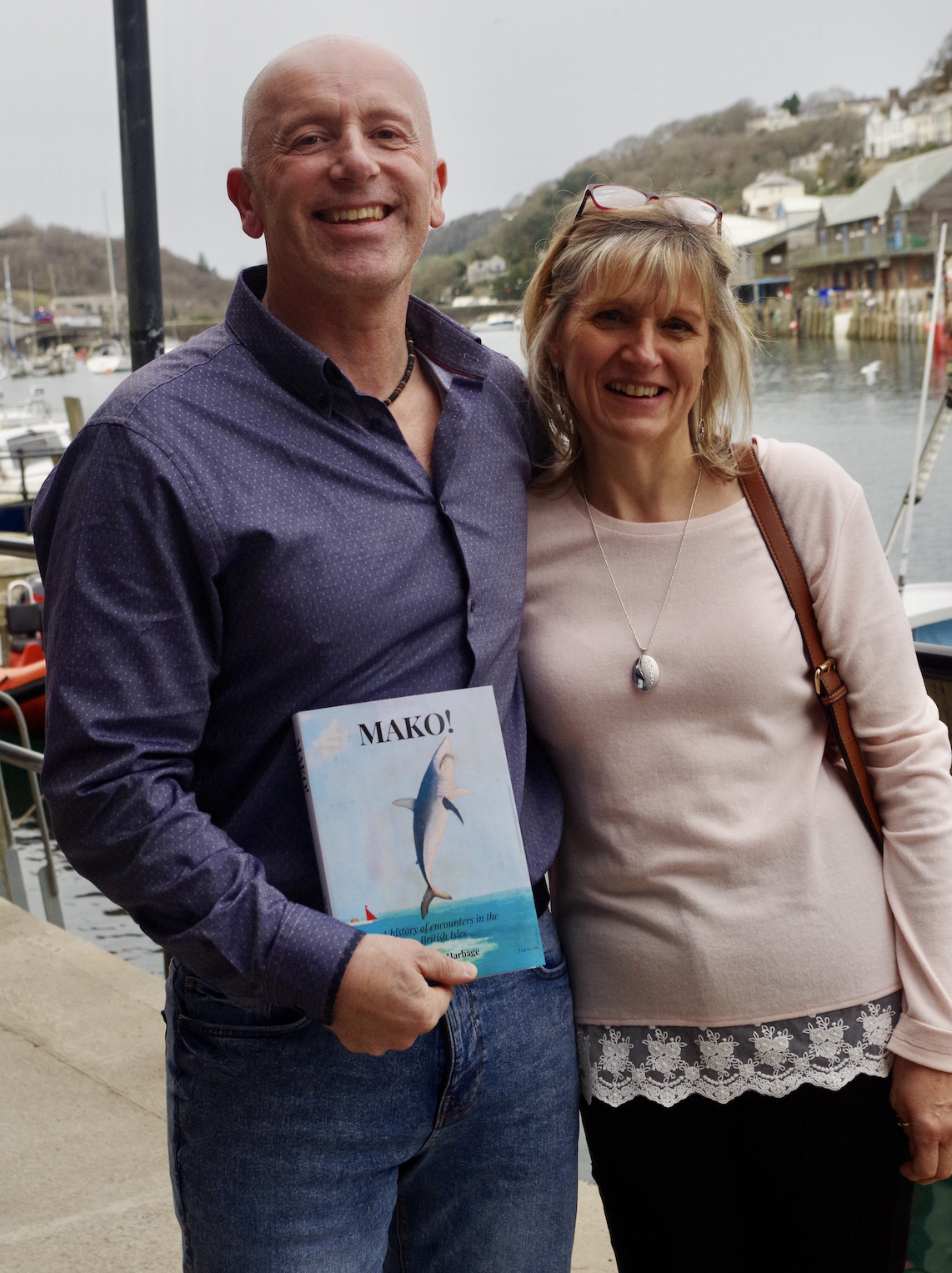
Ian Harbage first visited Looe as a six year old boy in 1975 and like many young children of the time was fascinated by the daily weighing of shark at the SACGB’s weighing station on East Looe Quay. Back then conservation was certainly not on the agenda and the shark mostly blues were slaughtered to be hung up, their carcasses dripping blood as their captors posed proudly for a picture. In 1975 the big movie at the cinema was “Jaws”, a film that portrayed sharks as ferocious killing machines. A young Ian was captivated during that decade and like many of that generation saw captain Quint the shark hunter as a true hero.
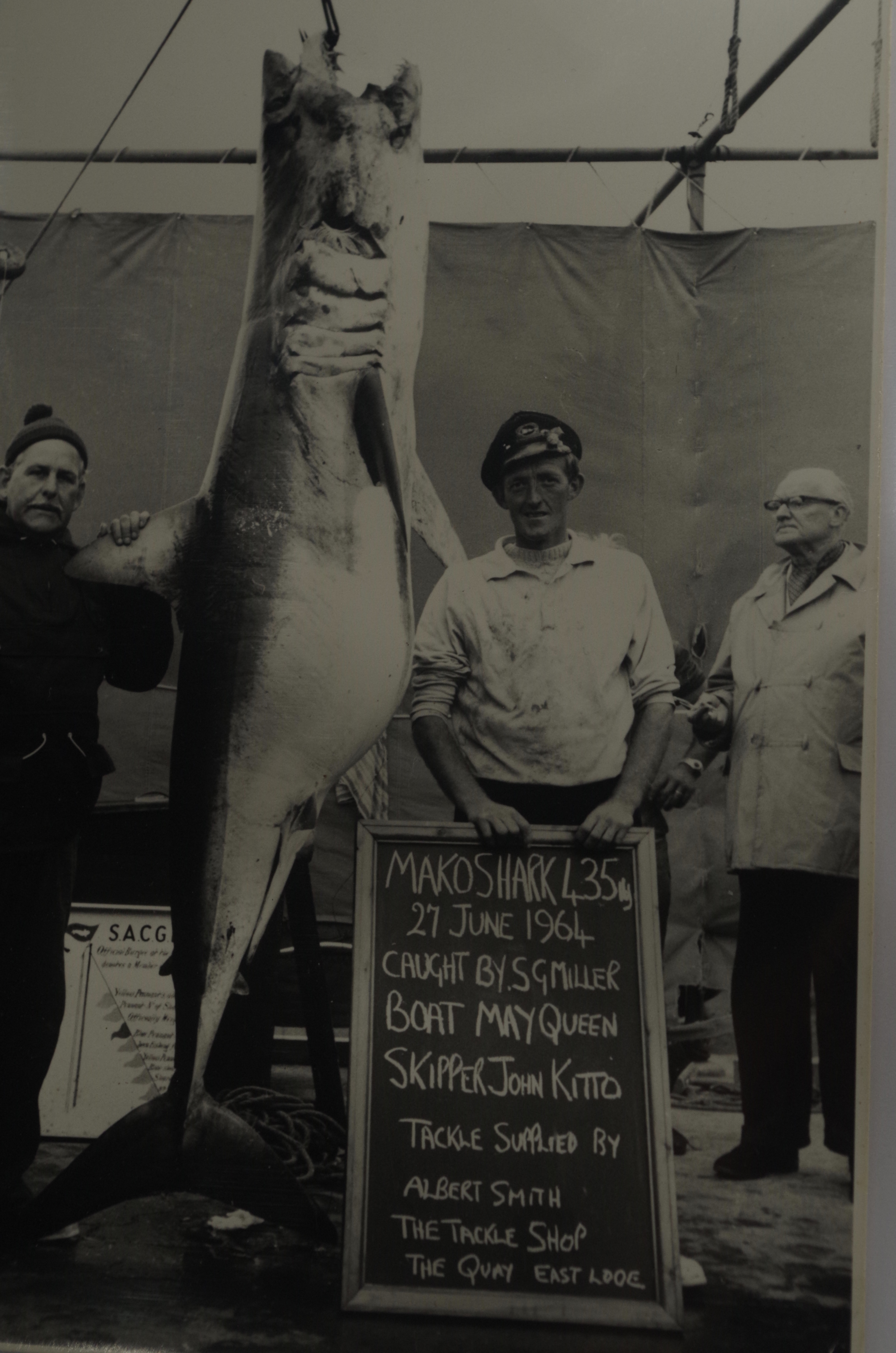
Fortunately close to fifty years on shark angling has modified its ways and is now focussed upon conservation with all shark released at the side of the boat. Tackle has been refined to reduce damage to the shark and valuable data is recorded to increase scientific knowledge of shark migrations across vast oceans.
Ian’s book is a fascinating tome that records the history of mako shark captures in the British Isles. Ninety-eight mako shark are recorded in the book a culmination of many years of detective work with many anglers and skippers interviewed their exciting tales retold and captured in this superb book.
Entwined within the tales of these mighty fish are glimpses of salty characters who oozed charisma and loved life upon the sea.
Ian was encouraged to write the book after meeting the Armishaw family who have been publishing fine angling books for several decades. Lee Armishaw of Watersmeet Publications gave his full backing to Ian to write the book after learning of the vast amount of knowledge Ian had gathered during a fifty year obsession with shark and in particular mako.
The book was appropriately launched at the Heritage Centre in Looe on Sunday, March 24th 2024. Pauline and I joined a room full of readers keen to receive their copies of this long awaited book. Ian took centre stage telling of how he had written the book his passion for the work evident for all to see. He read a fascinating and humorous chapter from the book that had the audience entranced. Ian thanked all members of the Watersmeet Publications team for their encouragement and expertise. Ian also thanked his wife Loraine for her support and patience over several years spent working on the book. Ian also gave thanks many others who had helped with the research.
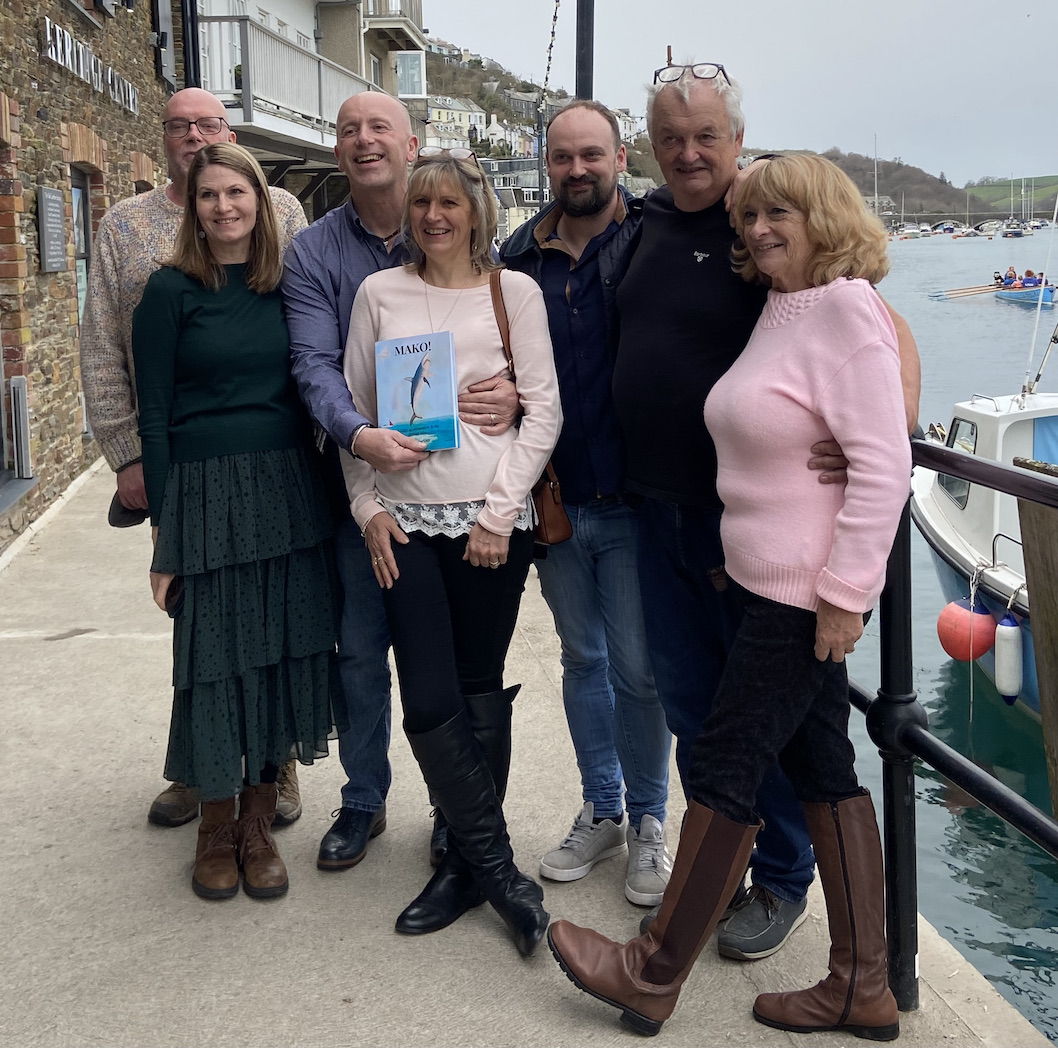
Dr Simon Thomas followed Ian delivering a fascinating and informative talk on the mako shark. The mako is built for speed capable of cruising over long distances in search of its prey with the ability to accelerate in ambush reaching speeds of perhaps 50mph. The trademark appearance of a mako shark is its ability to leap high out of the water. This is a sight that has cemented the mako in the many stories told by anglers who have hooked these magnificent fish.
The mako are found in ocean waters with a temperature above 16 degrees centigrade. Their range extending from New Zealand to North West Scotland. The mako can reach a weight of around 1500lb with a 500lb fish likely to be around 20 years old.
The golden era for mako shark catches in UK waters was between 1951 and 1972. The last Cornish mako was caught in 1980. Mako have been caught off Wales and Ireland in recent years and suspected sightings have been made in recent seasons.
I asked Dr Thomas if he believed climate change could result in a potential increase in mako numbers off the UK. He acknowledged that there is rapid and complex change within marine eco systems that may or may not be linked to climate change. The gulf stream influences our weather, climate and fish migrations its flow rate and global warming are complex and not necessarily one and the same.
Below is a link to Dr Simon Thomas’s talk
After Dr Simon Thomas’s talk Ian met with those who had travelled to purchase copies of the book that had virtually sold out its initial print run. Among those collecting their books was Looe Skipper, Phil Dingle, the son of Alan Dingle a family of legendary Looe Skippers who feature extensively in the book.


The Dingle family

All assembled at the event were privileged to share in a moment of celebration as the book records some of Looe’s rich shark fishing history.
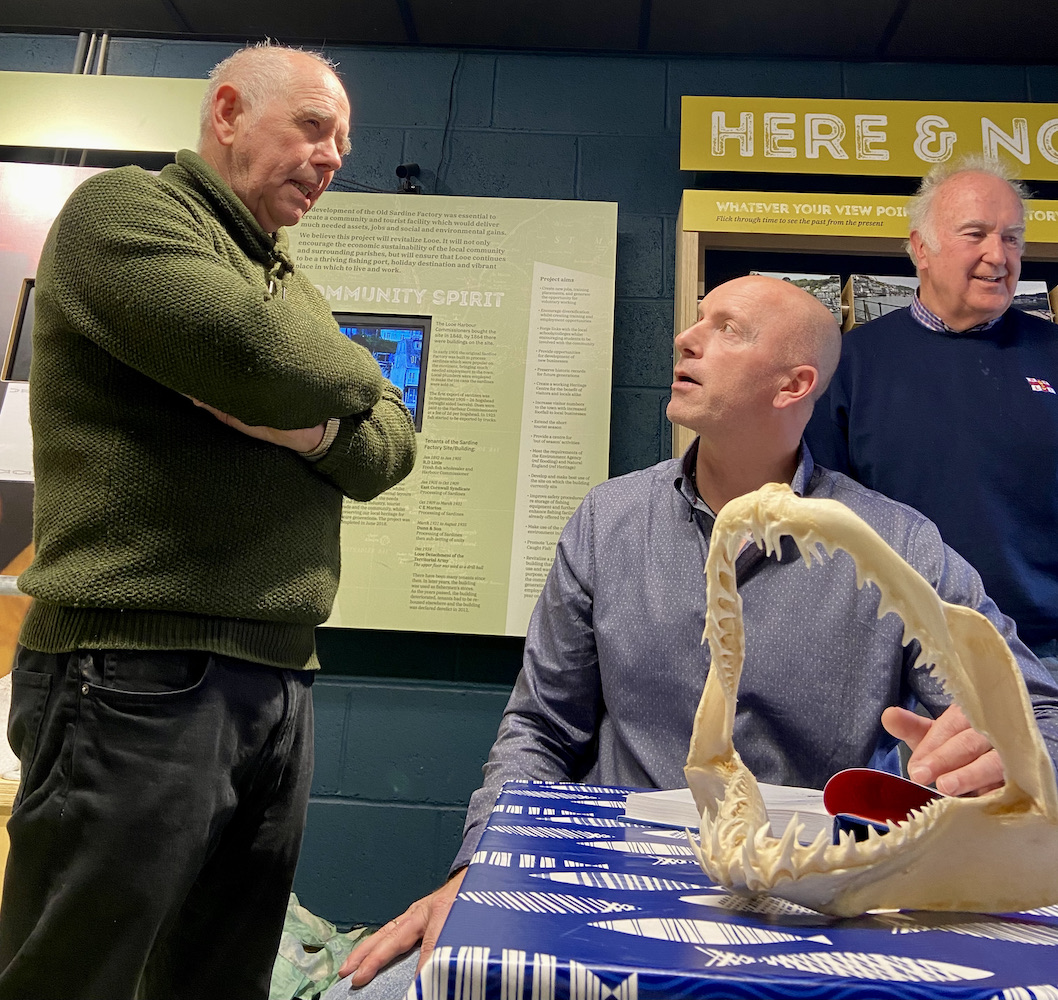
Looe has been the home of the Shark Angling Club Of Great Britain since its formation in 1953. The club’s founder was Brigadier J.A.L. Caunter, C.B.E. , M.C,. C.C. who wrote the book Shark Angling In Great Britain, published in 1961. The cover of the Mako! book comprises of a painting by Caunter that portrays a mighty mako leaping with a red sailed Looe shark boat drifting upon the sea reflecting a blue summer sky.
http://www.sharkanglingclubofgreatbritain.org.uk
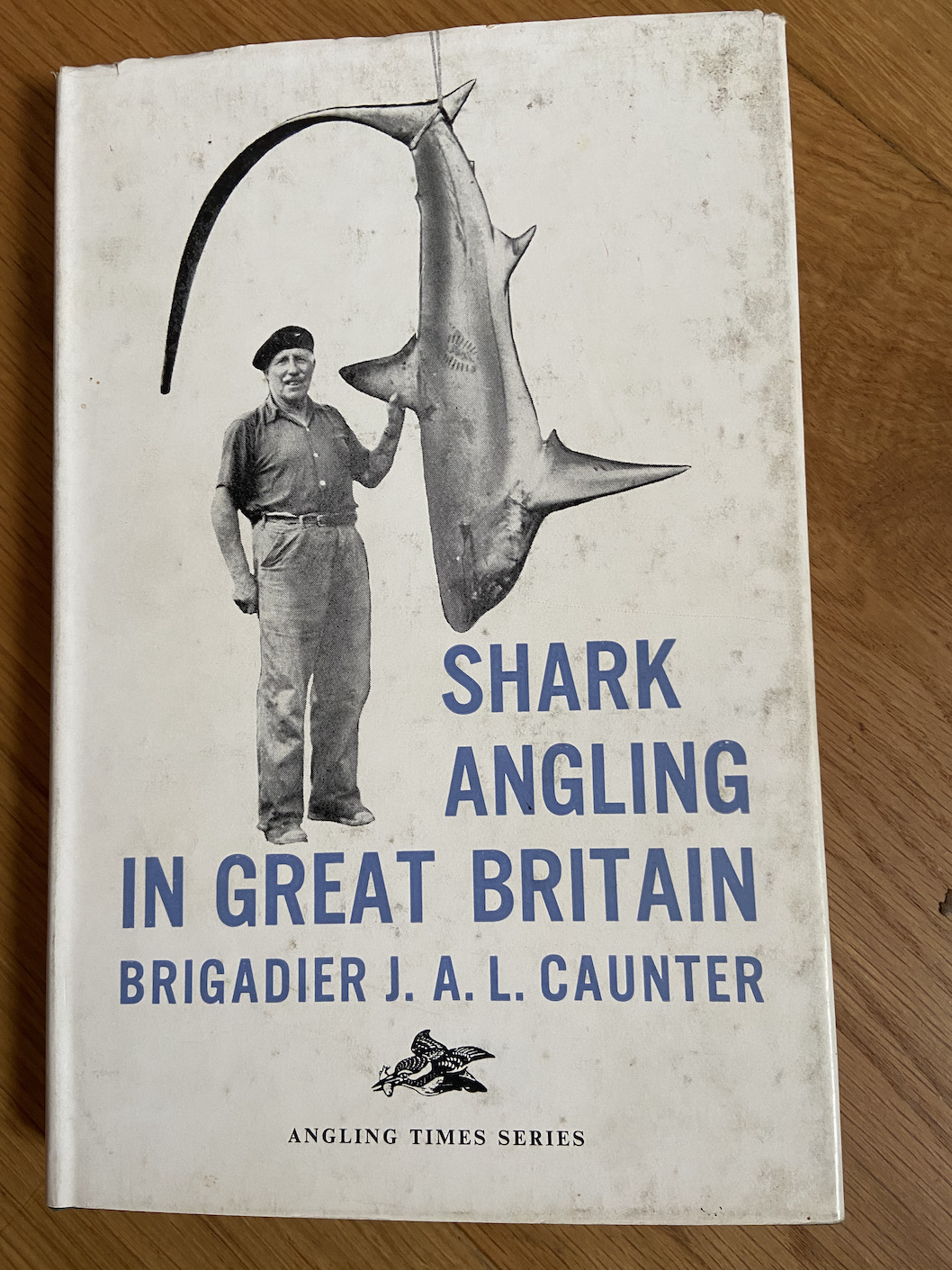
My own angling life started in Looe in the 1960’s when my parents visited Looe each autumn. Like Ian I gazed at the shark brought ashore each evening and dreamt of setting out one day to catch these monsters of the deep. I caught mackerel and garfish from the Banjo pier in those formative years and hold those treasured memories in my mind’s eye.
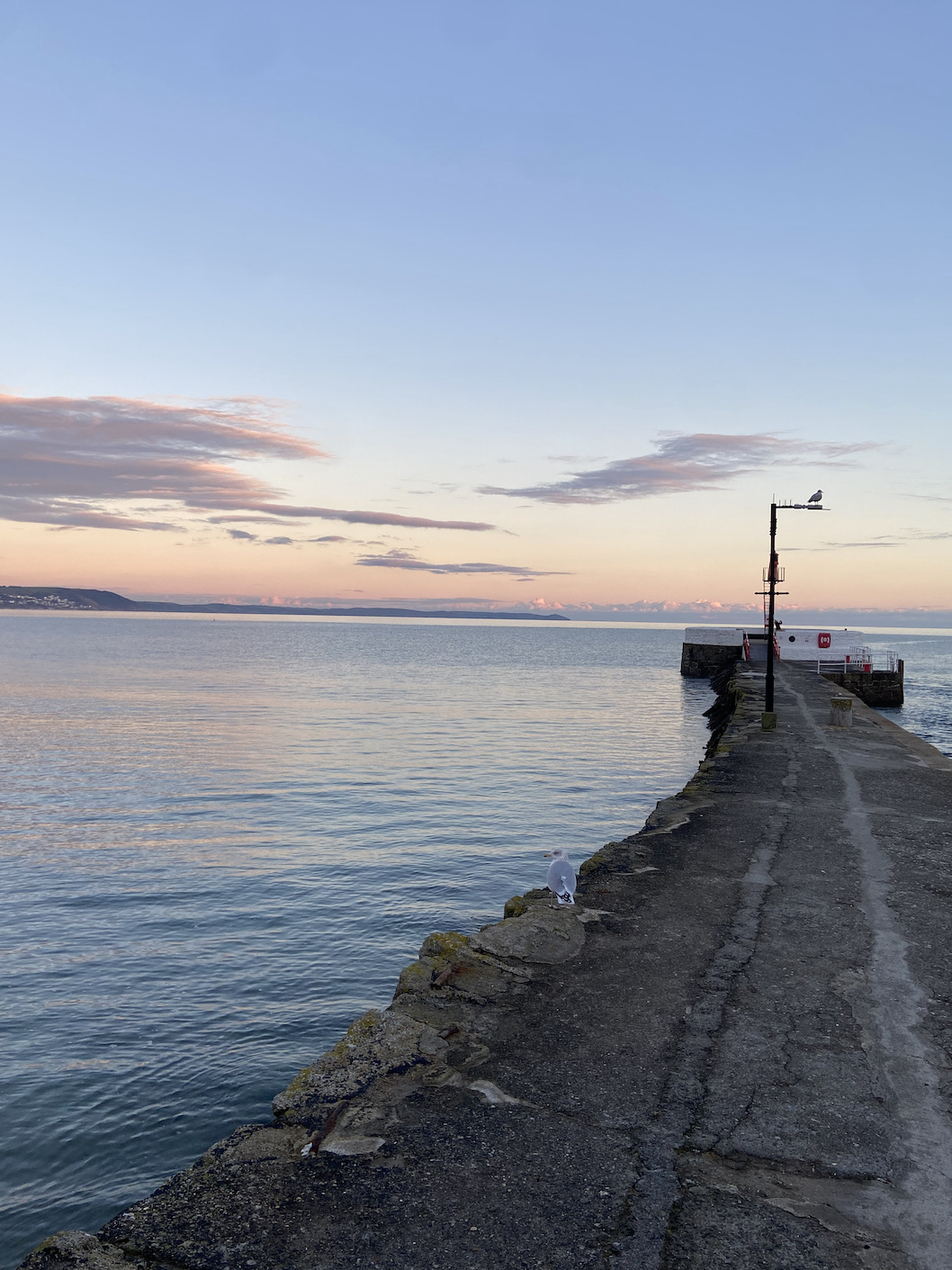
On the distant horizon on those autumn evenings I saw the rhythmic flashing of the Eddystone lighthouse. As a young angler I yearned to fish those mysterious waters where mighty shark swim. Many years later I returned and set out from Looe to catch blue shark and succeeded in catching a blue in excess of the SACGB qualifying weight. To hook a mighty mako must be one of anglings greatest thrills and to read of such battles at sea feeds the dreams.
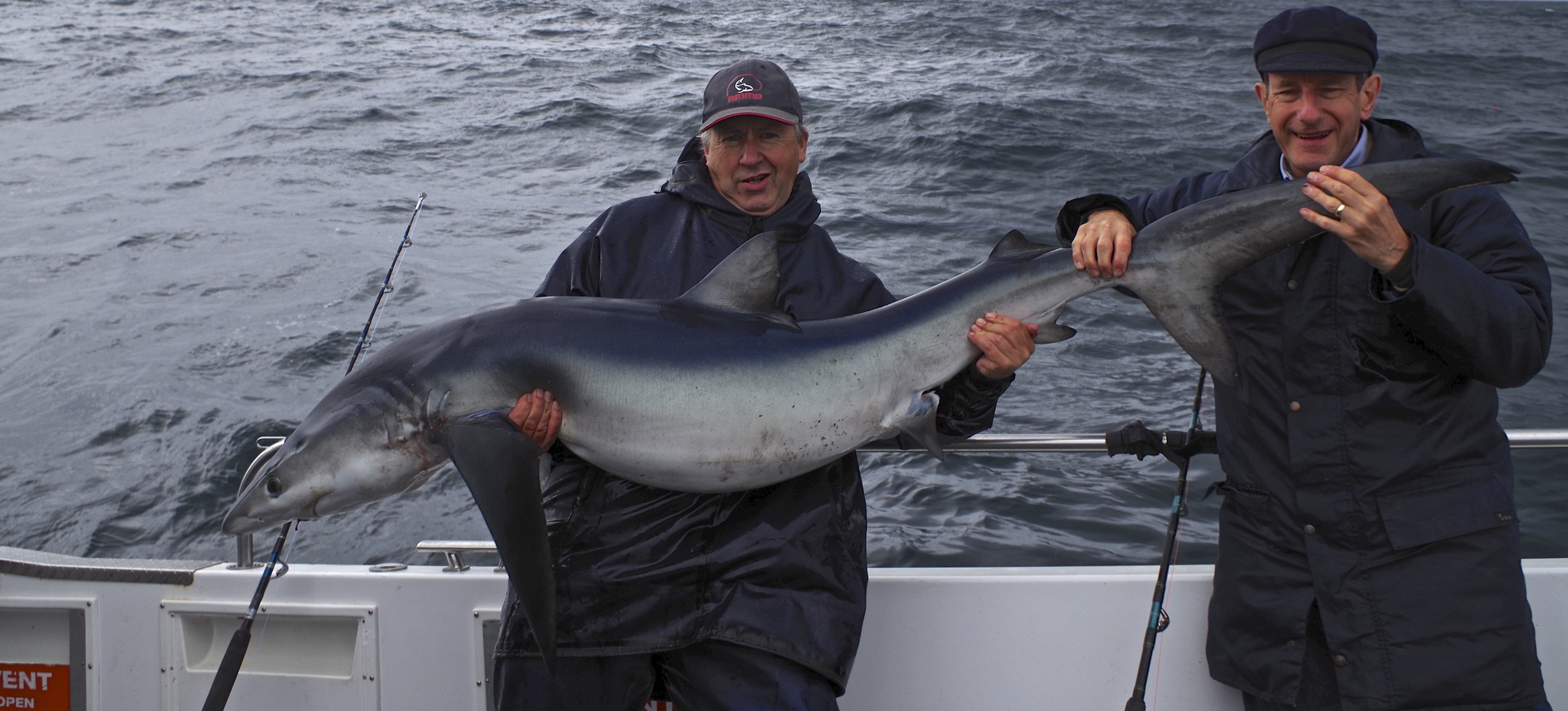
The recording of history is important and in Ian’s book he tells history as it was warts and all. This is how it should be for times change and we should not look back and judge previous generations too harshly. Whilst I feel a sense of unease as I look at the pictures of shark carcases hung up on the weighing station I know that if I had been there in those days I too would have taken part for it was as it was in those days.
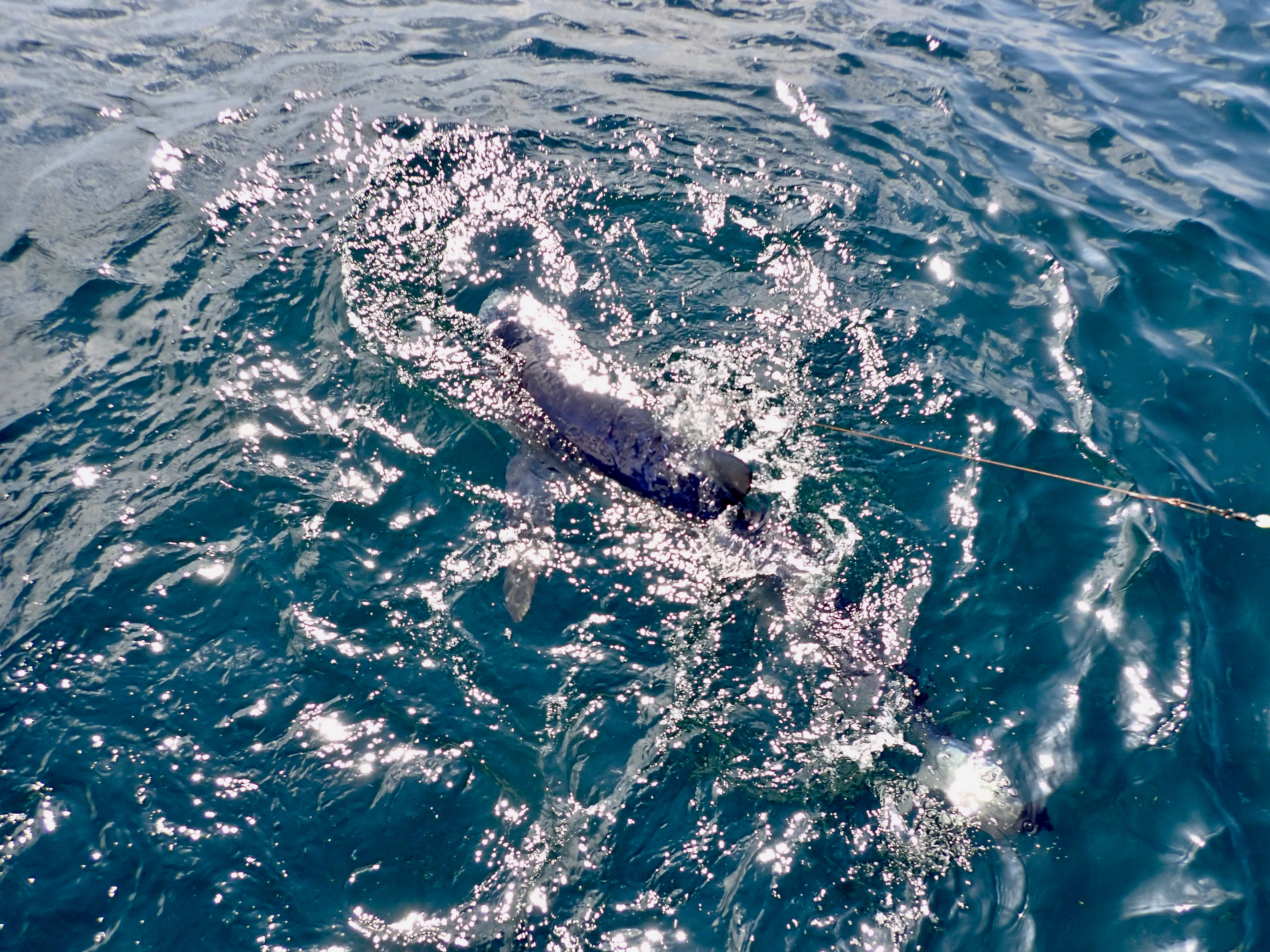
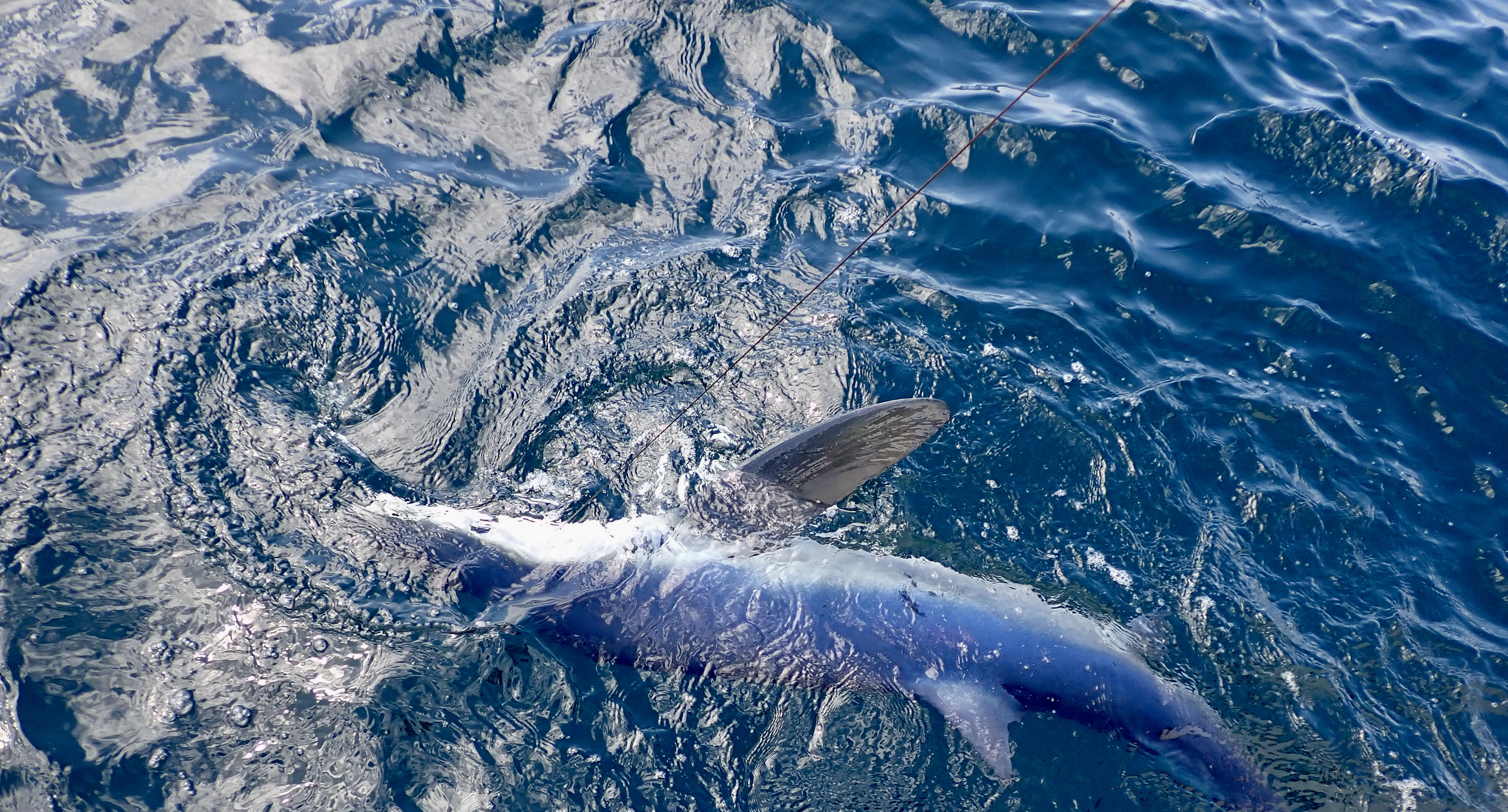
Looking through the many pictures in Ian’s book I recalled the names of many boats I had seen moored upon the quayside. Paula, Our Daddy and Irene amongst names that brought a fond recollection of times long since passed.

Shark angling has moved on and conservation is top of the agenda. The Pat Smith Data base set up by John McMaster and Dr Simon Thomas is recognised as a valuable source of information in learning about shark migration and populations. https://www.patsmithdatabase.com/about

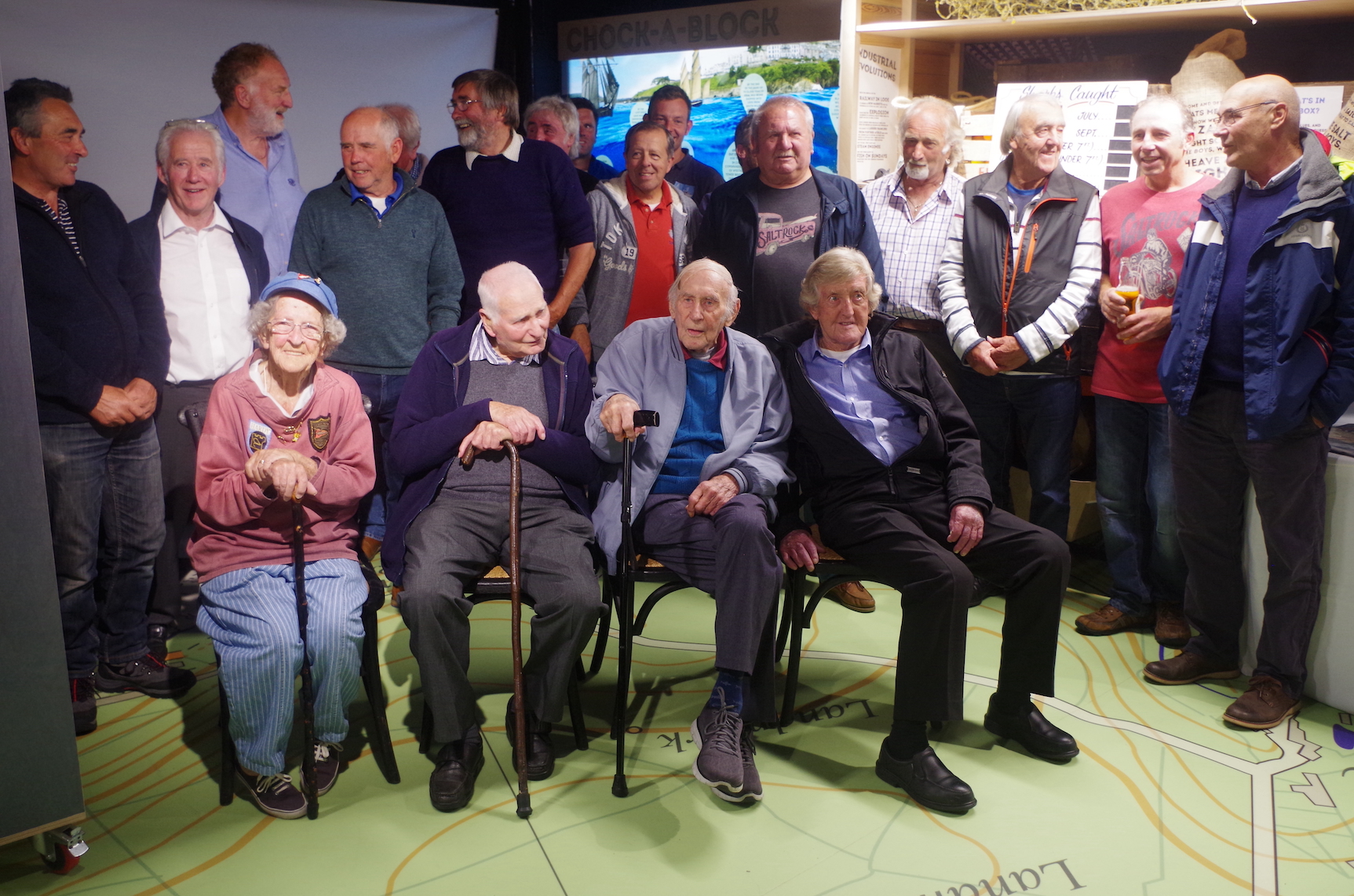
Whilst writing this feature I researched the inspiration for Captain Quince in Peter Benchley’s ‘Jaws’ book who I believed to be Frank Mundas. Interestingly Mundas who built his reputation as a shark hunter and set a world record when he caught a 3,427lb great white shark off Montauk in the US. Frank Mundas was to become a passionate shark conservationist. There is perhaps a strange irony in this relationship between hunter and prey. Several years ago I attended a fascinating talk by Paul Boote and Jeremy Wade. During the talk about the mighty mahseer of India a book by Jim Corbett was mentioned. ‘Man-Eaters of Kumoan is an enthralling read that tells of Corbett’s tracking and killing of numerous tigers. Corbett’s books are enthralling and paint a fascinating picture of the relationship between hunter and prey in far off days. Like Mundas Jim Corbett became a passionate conservationist working tirelessly for the protection of tigers. His name lives on with the Jim Corbett National Park in Uttarakhand named in his honour.
As climate change impacts upon our oceans the future of shark angling is as it should be, a mystery. Who knows what lurks beneath as the boat drifts in the dubby’s oily slick?

